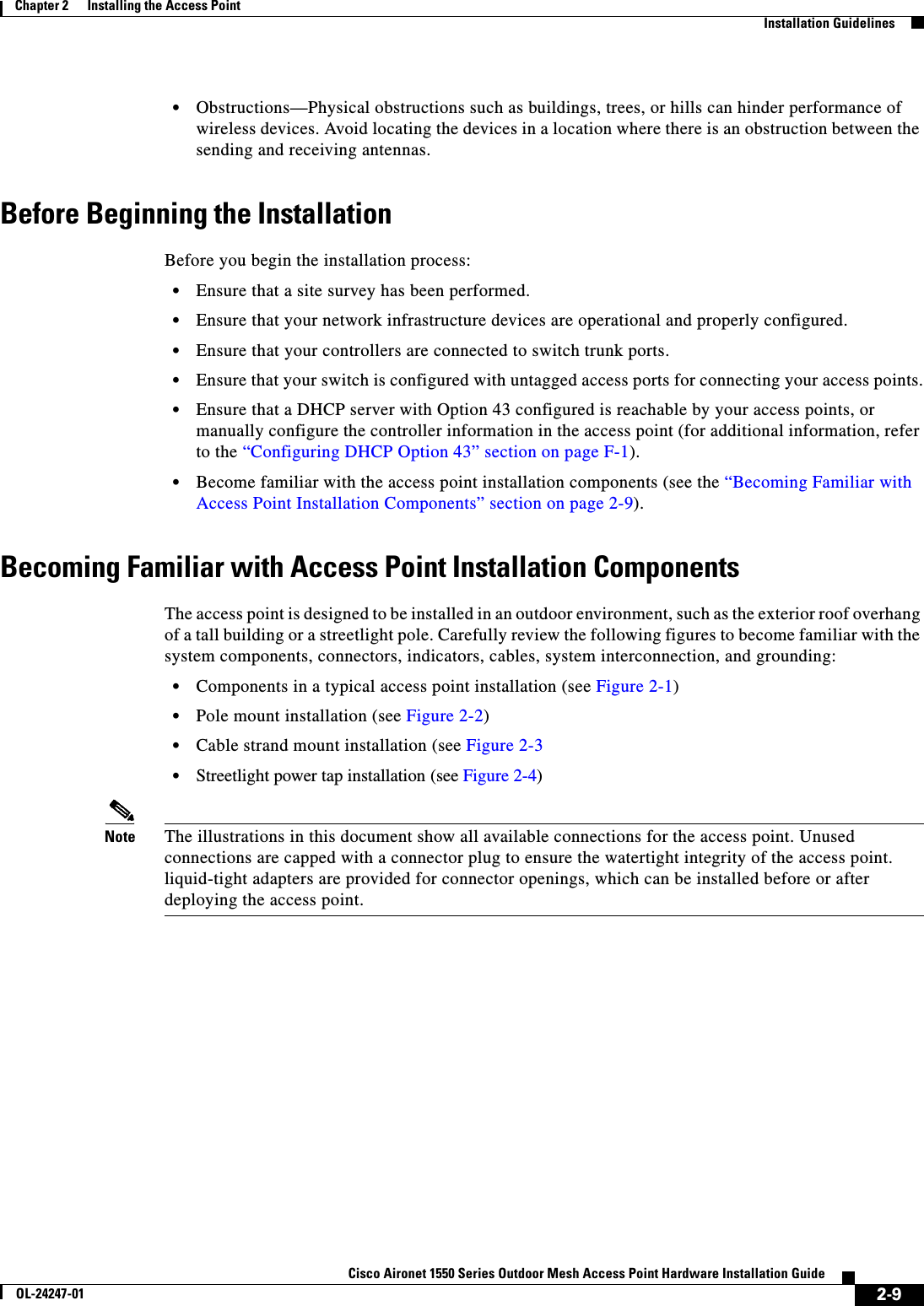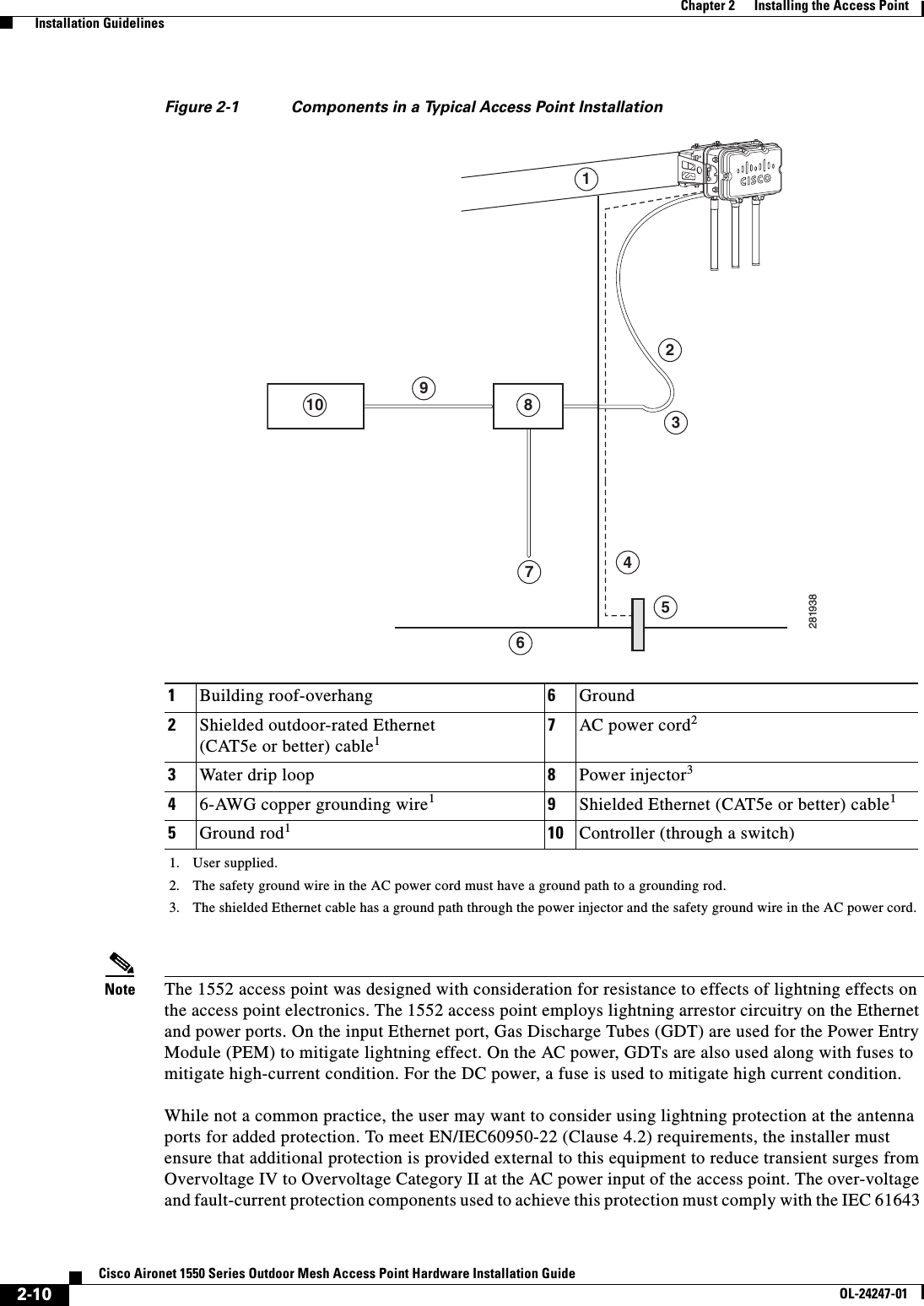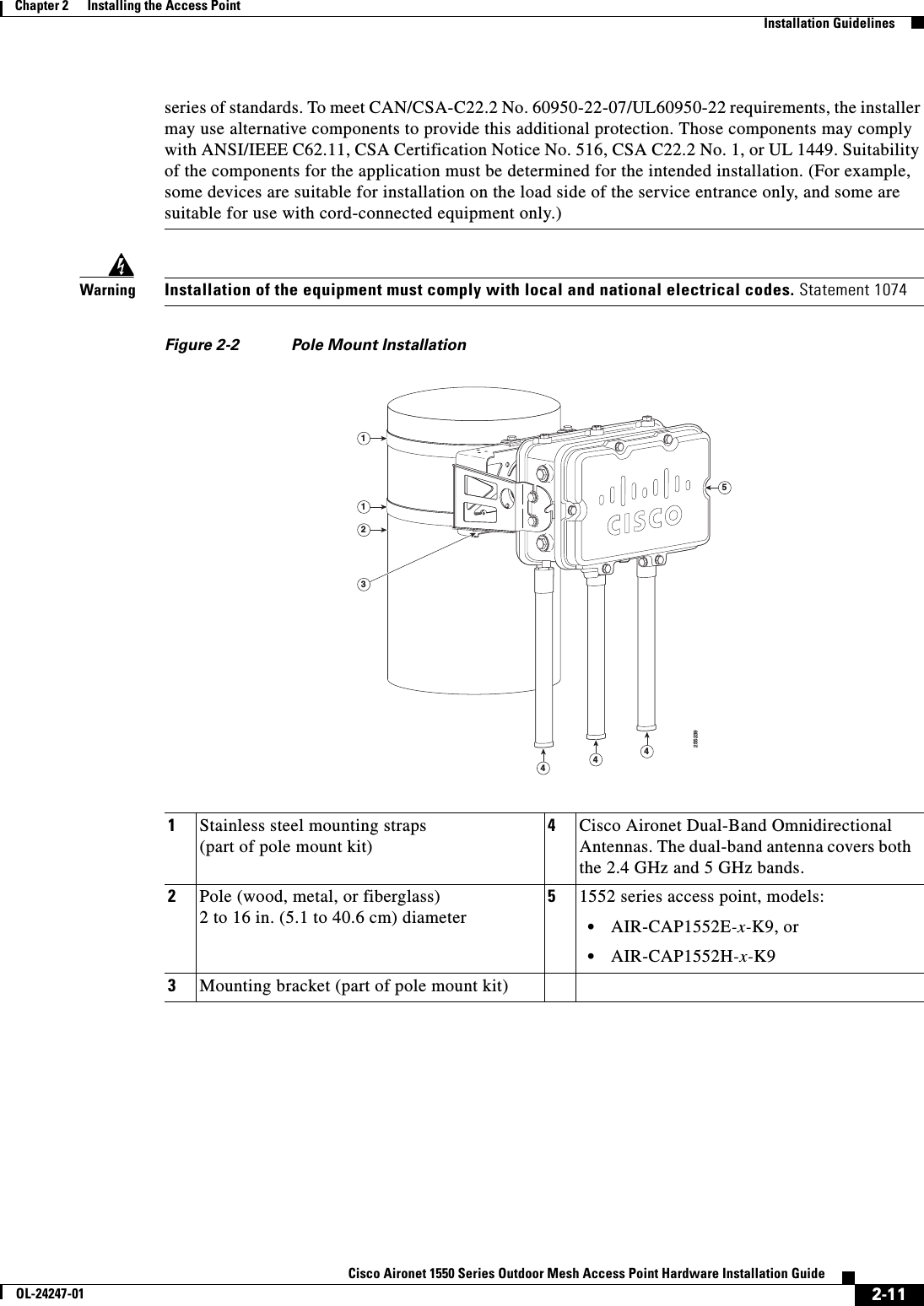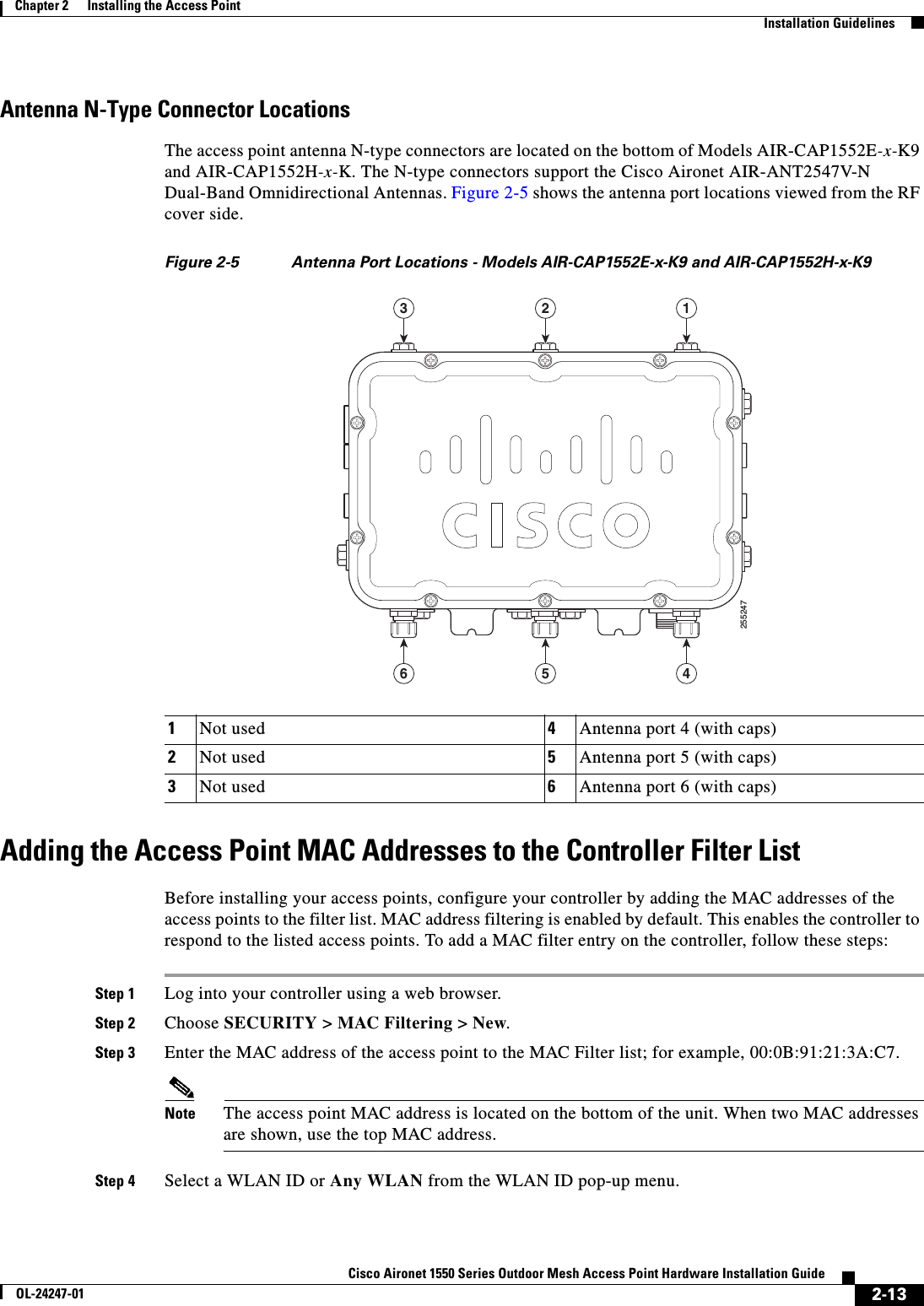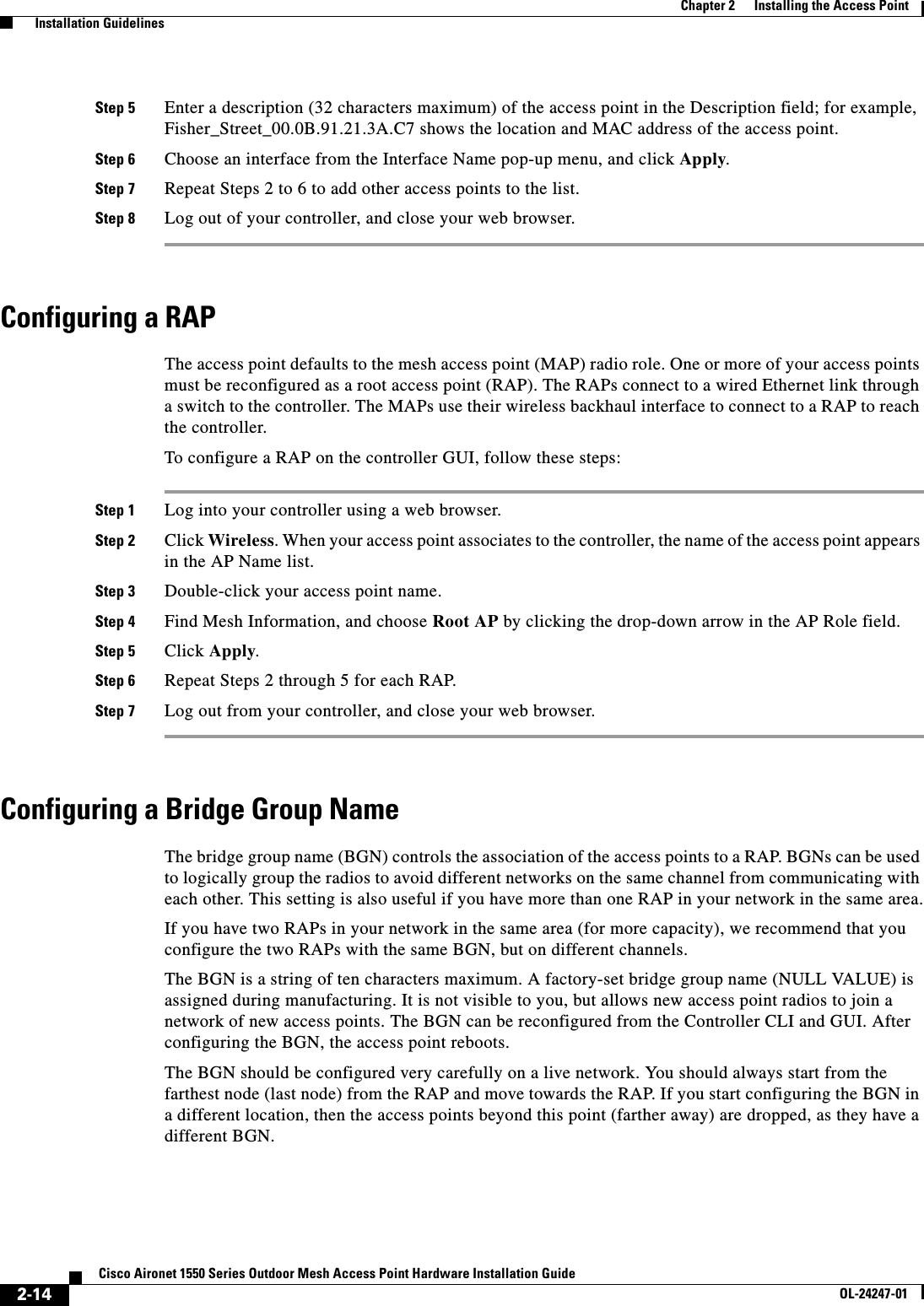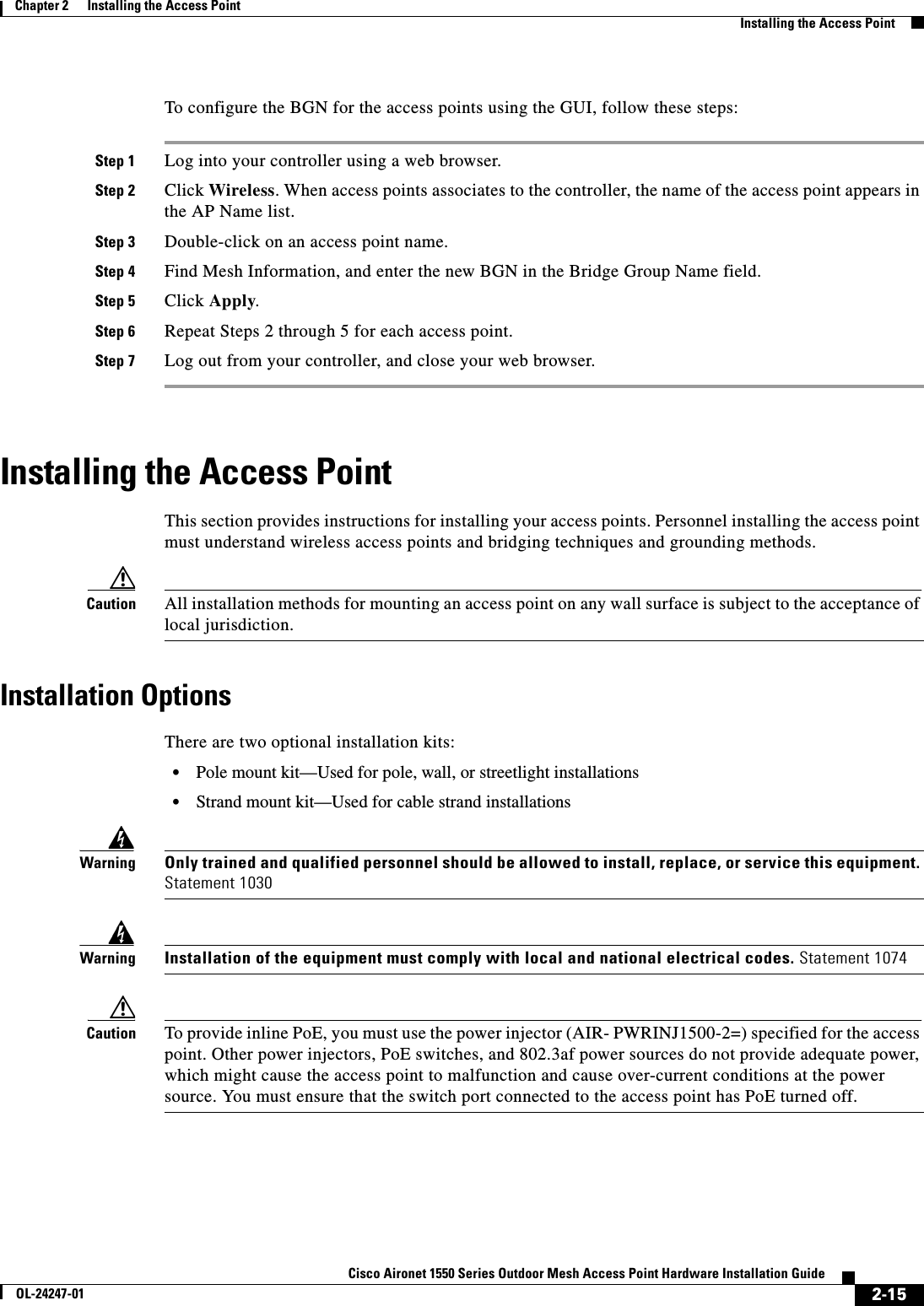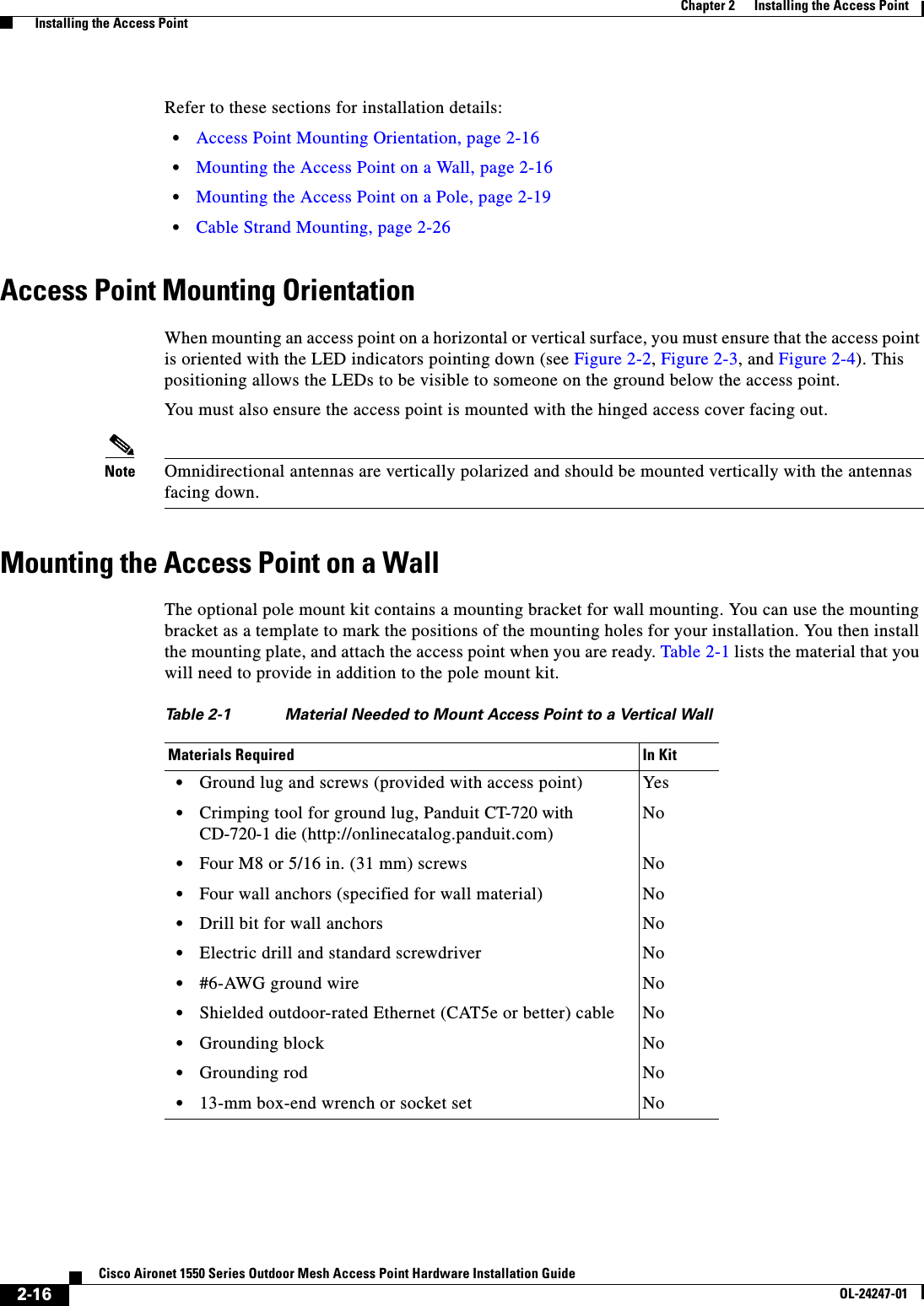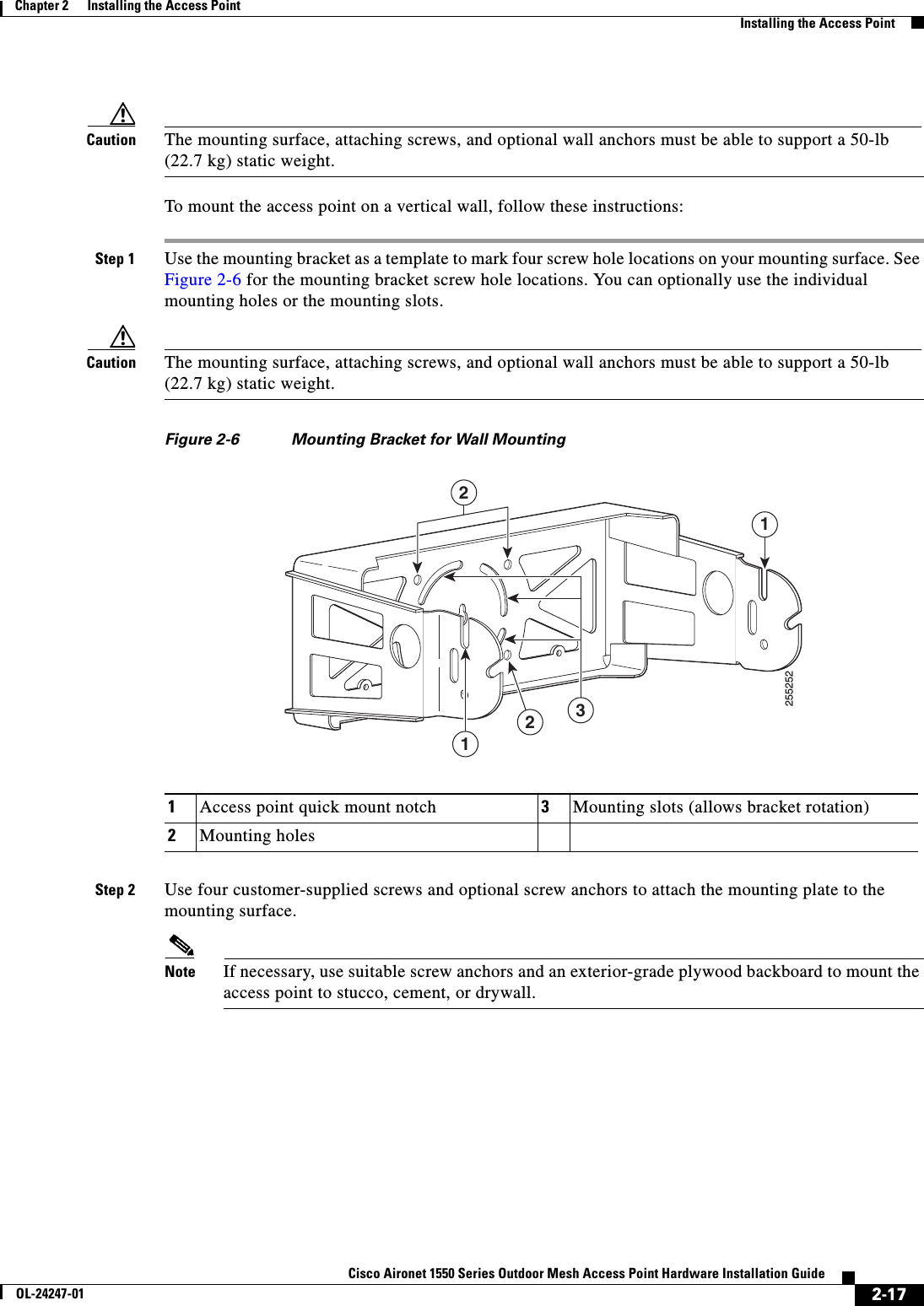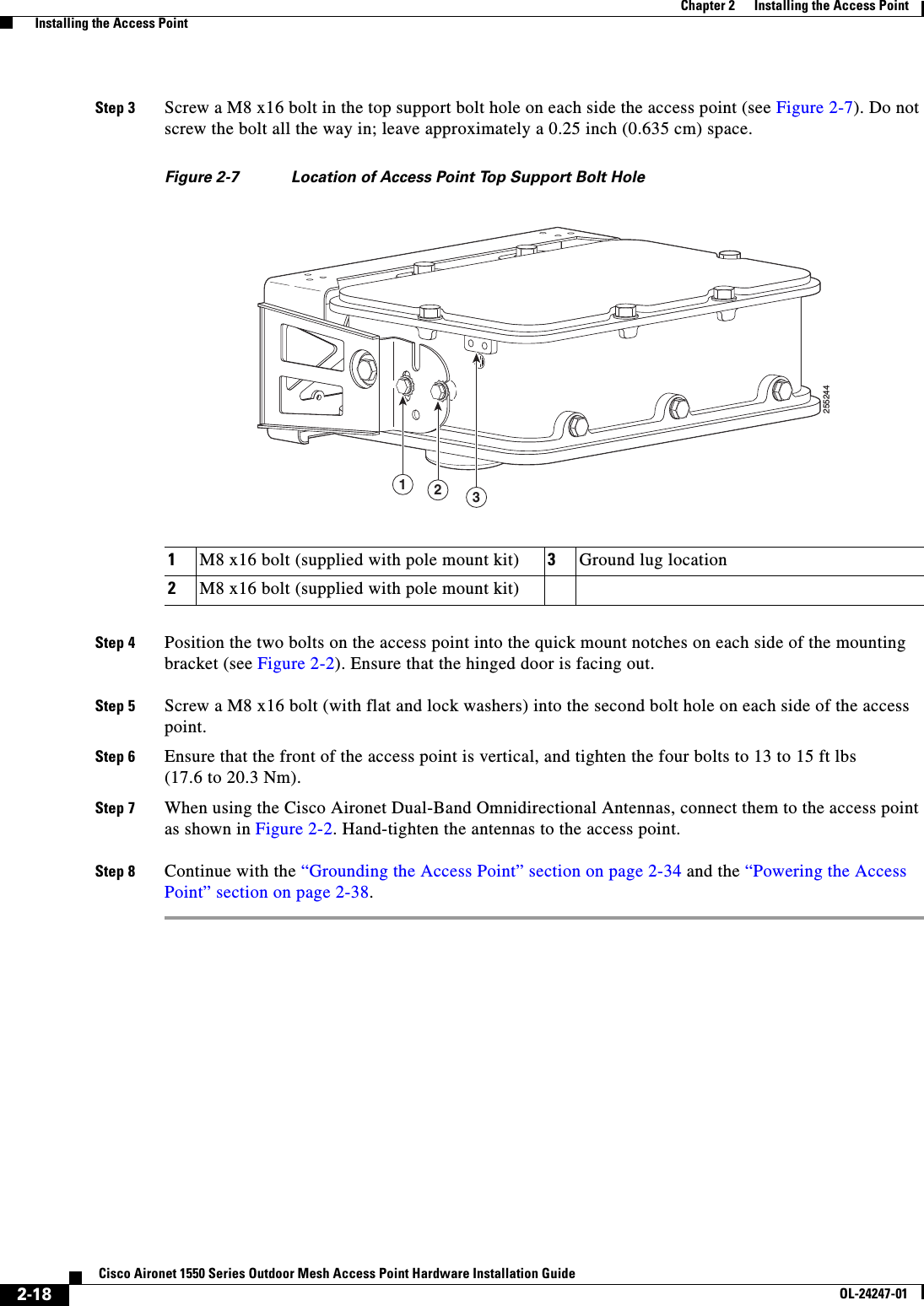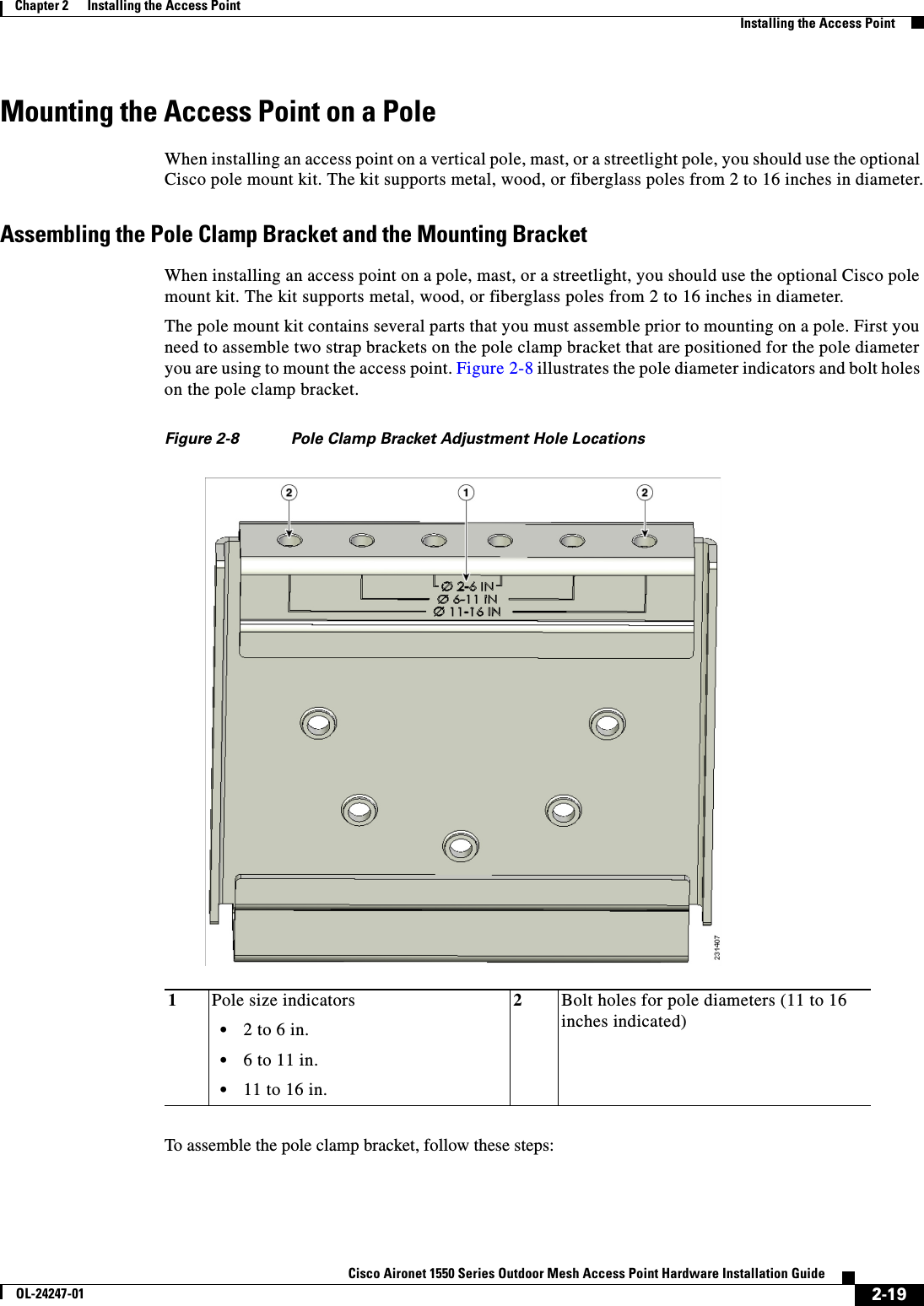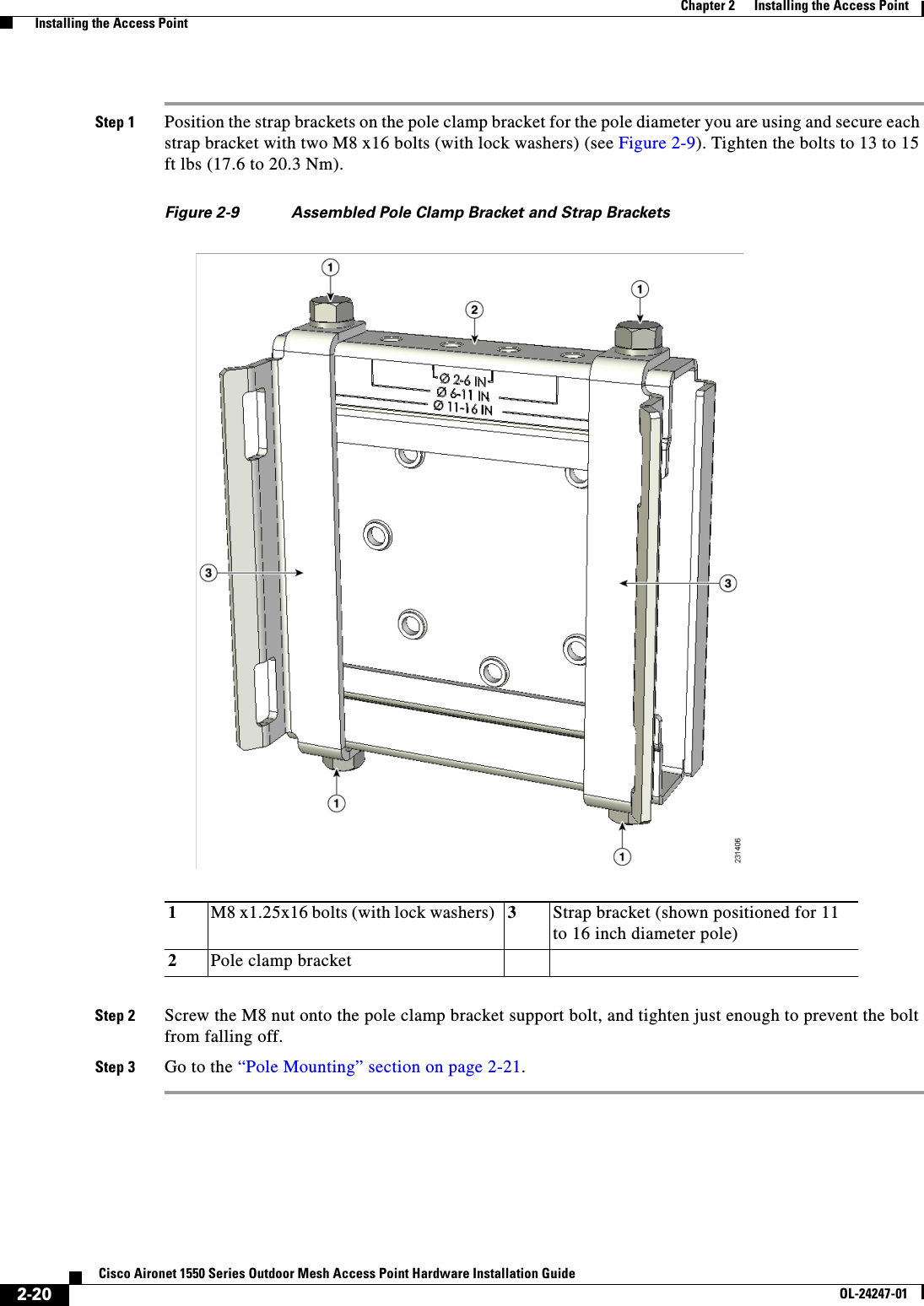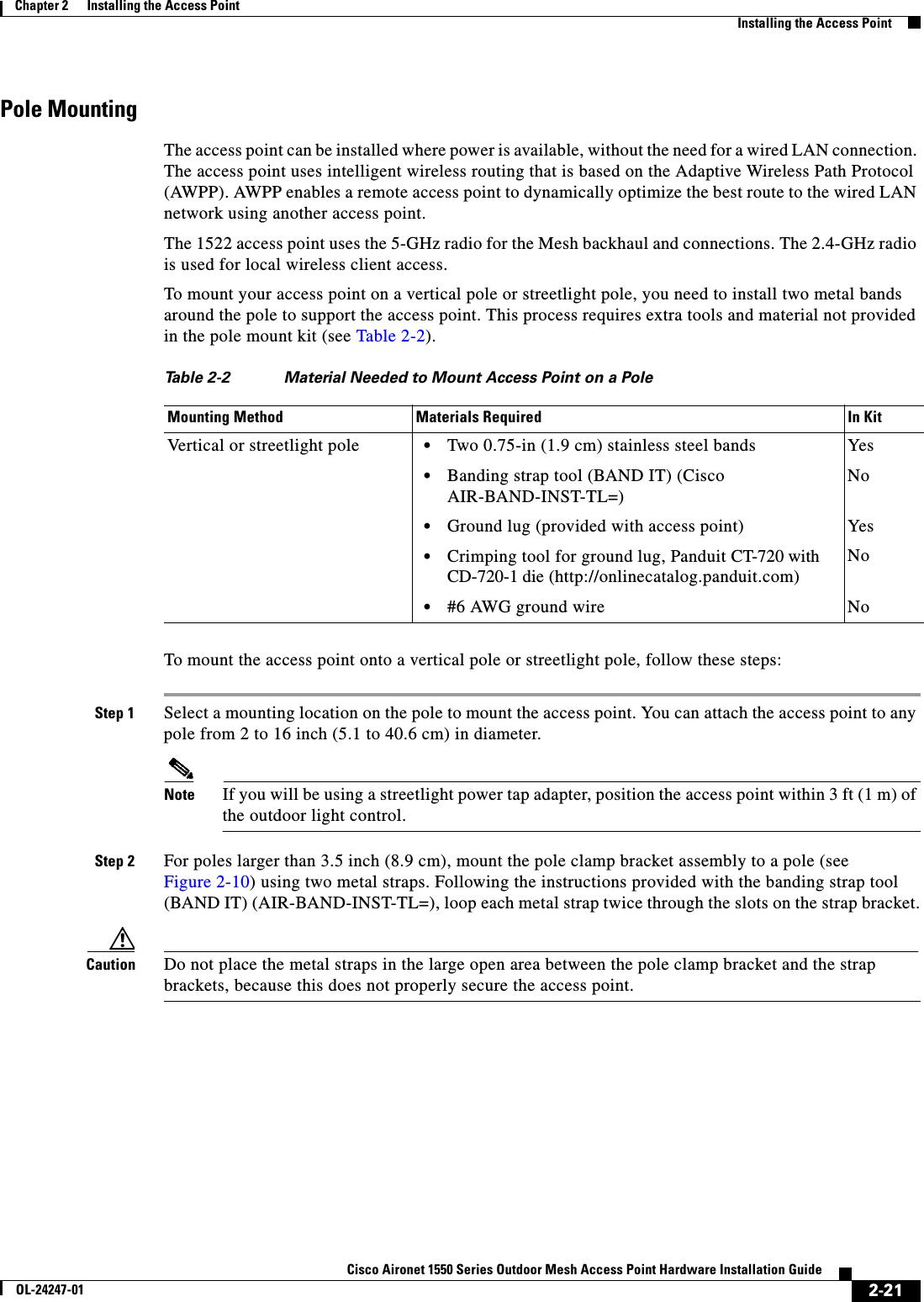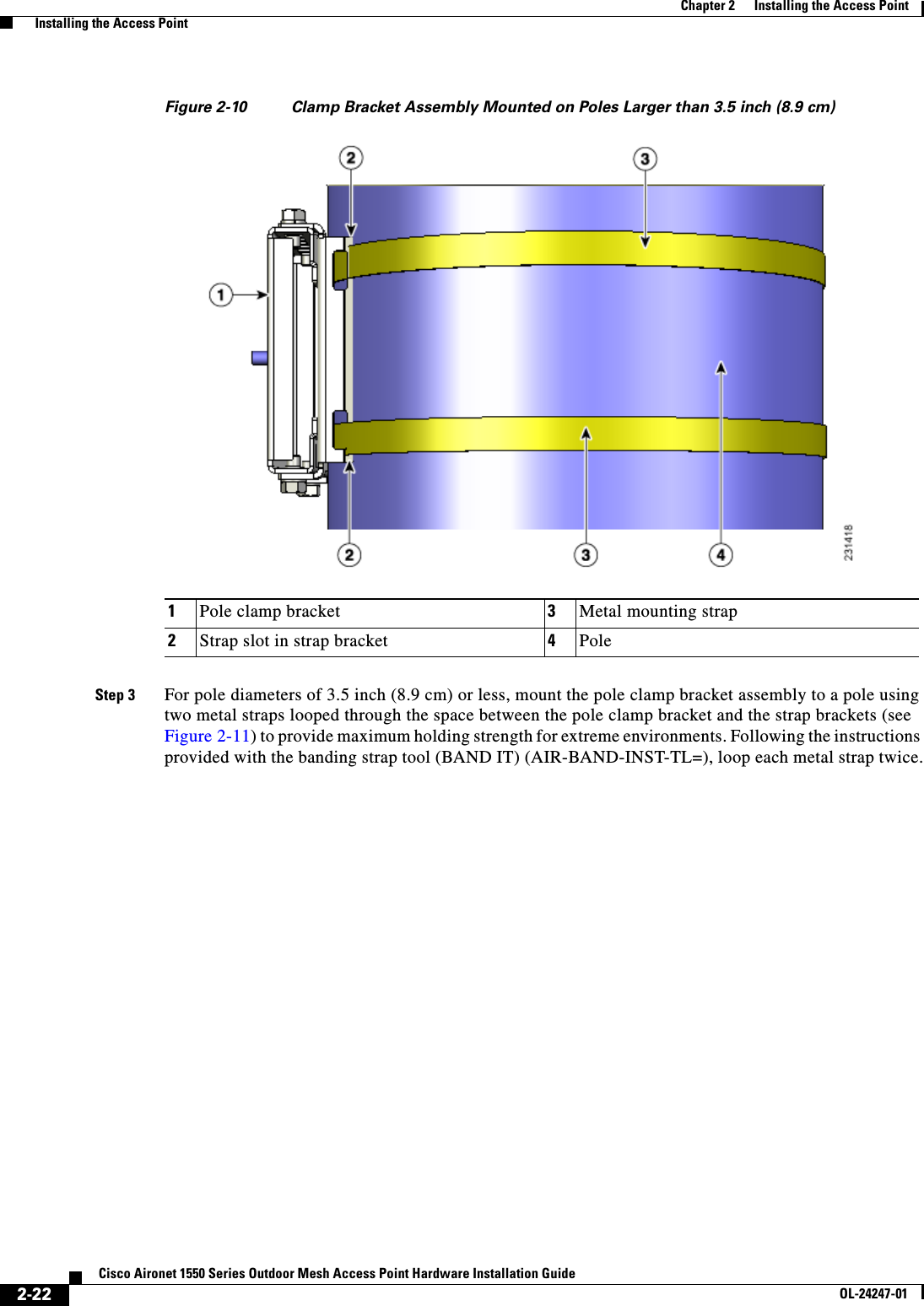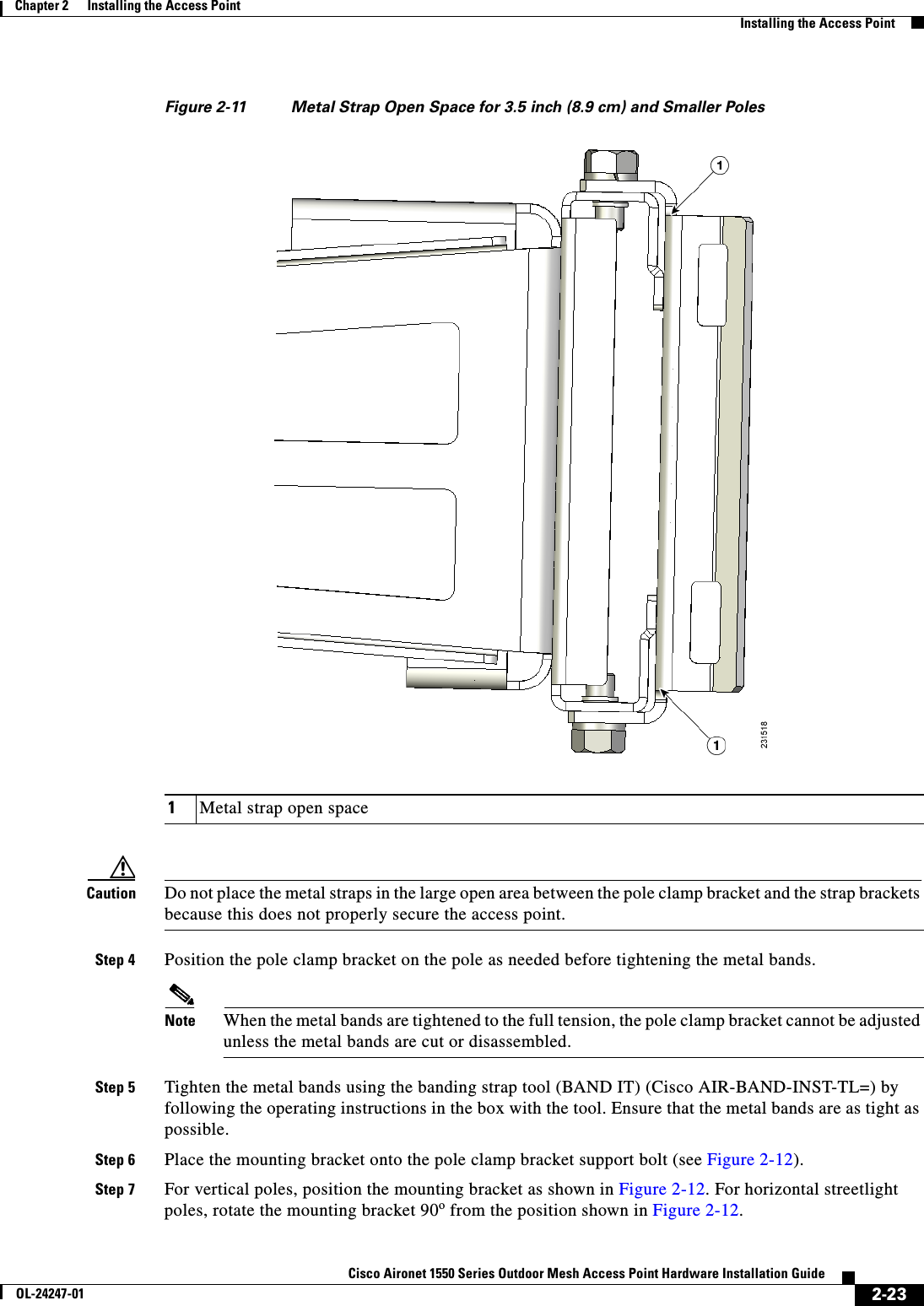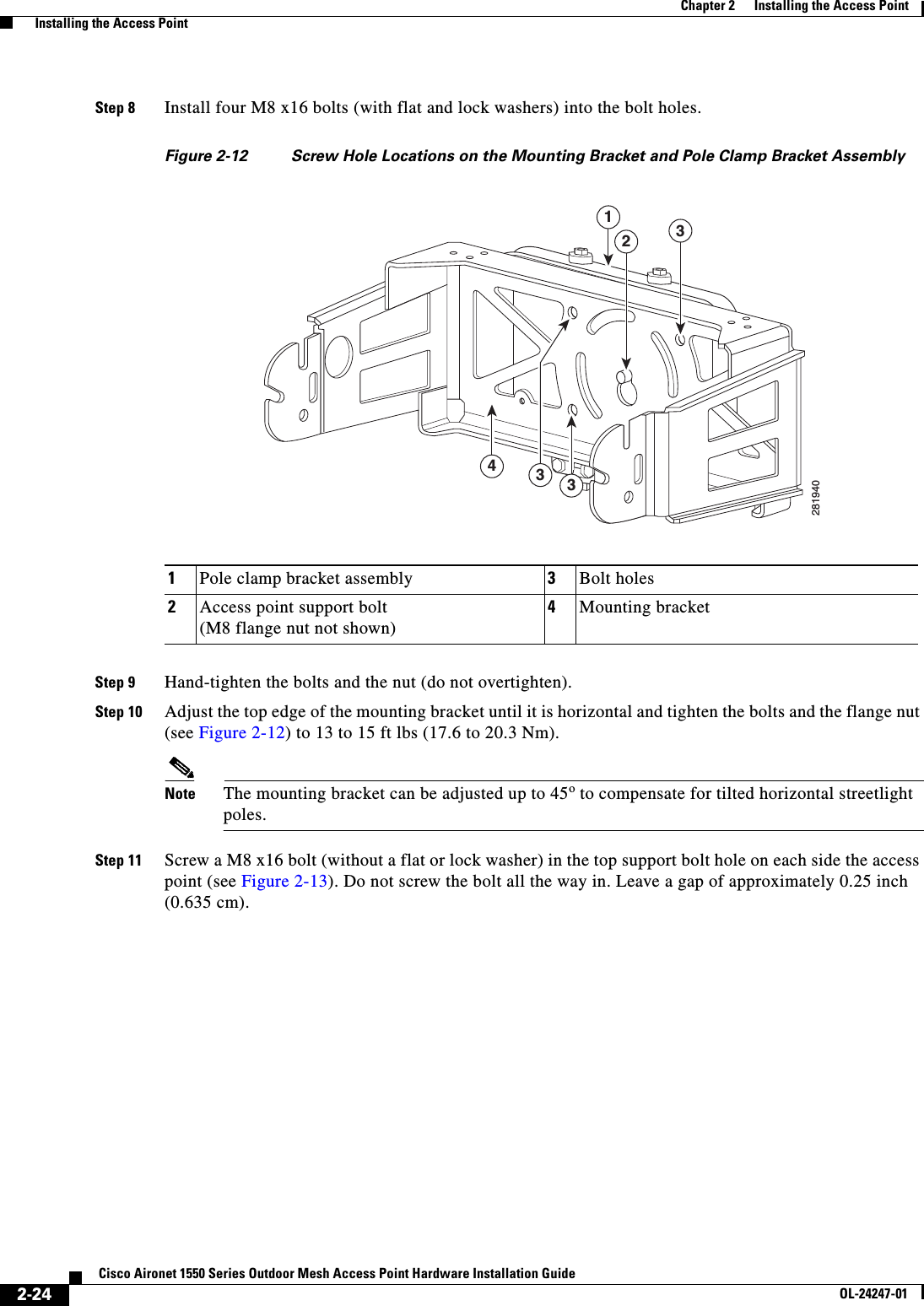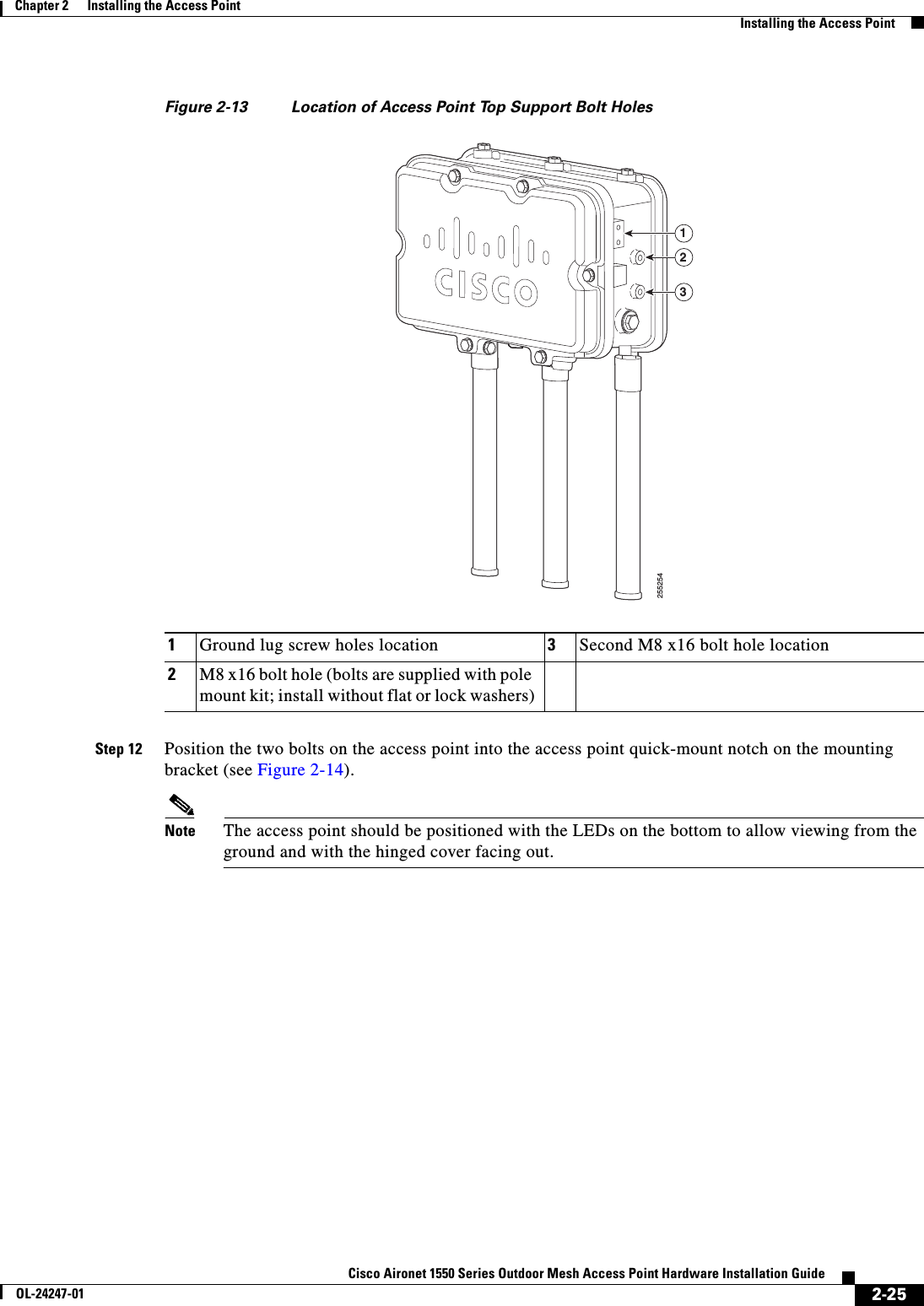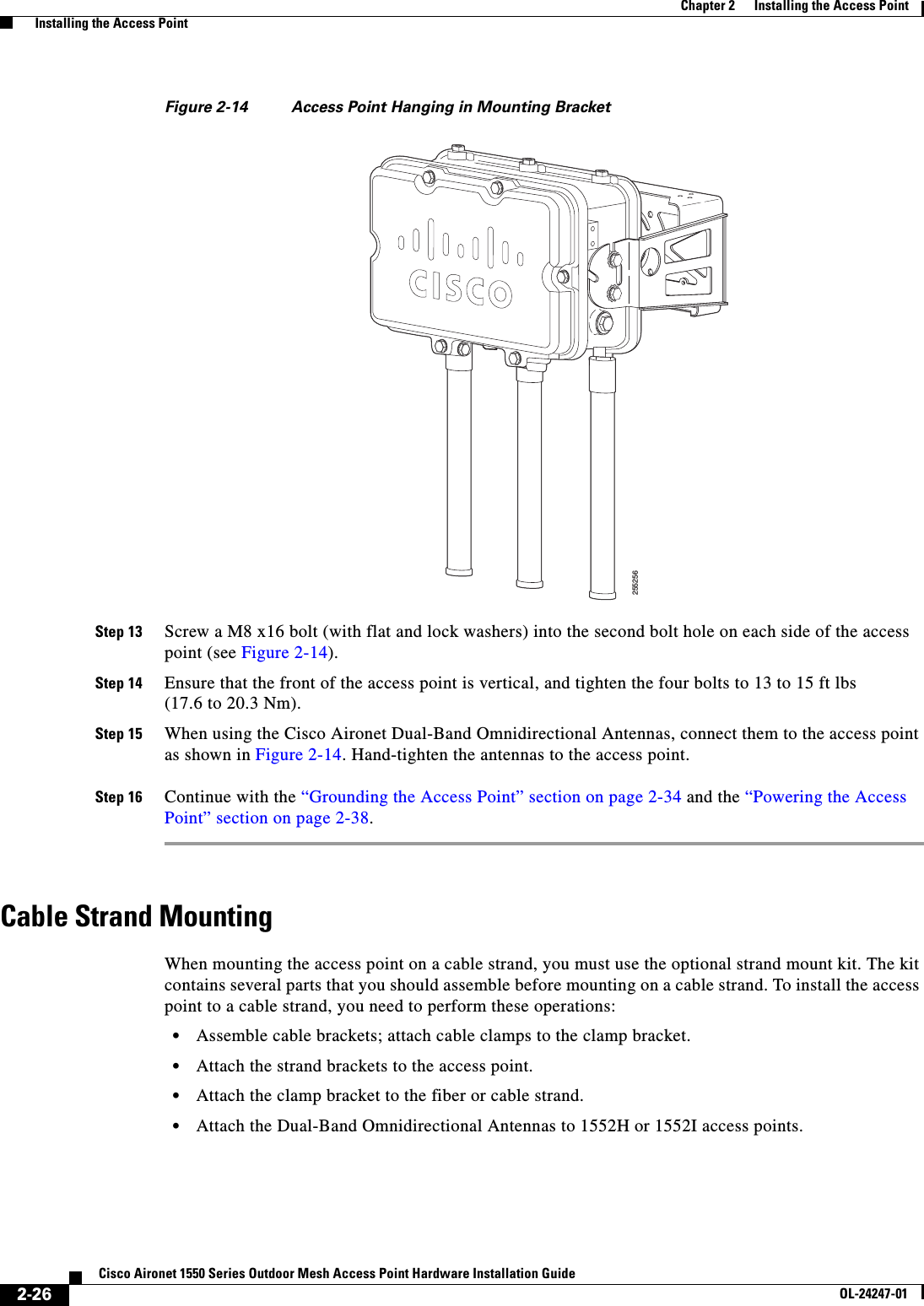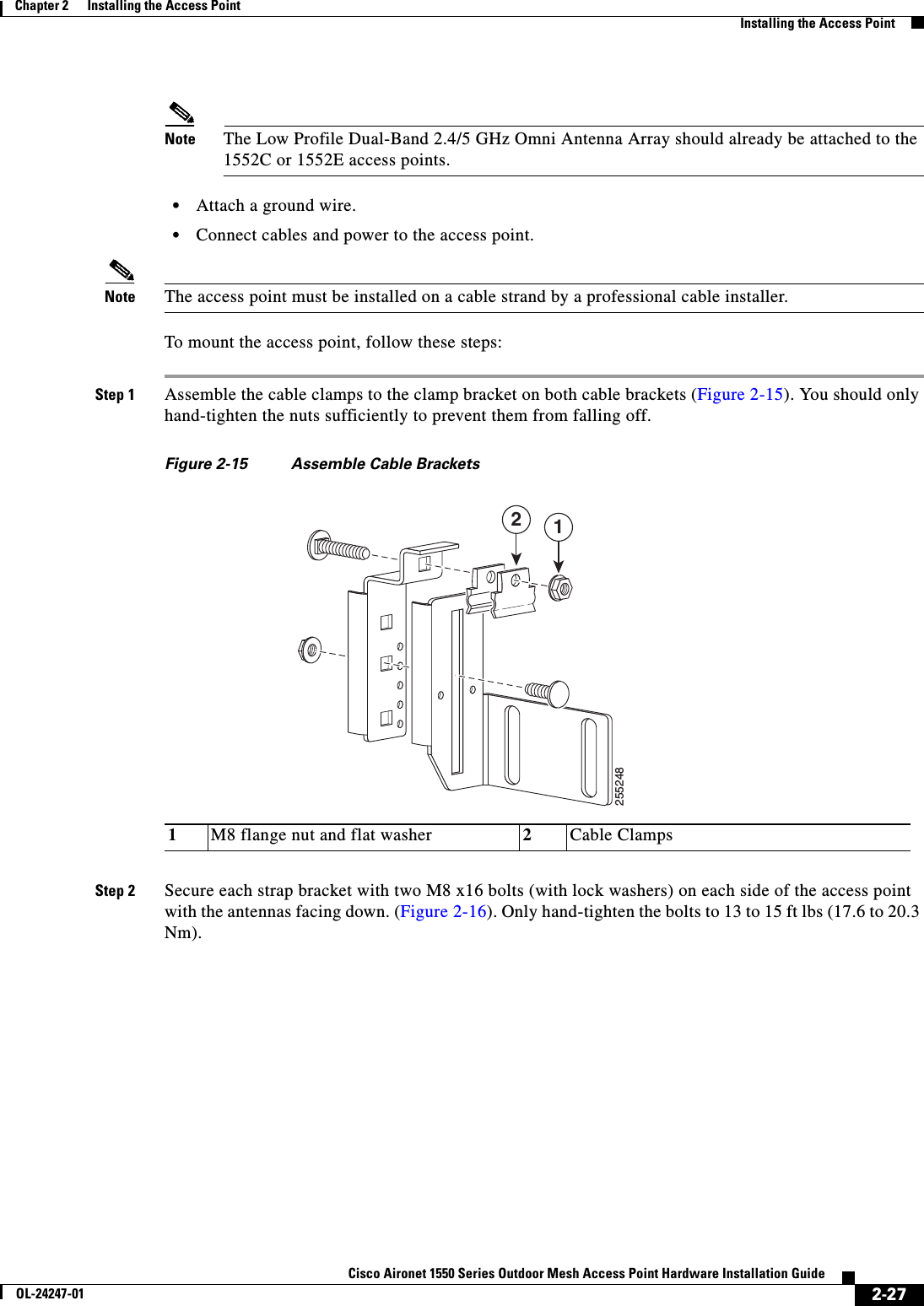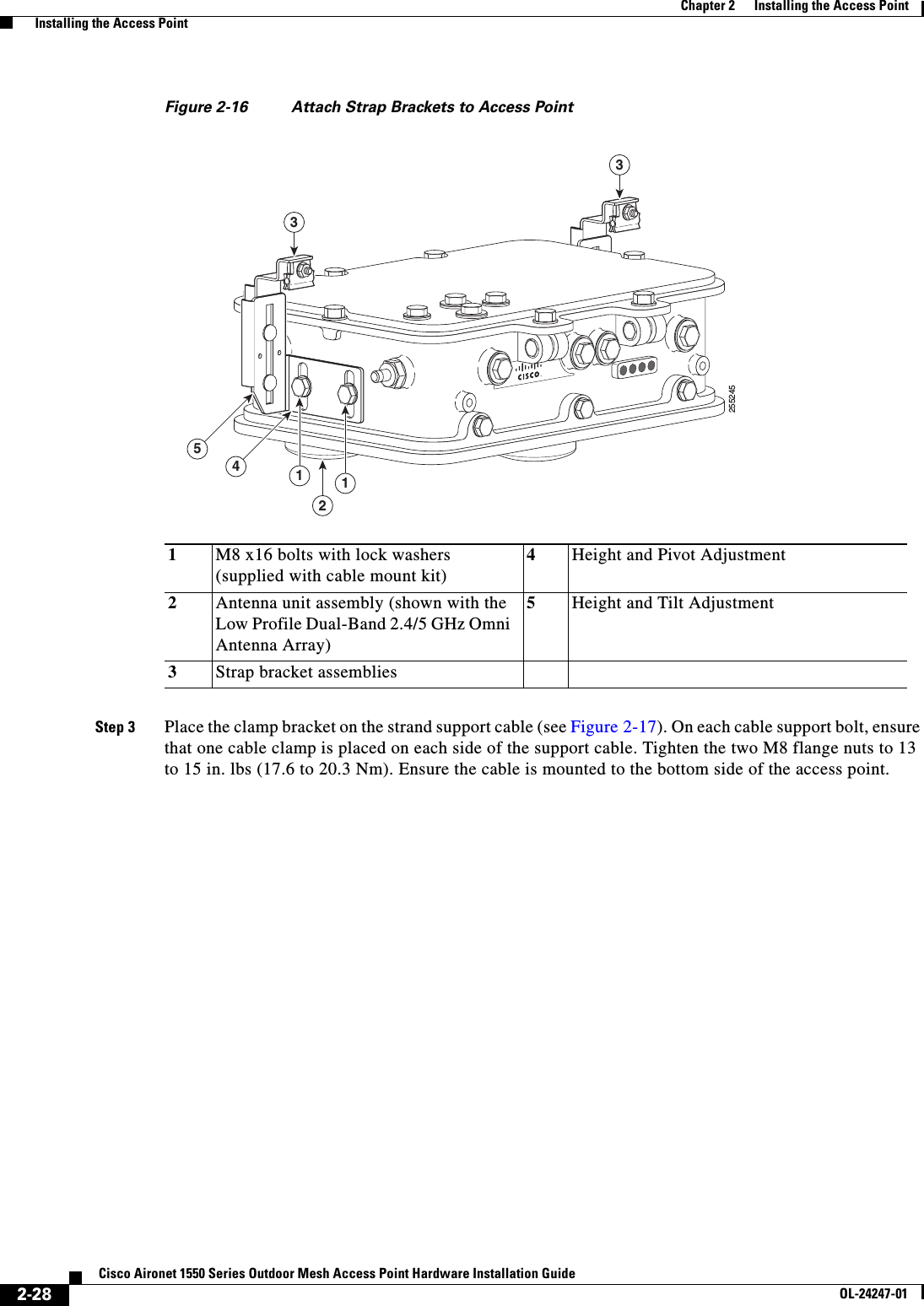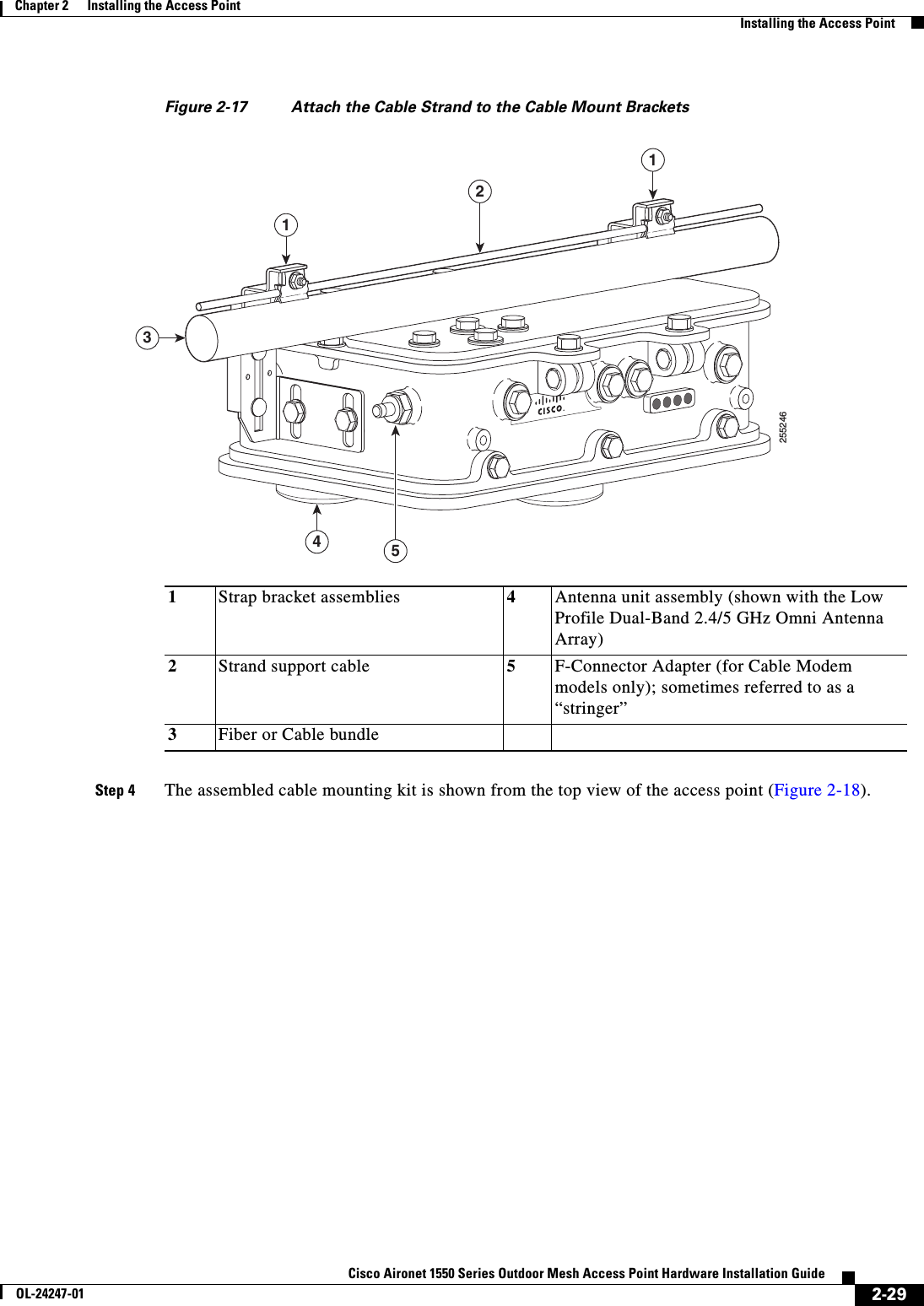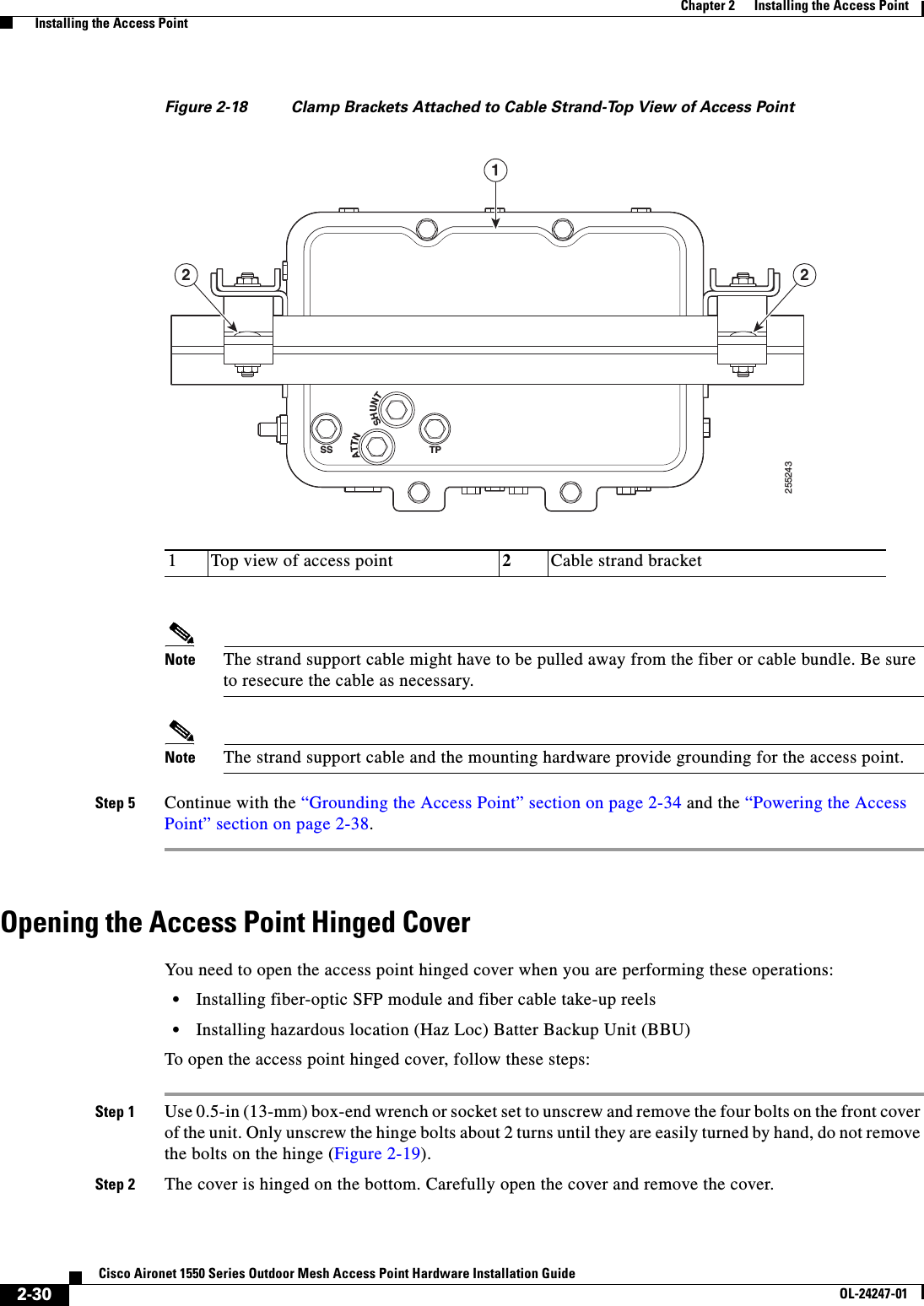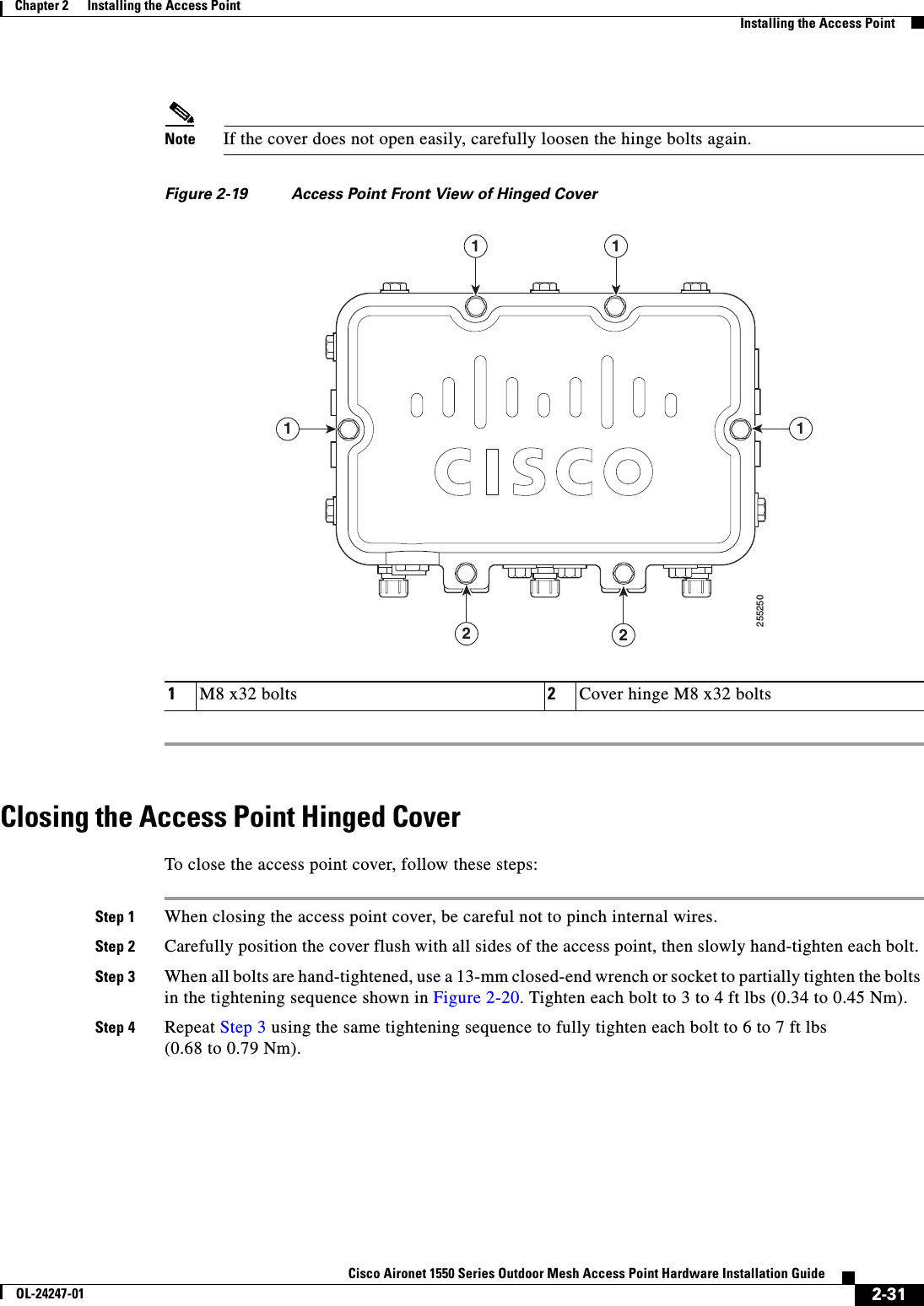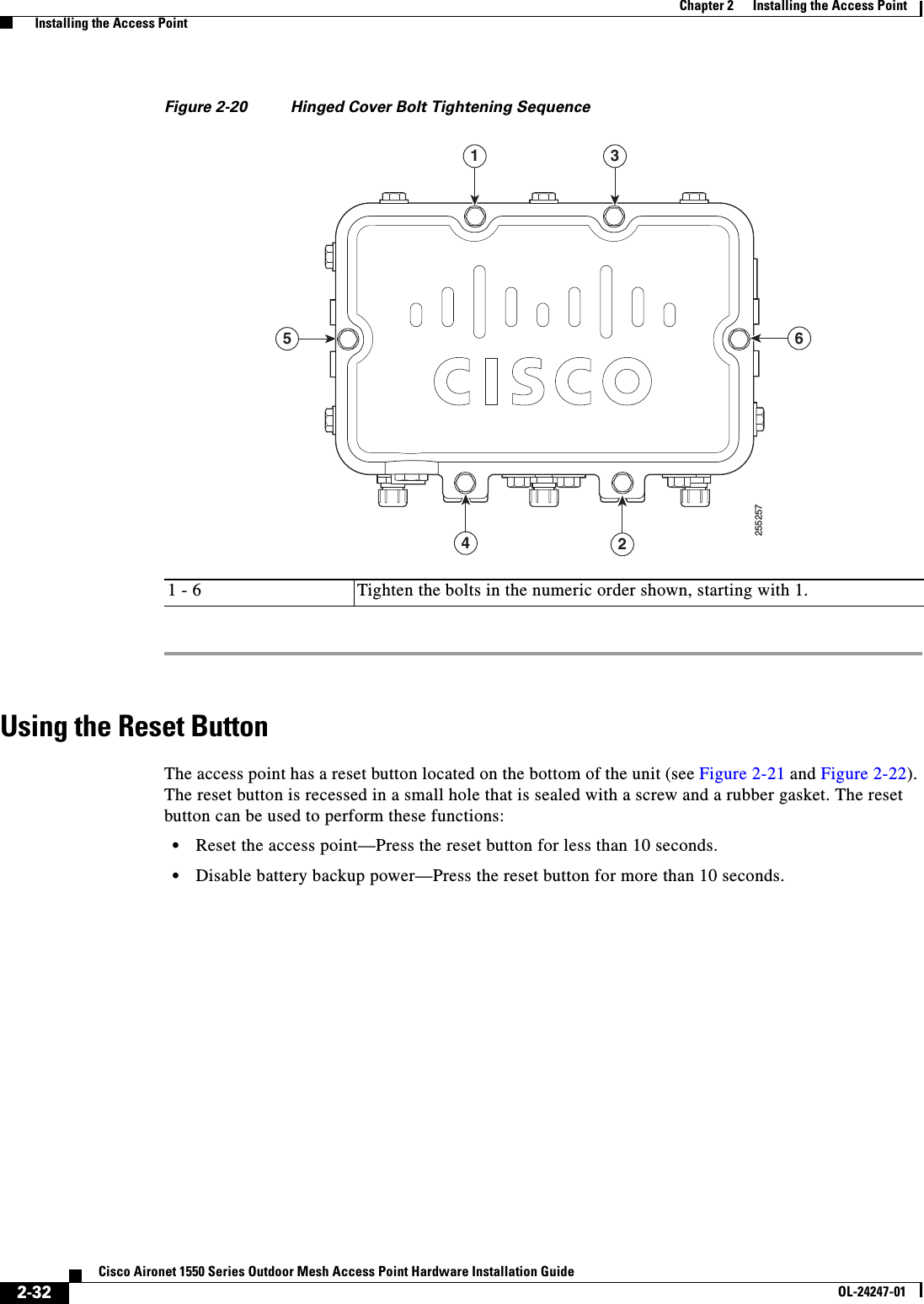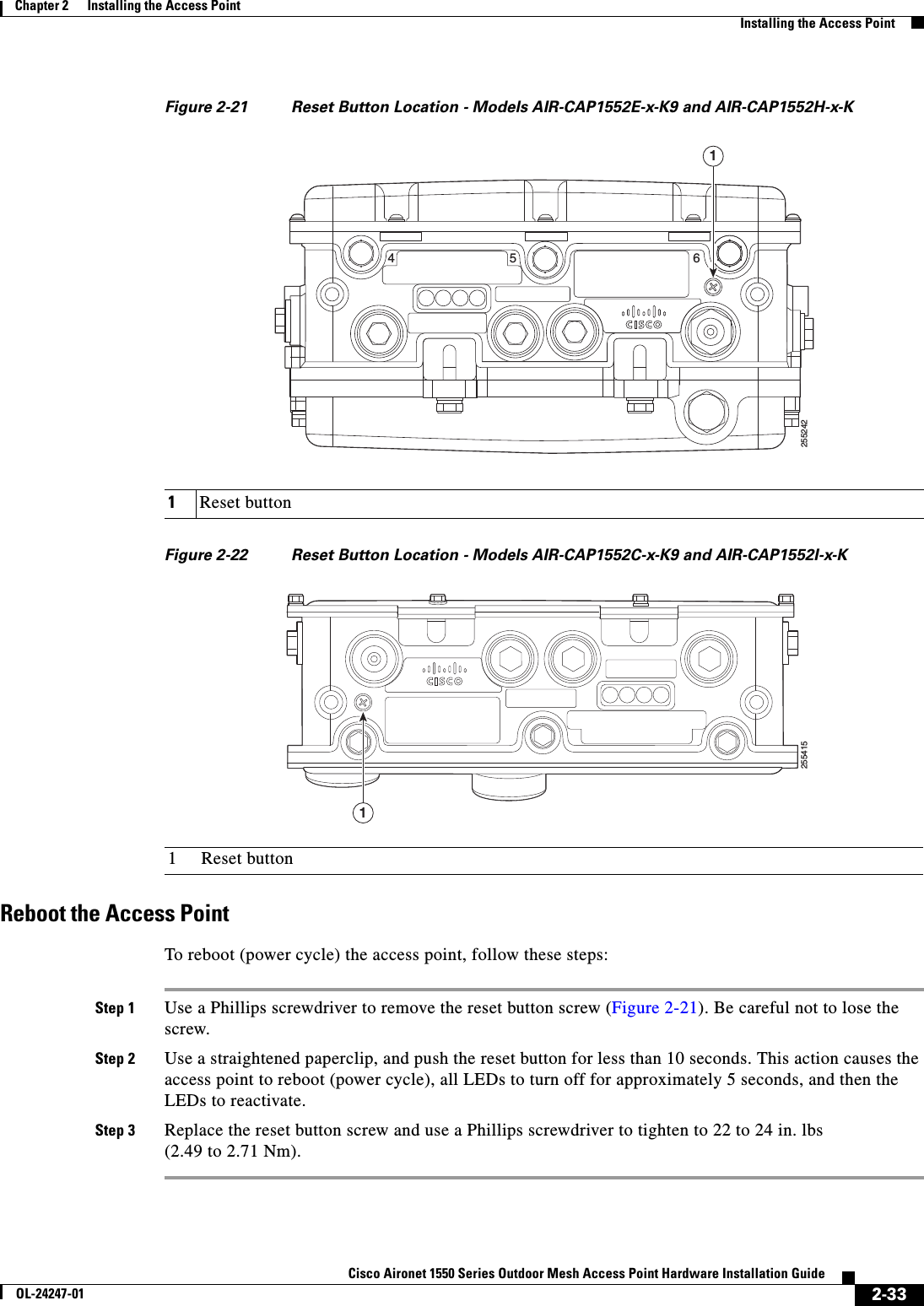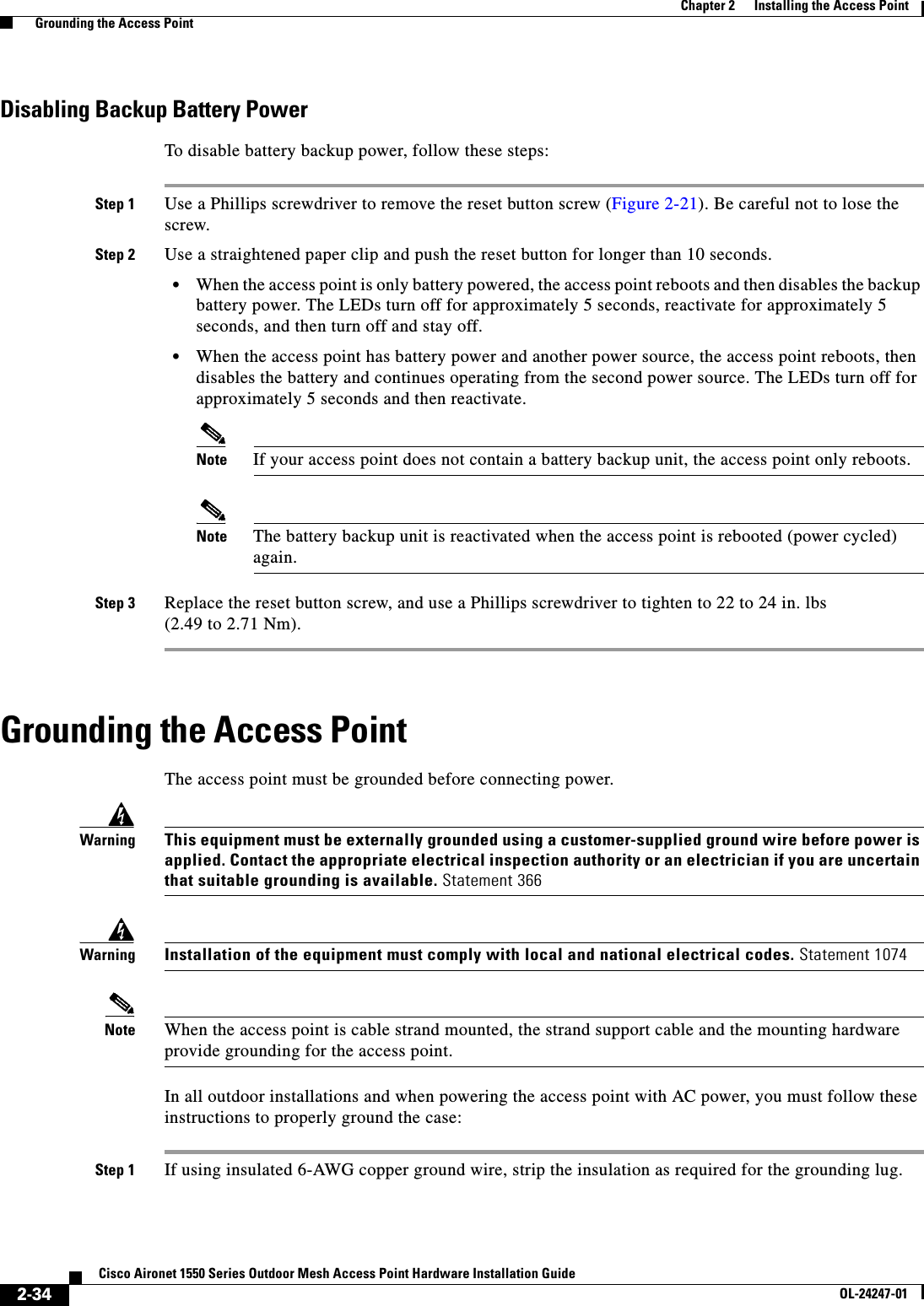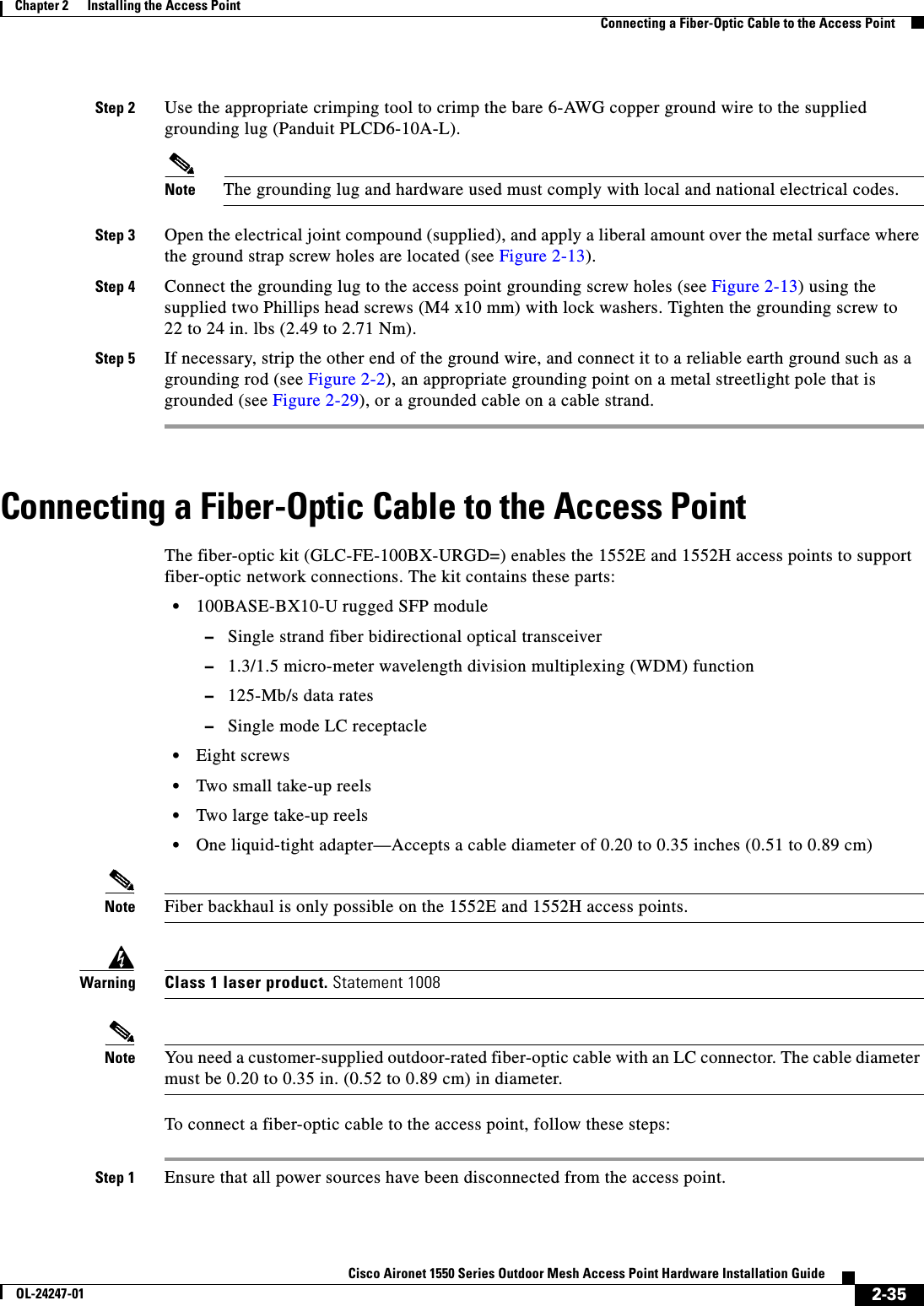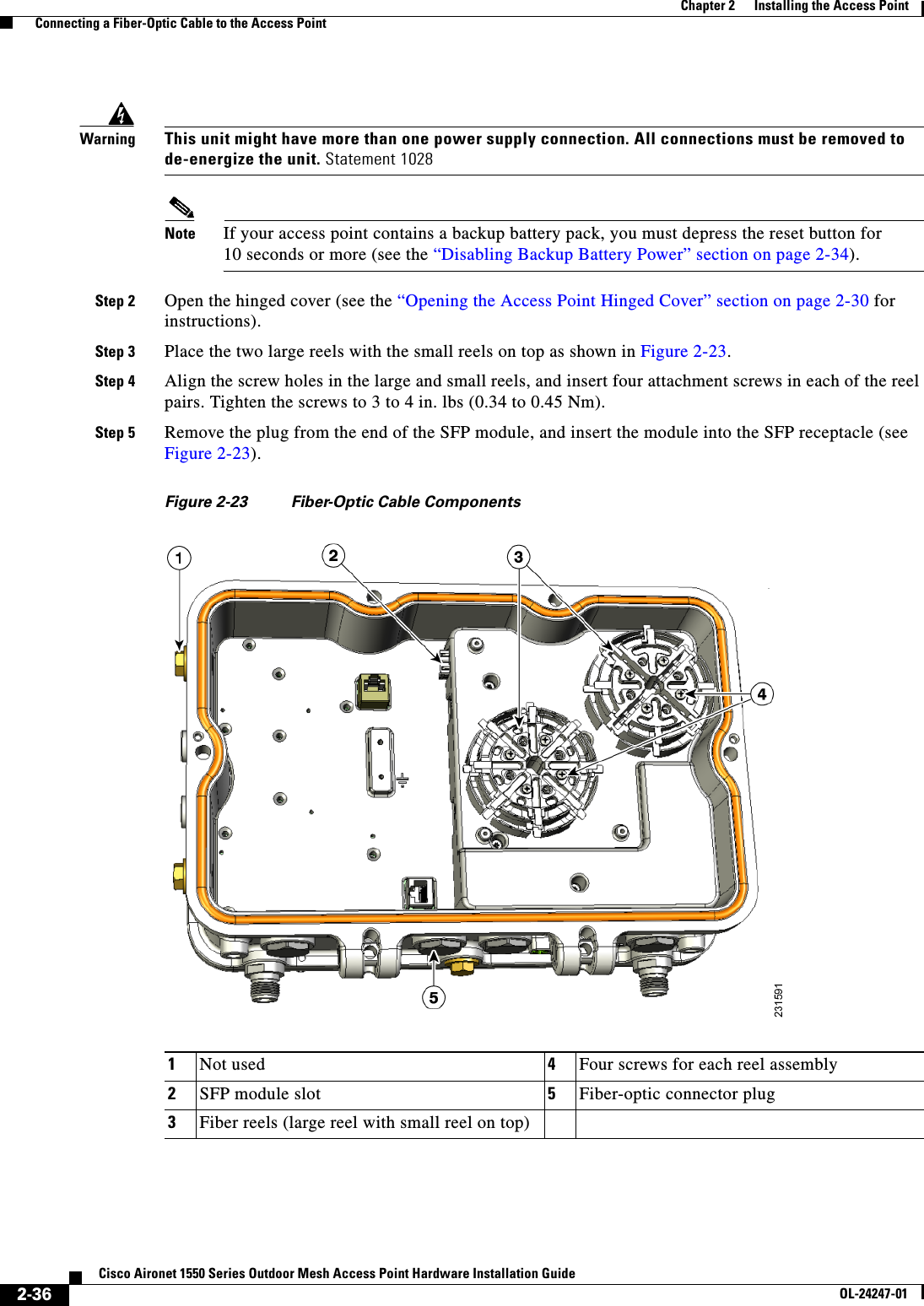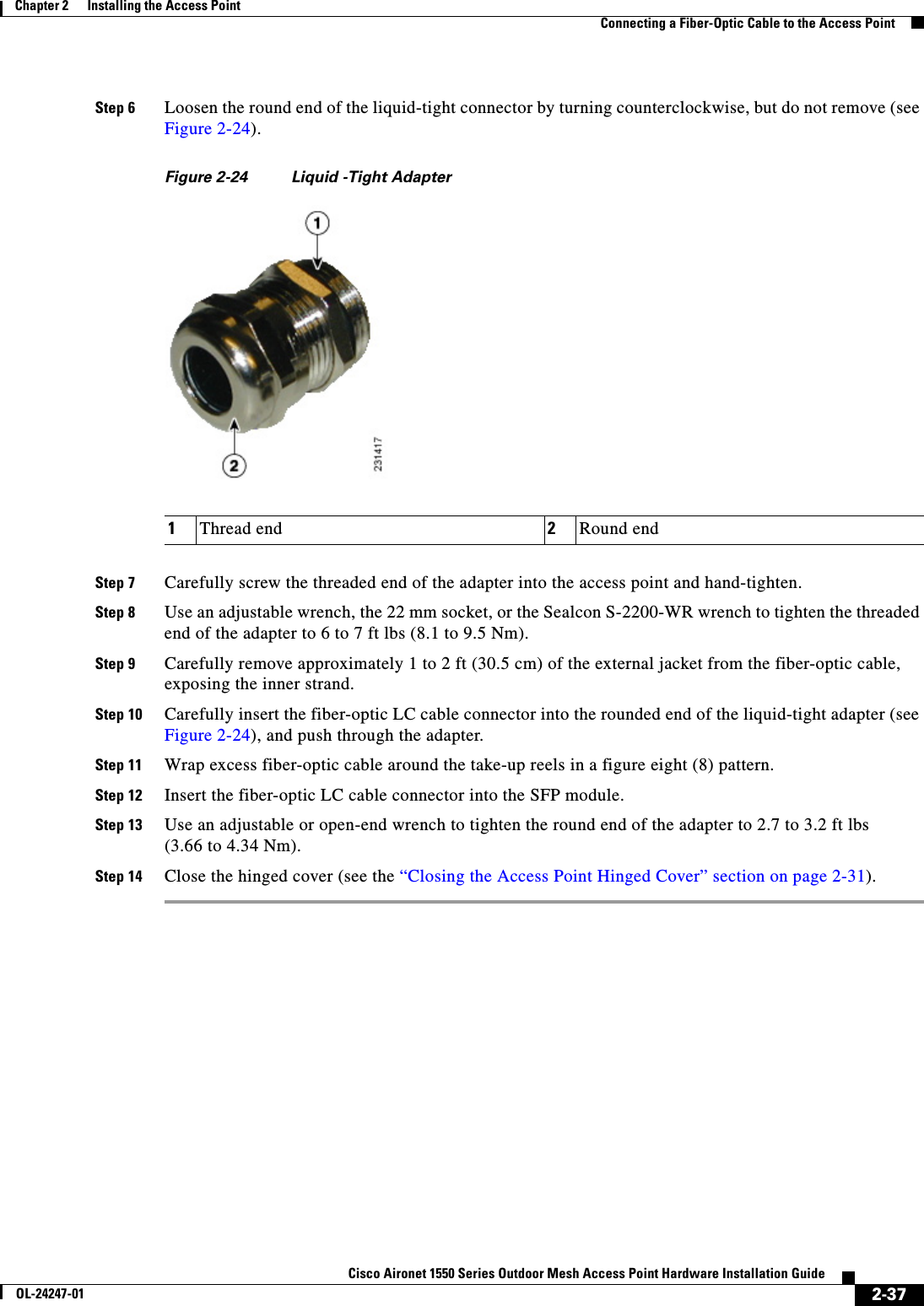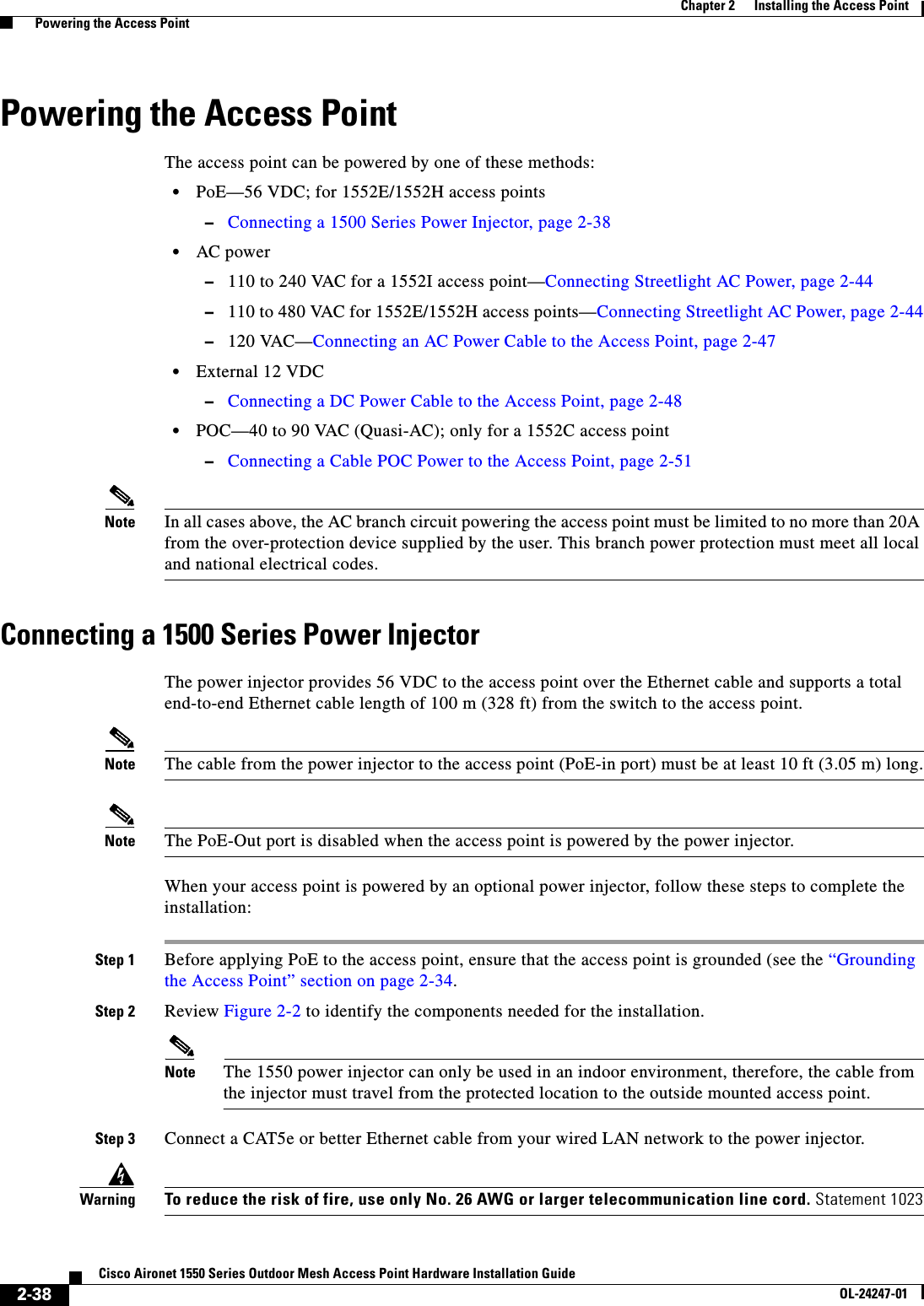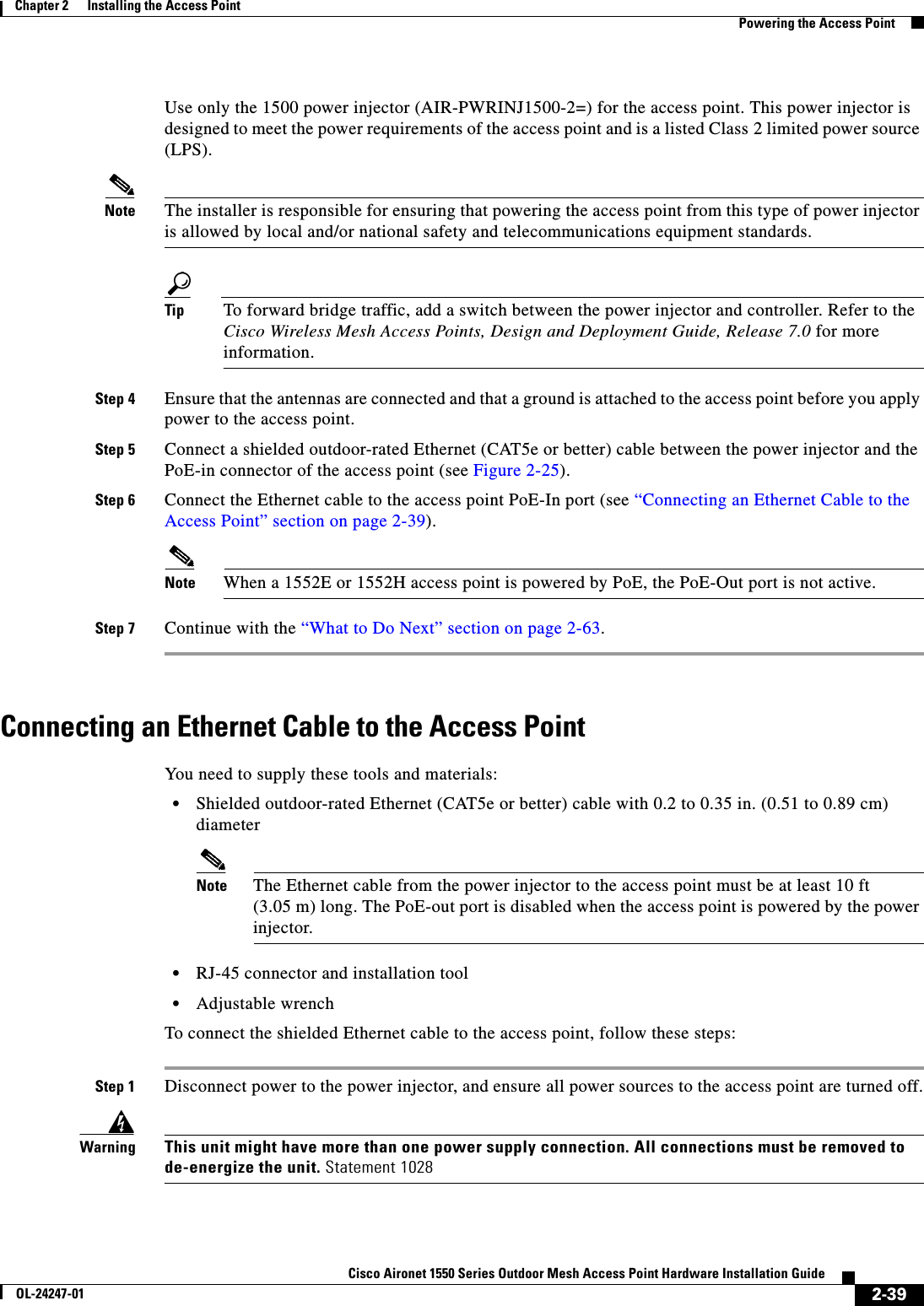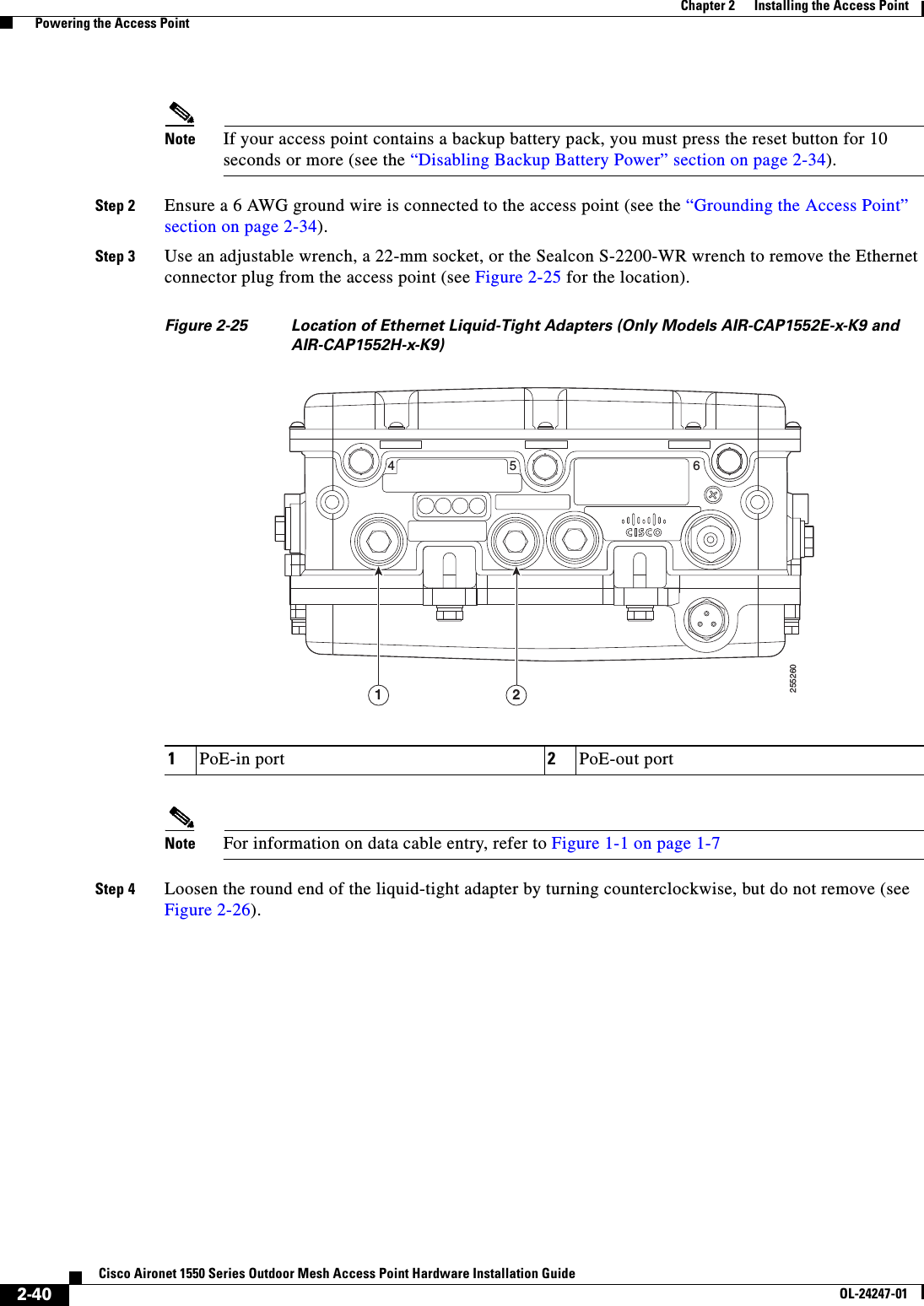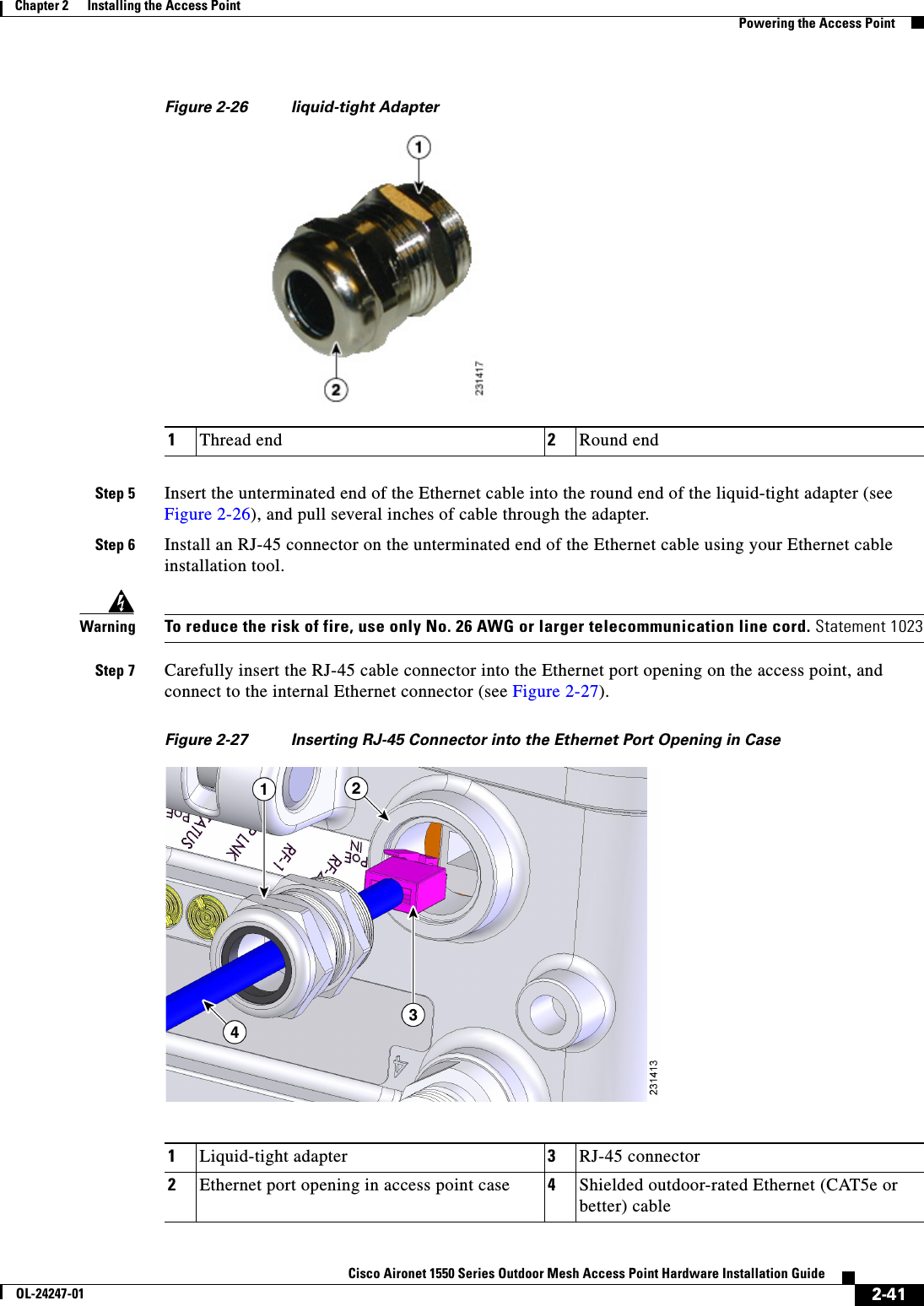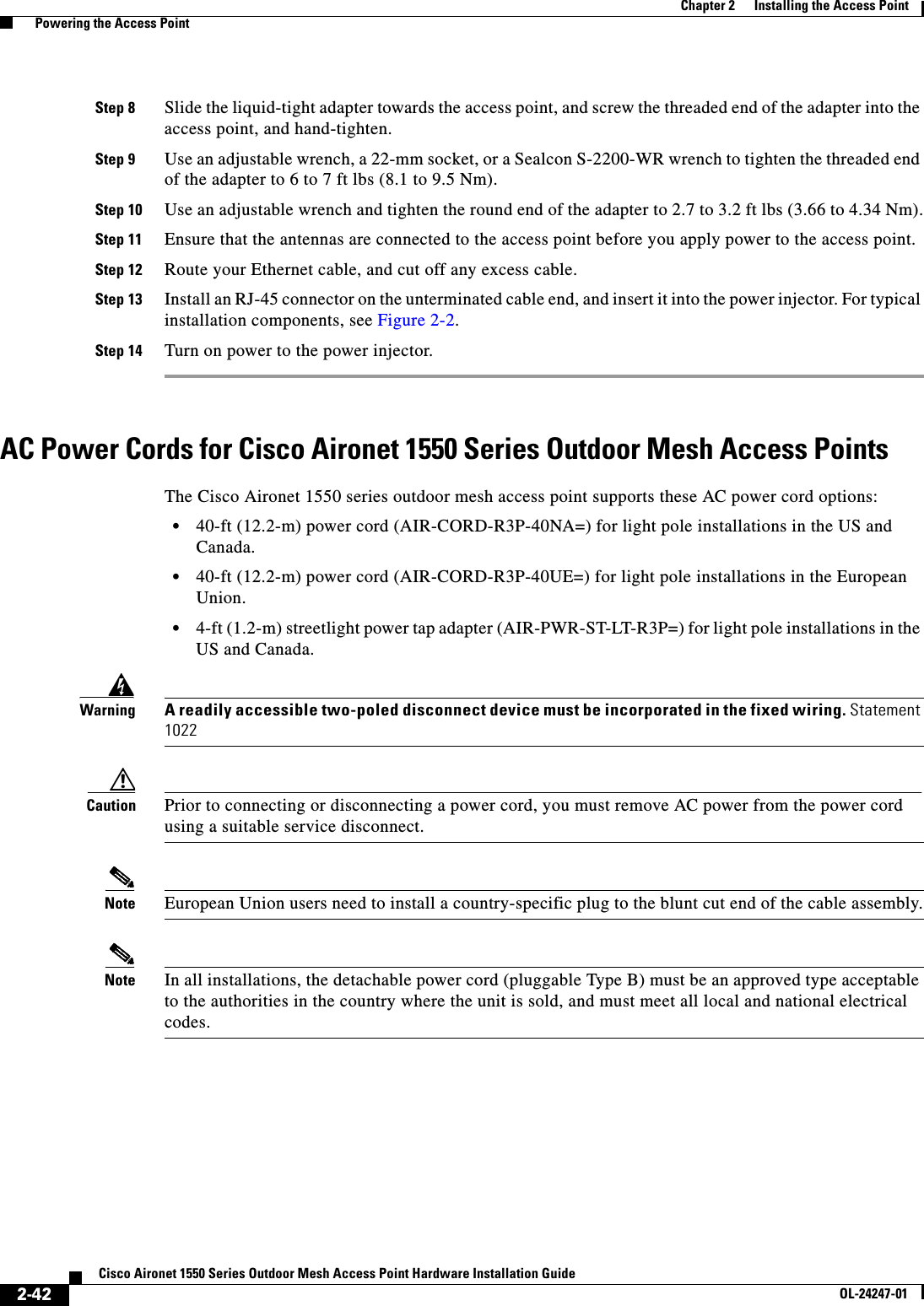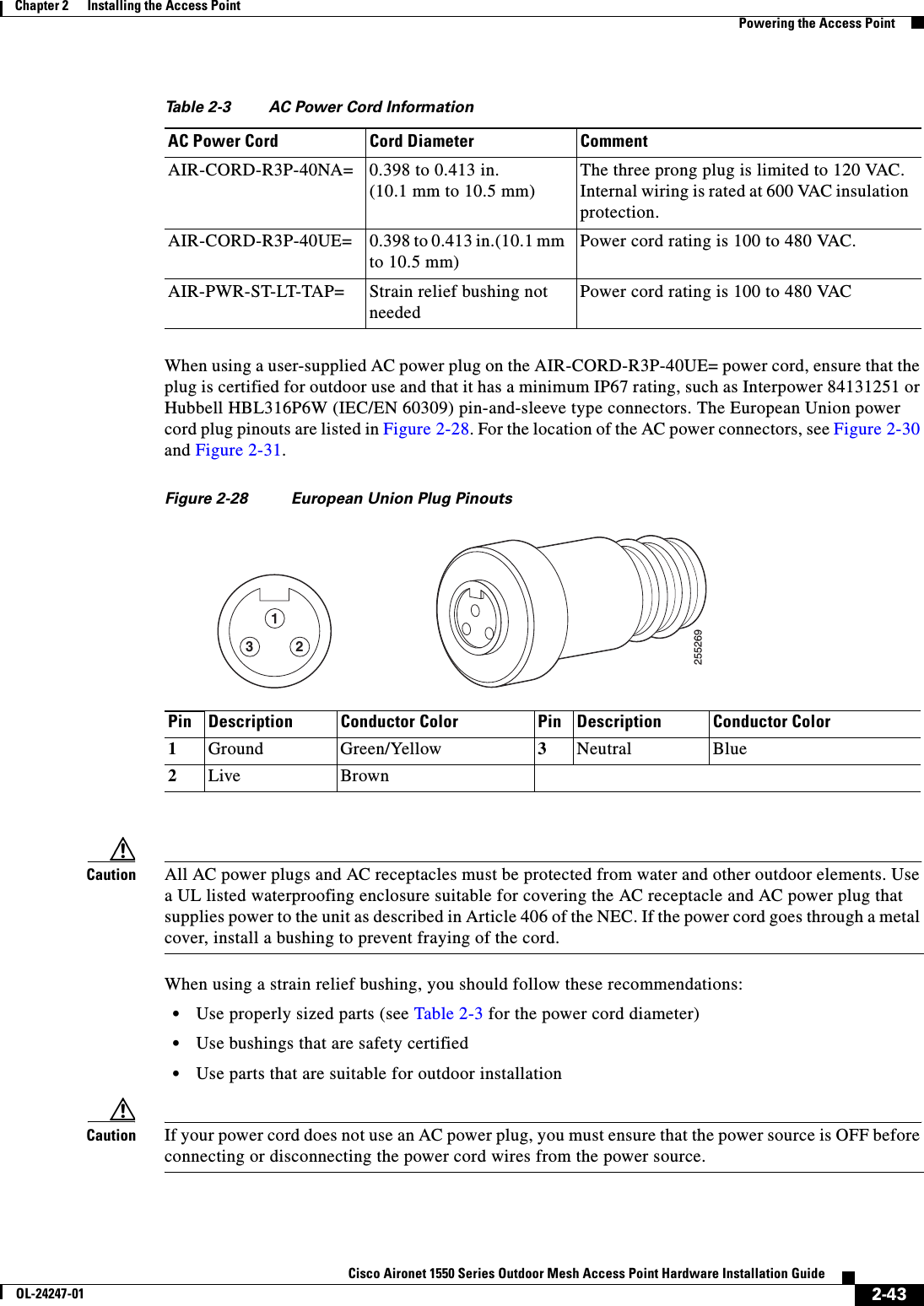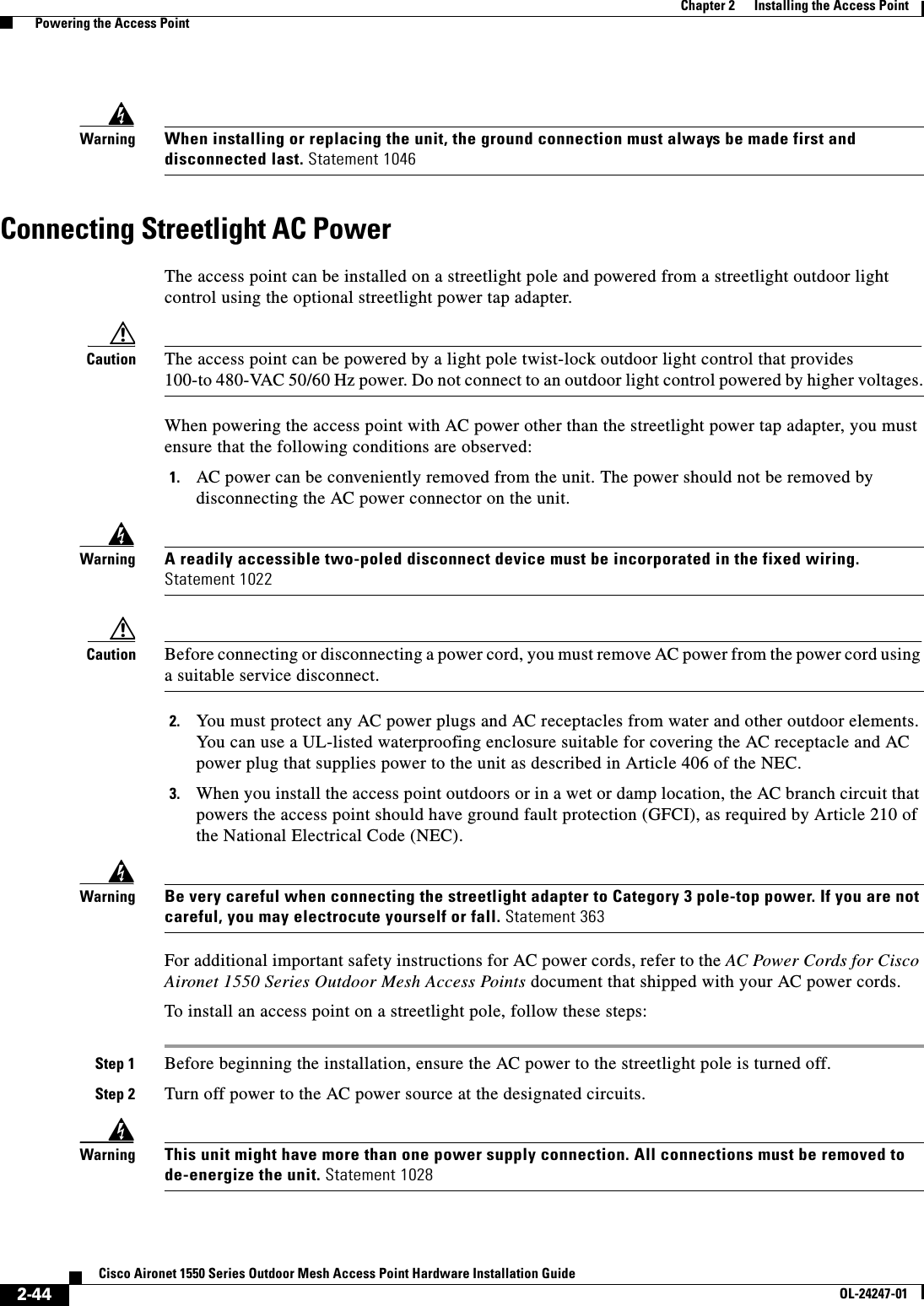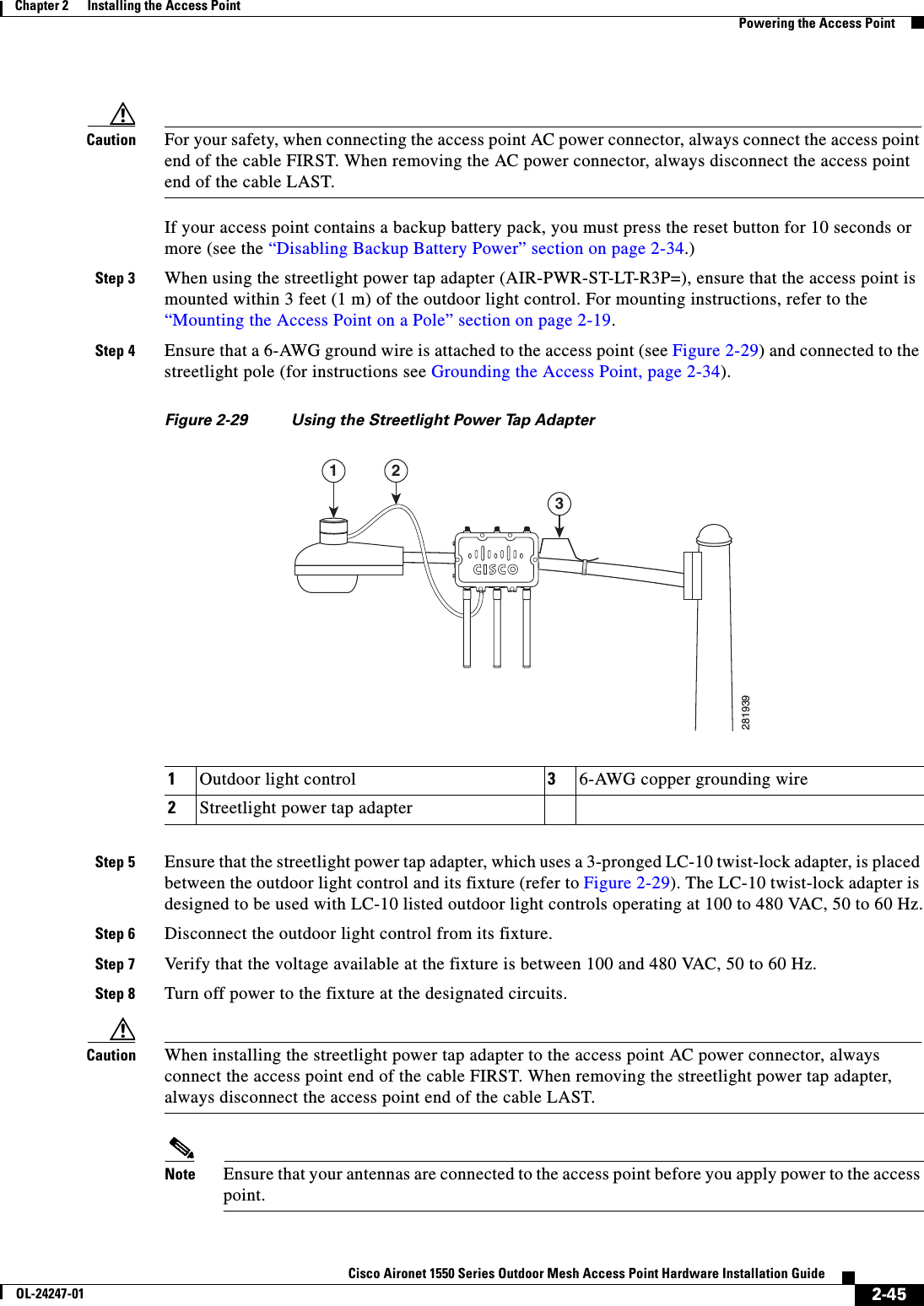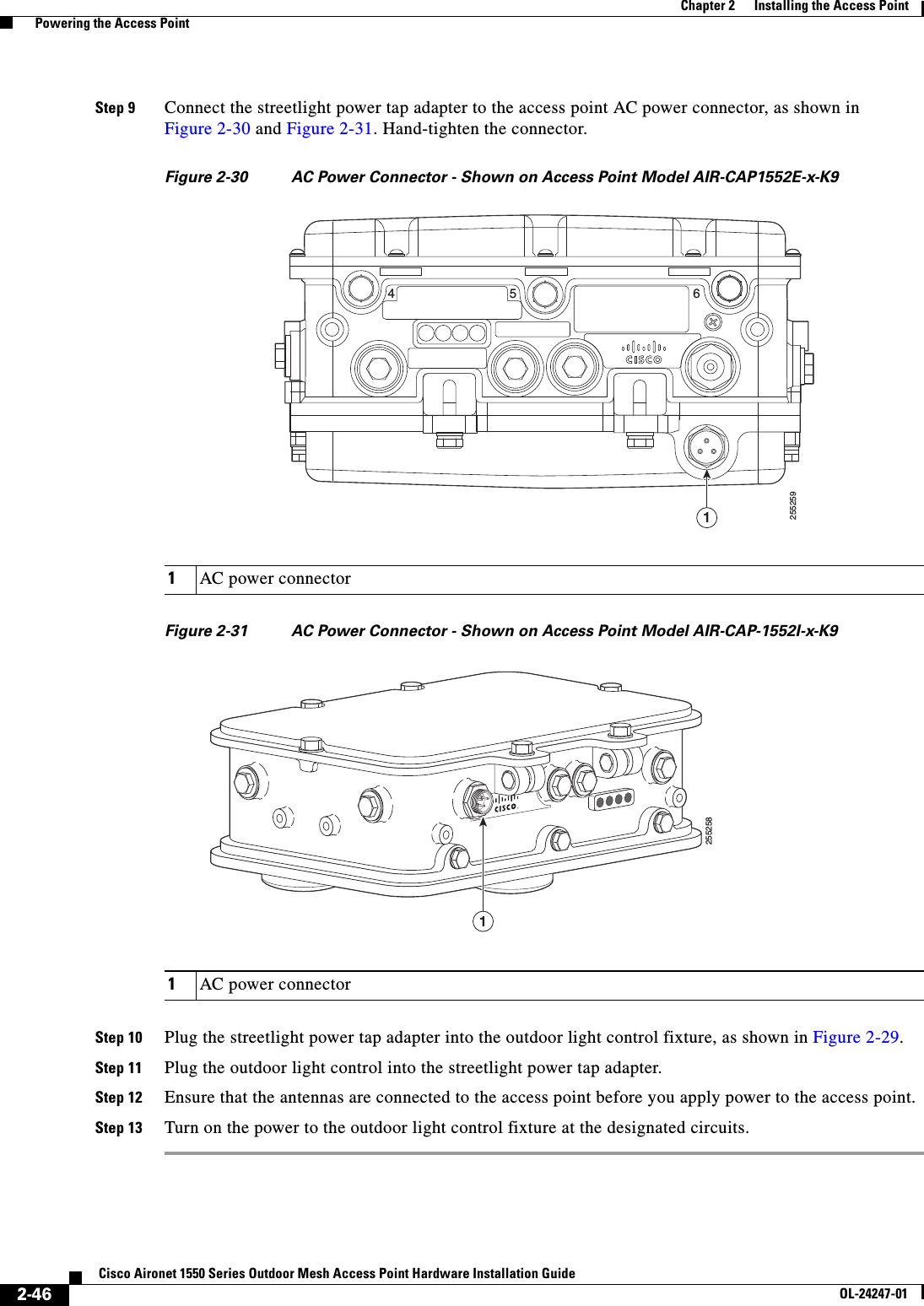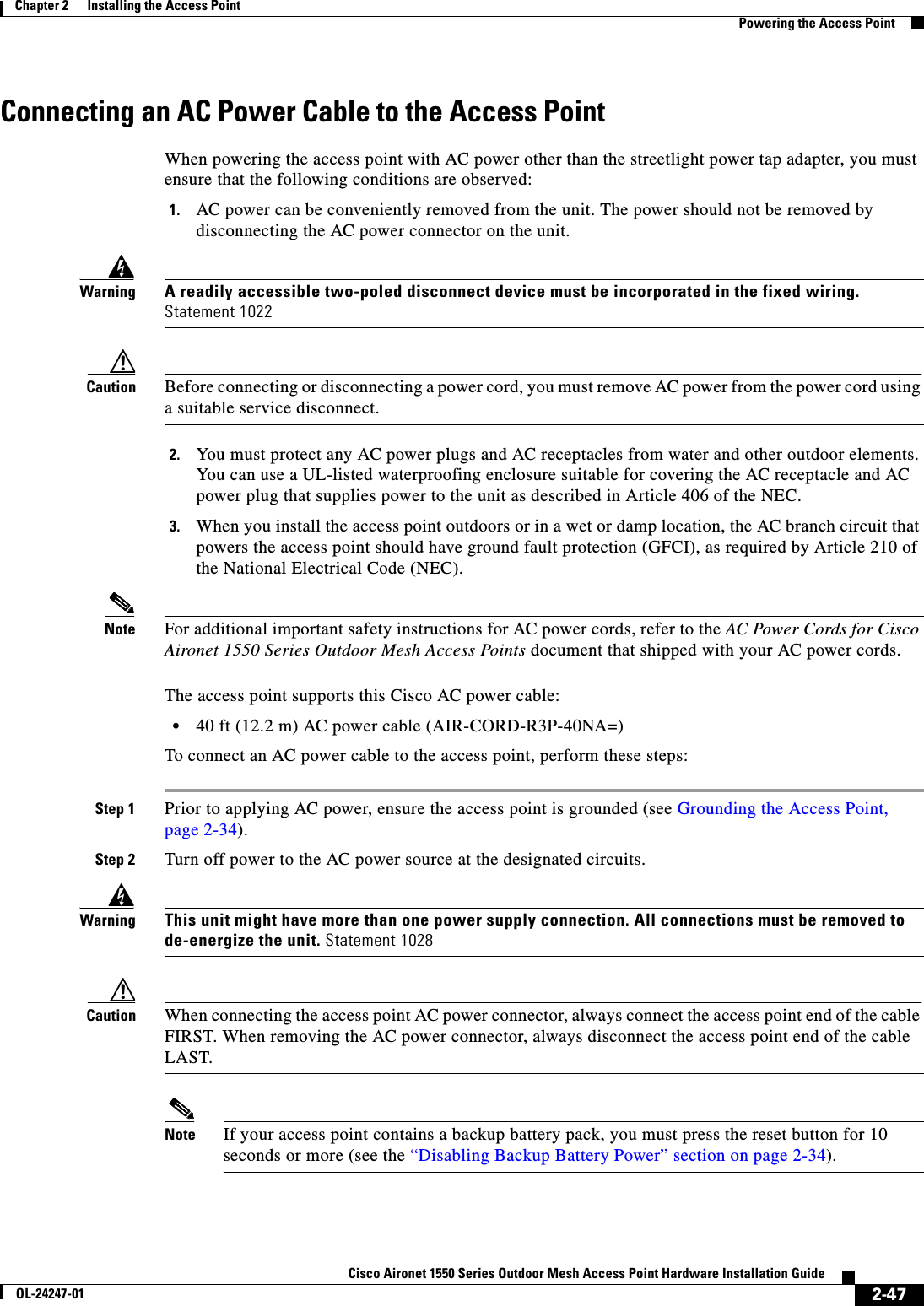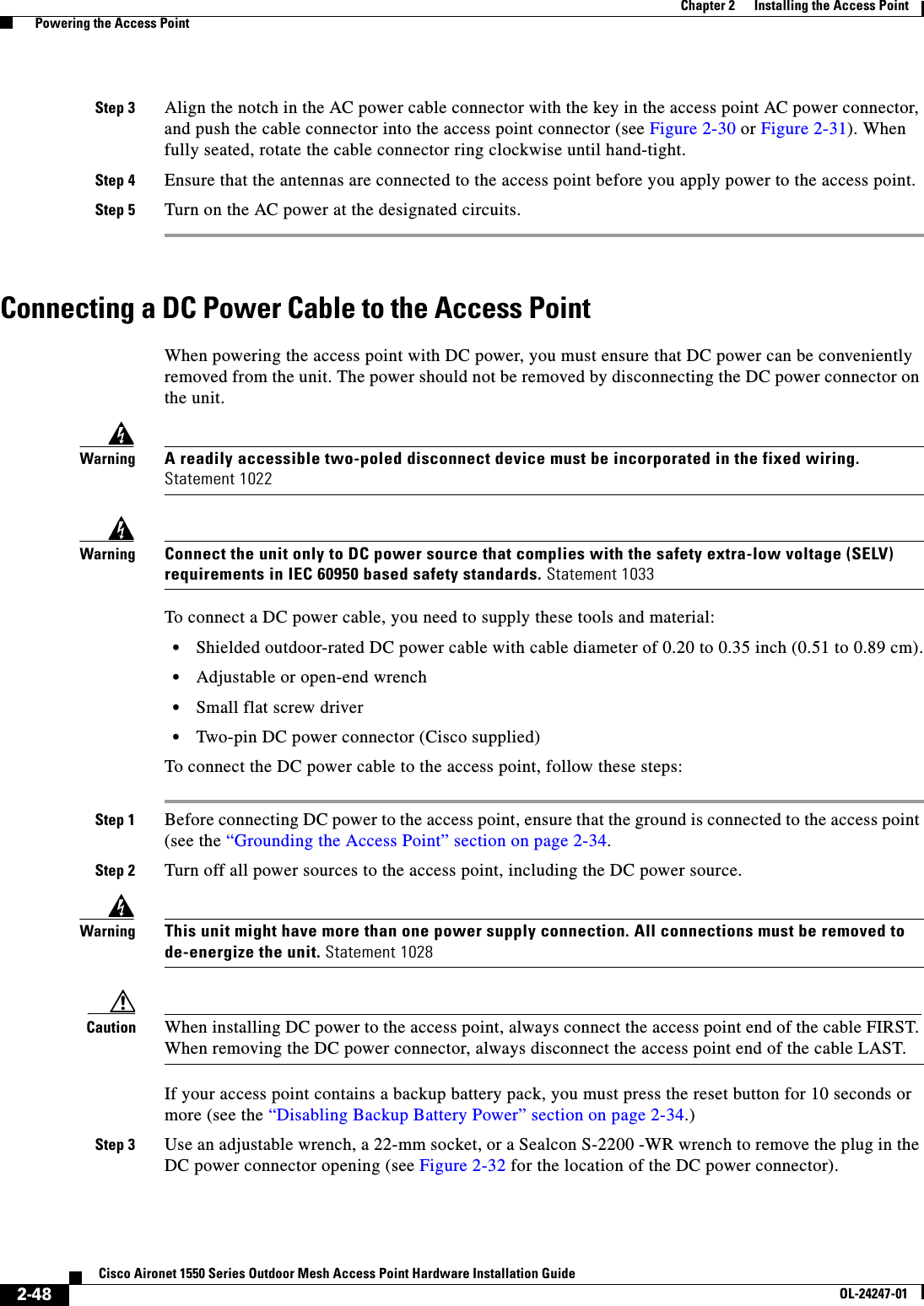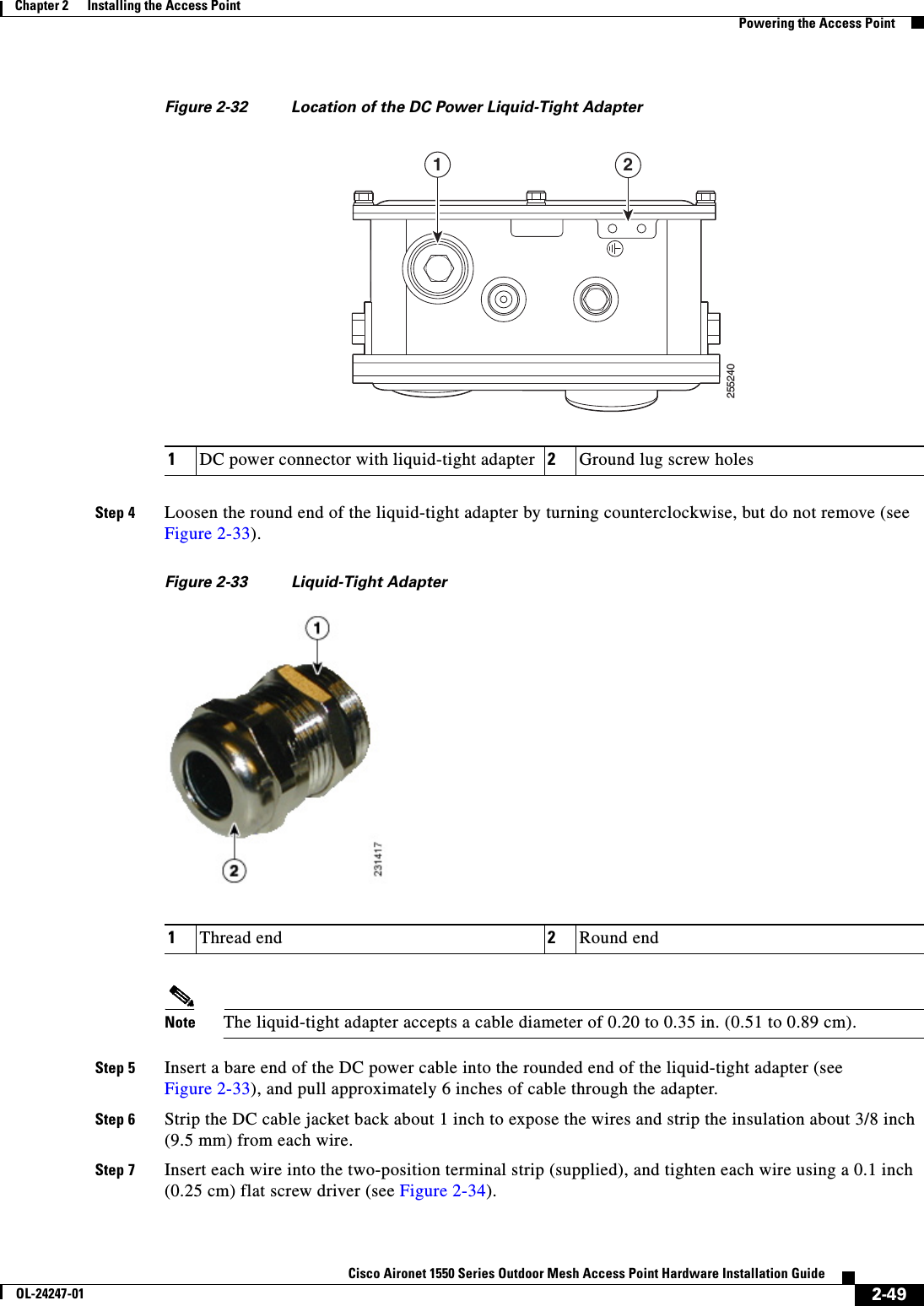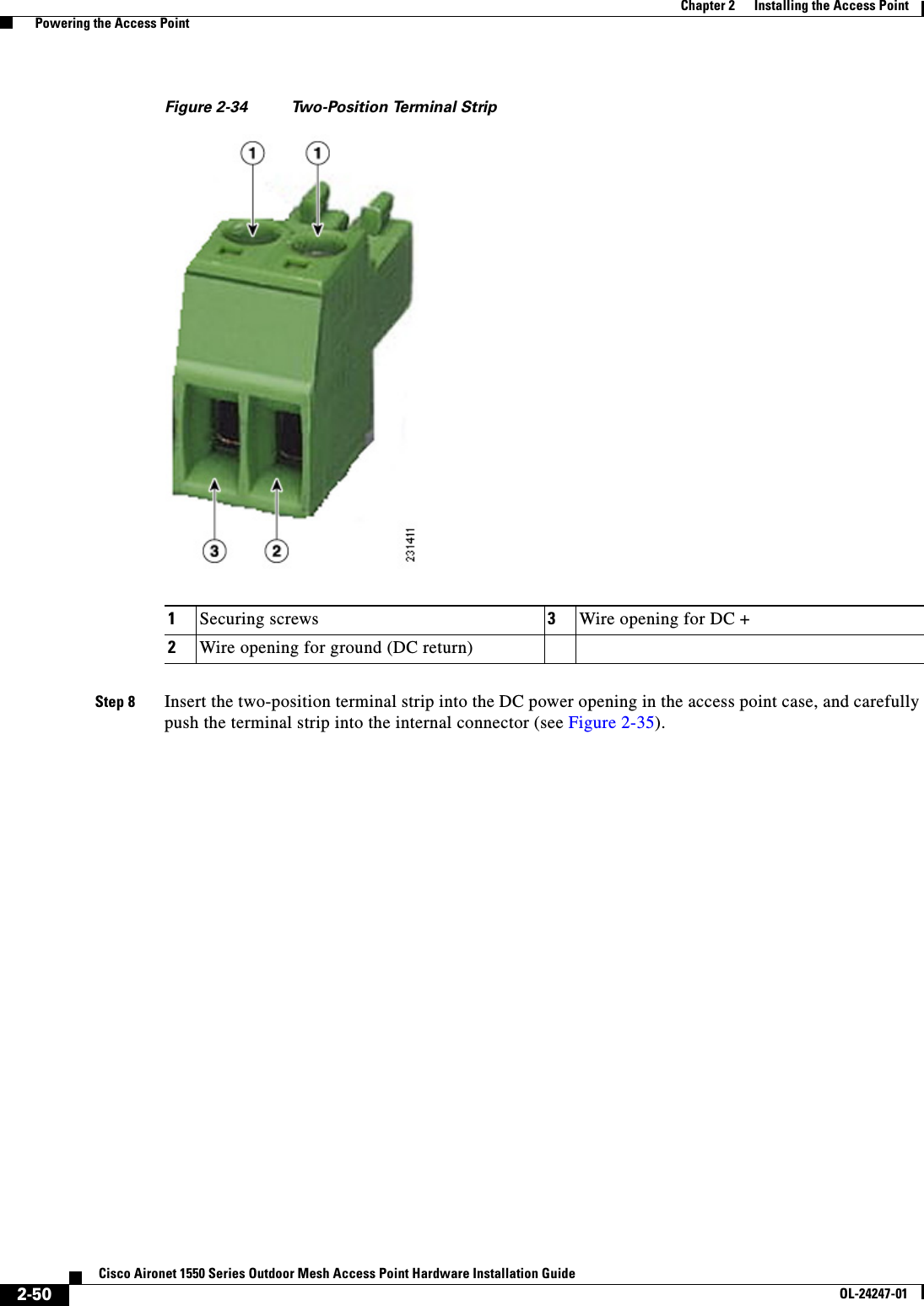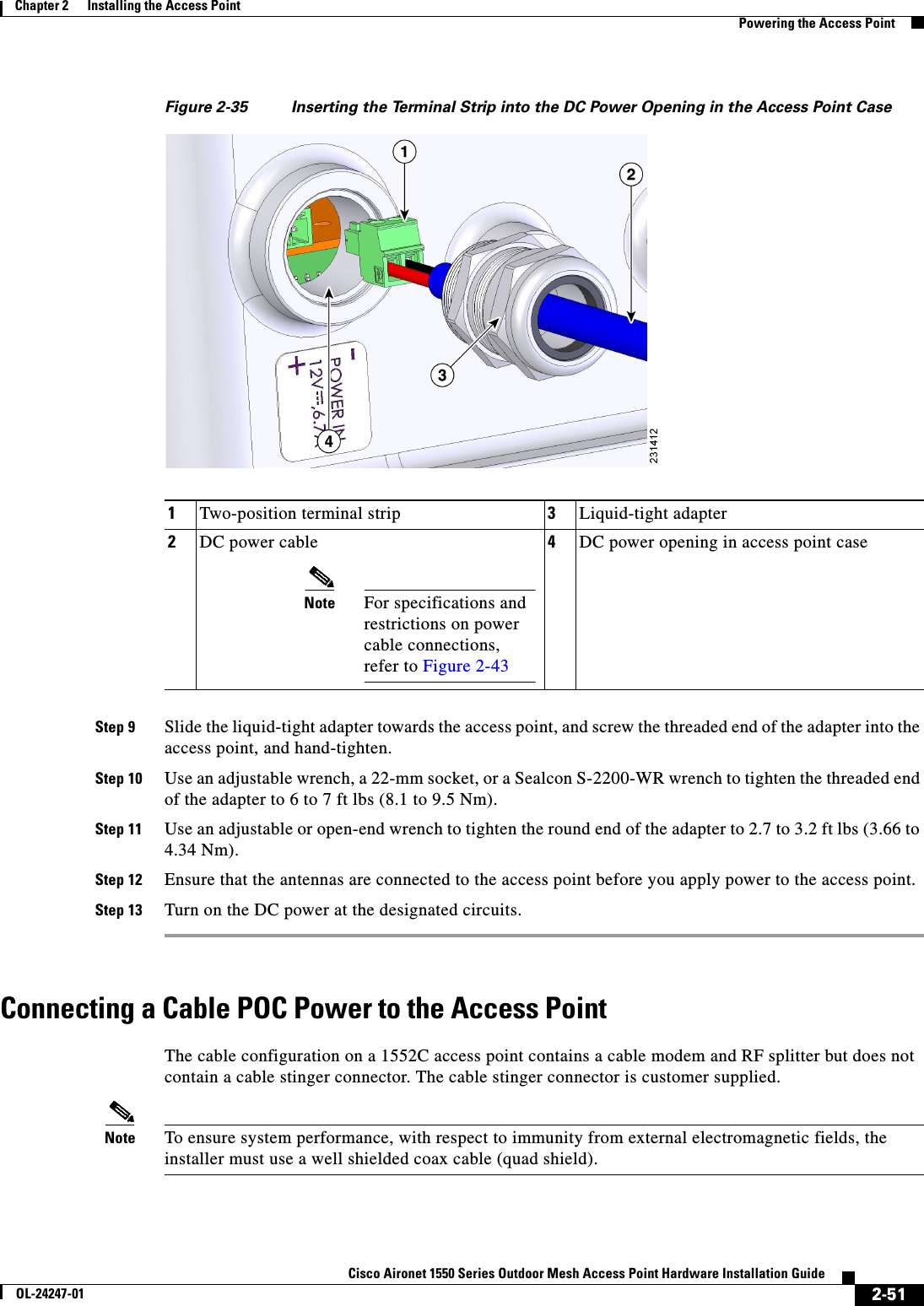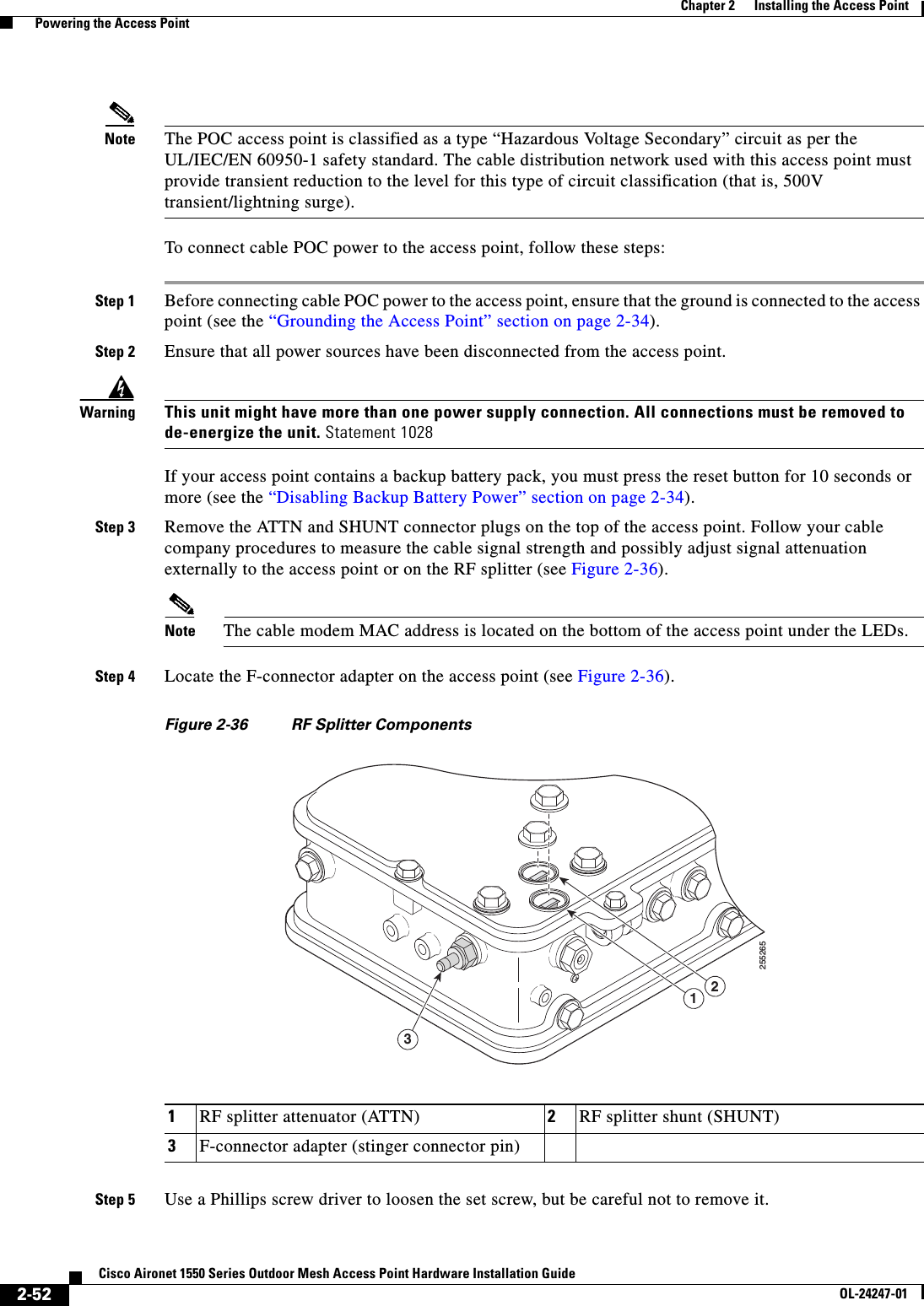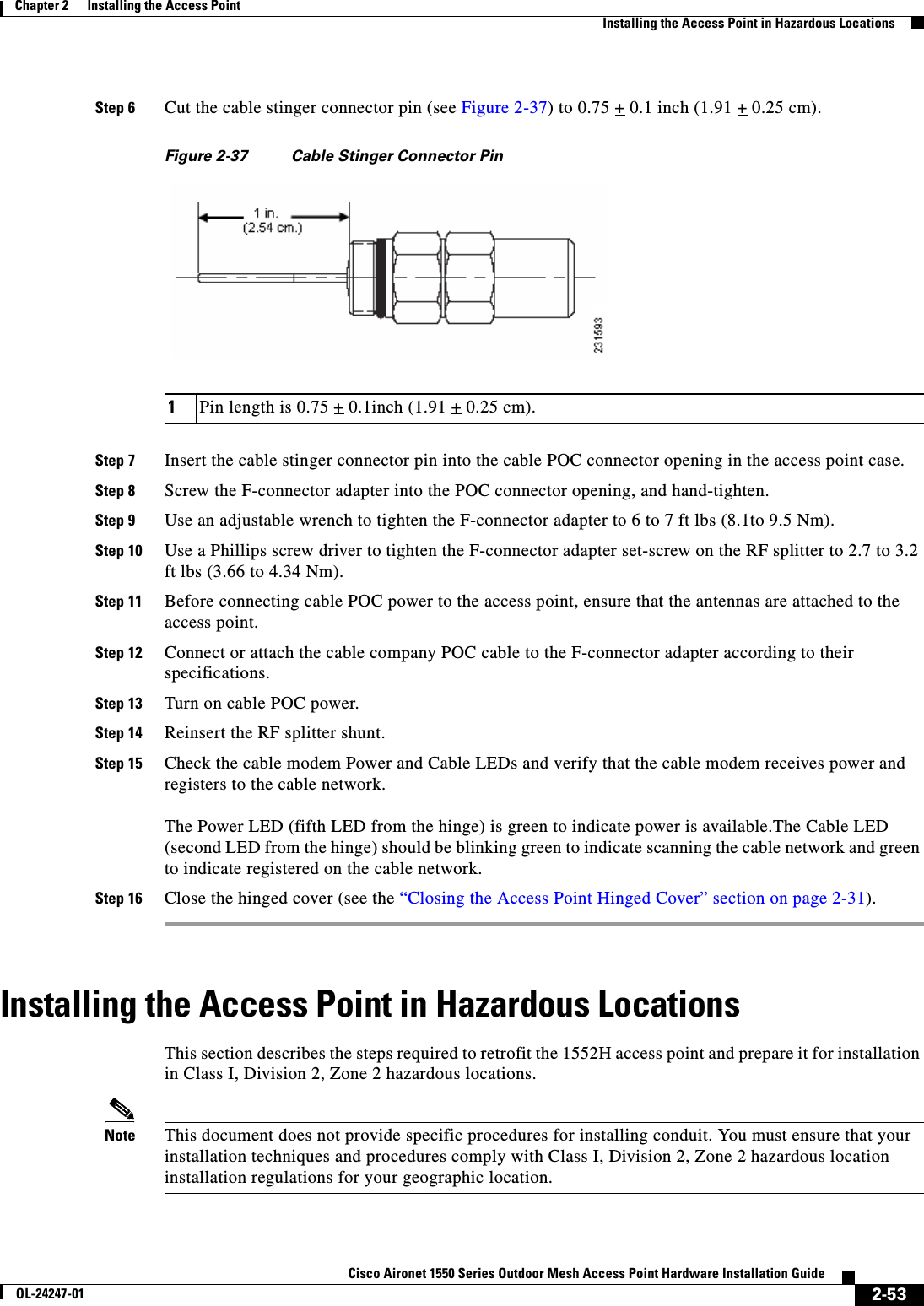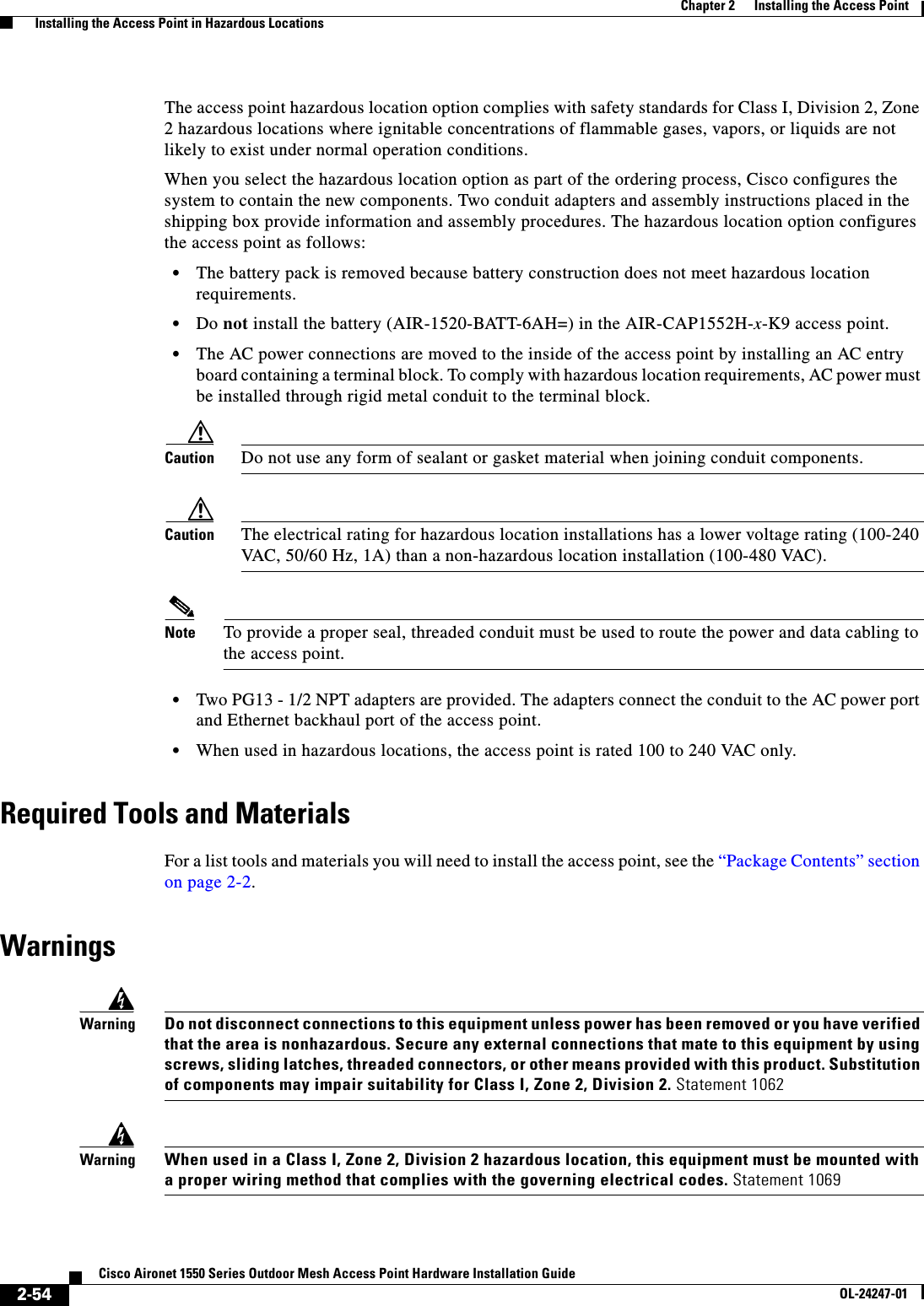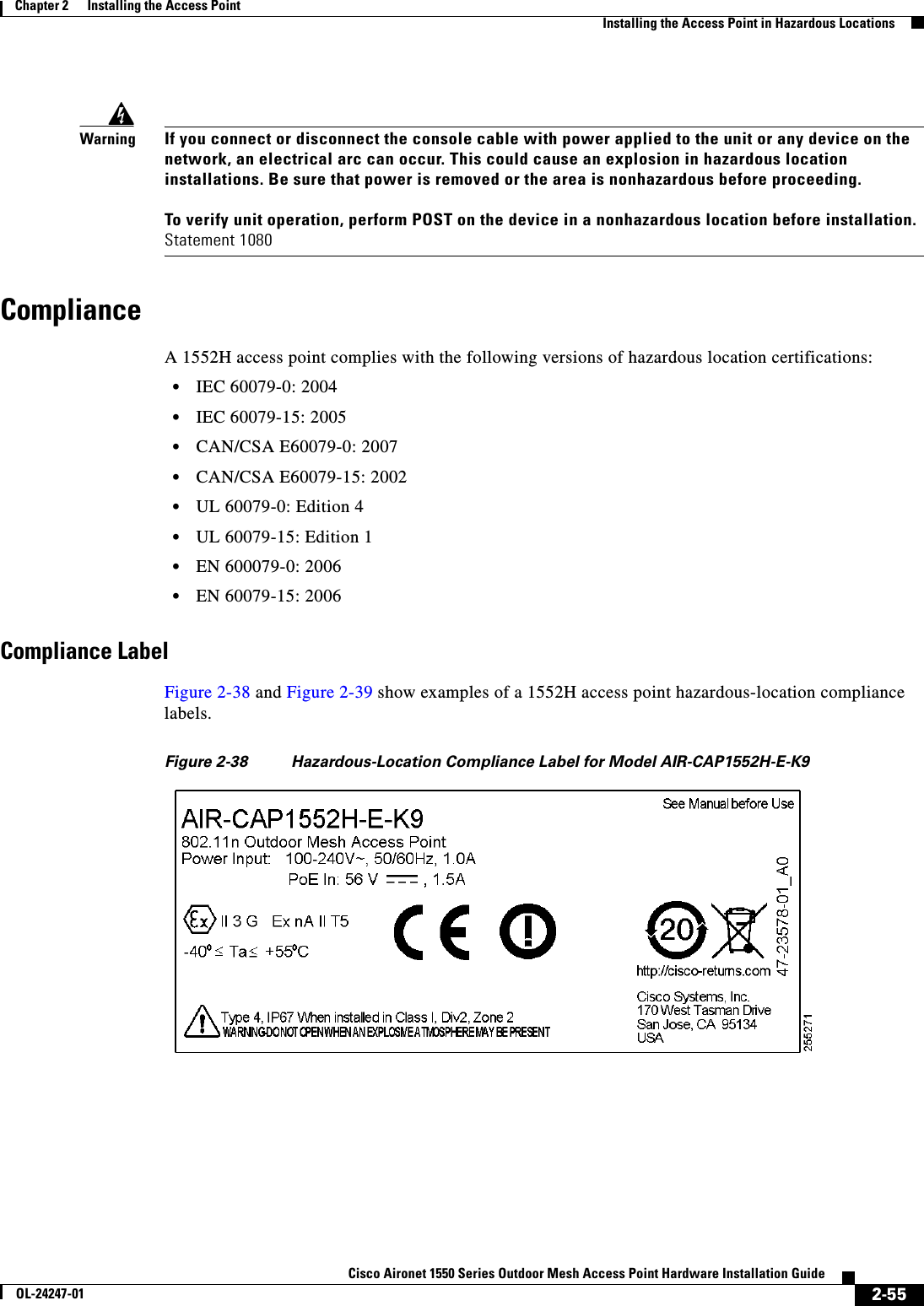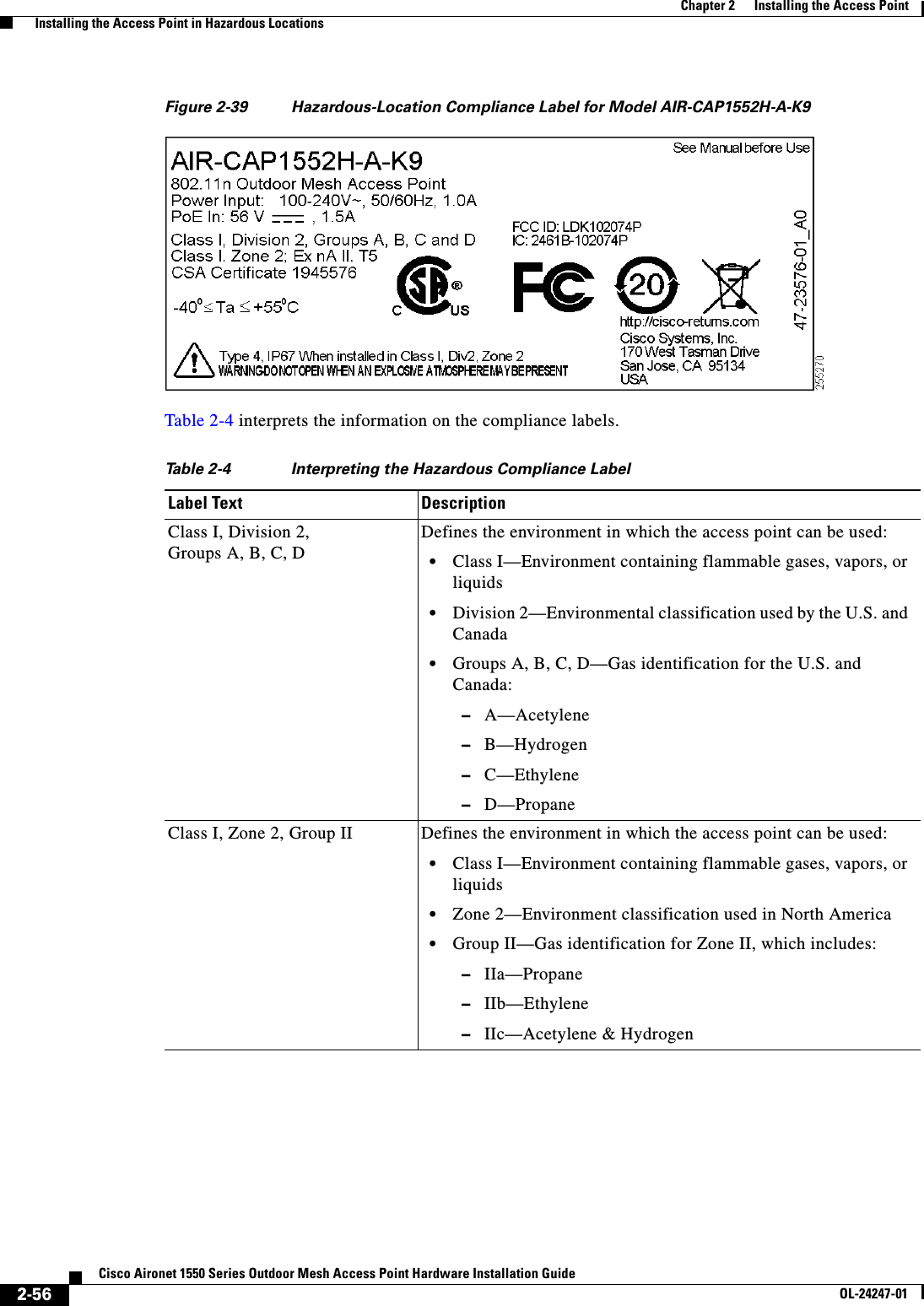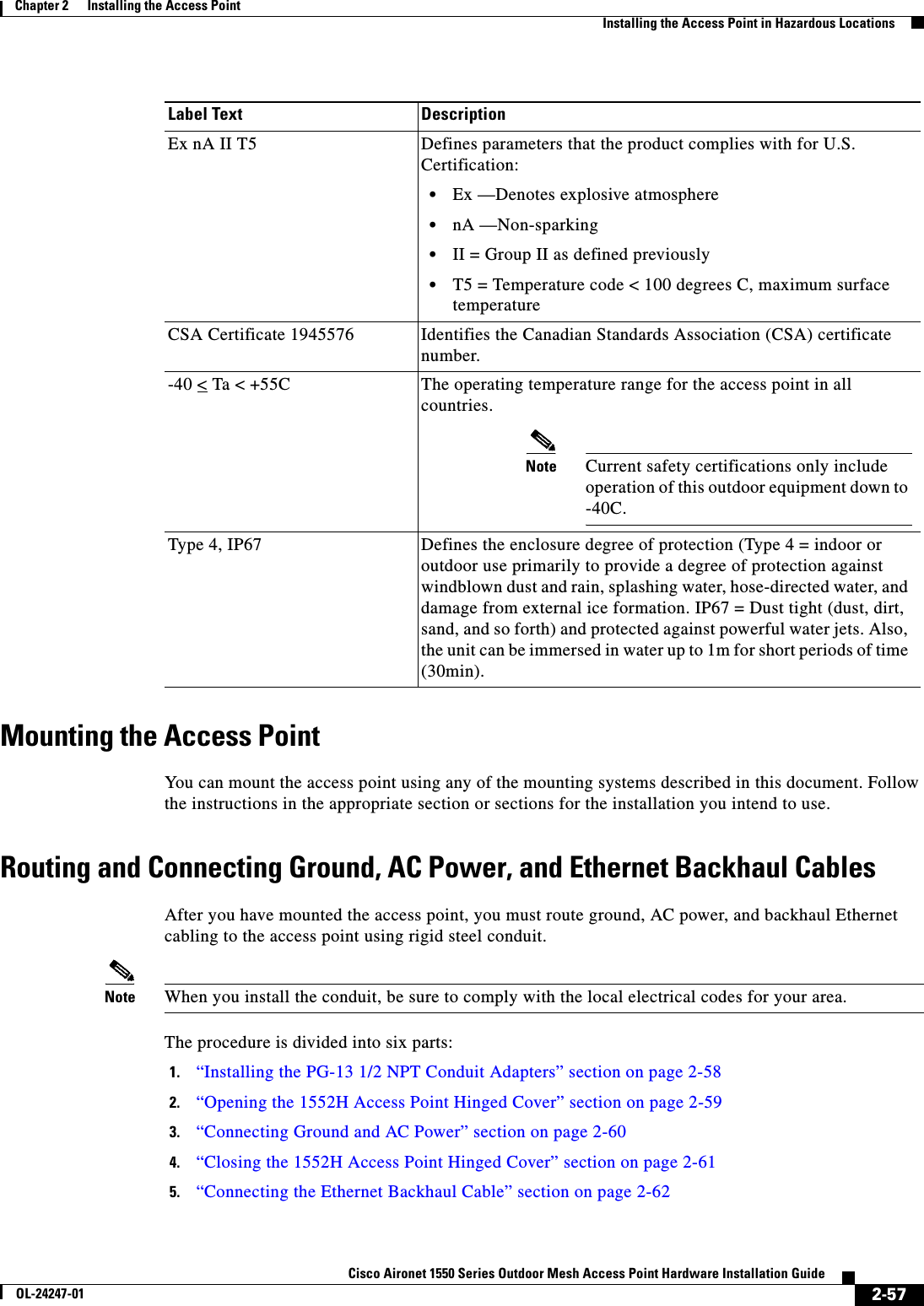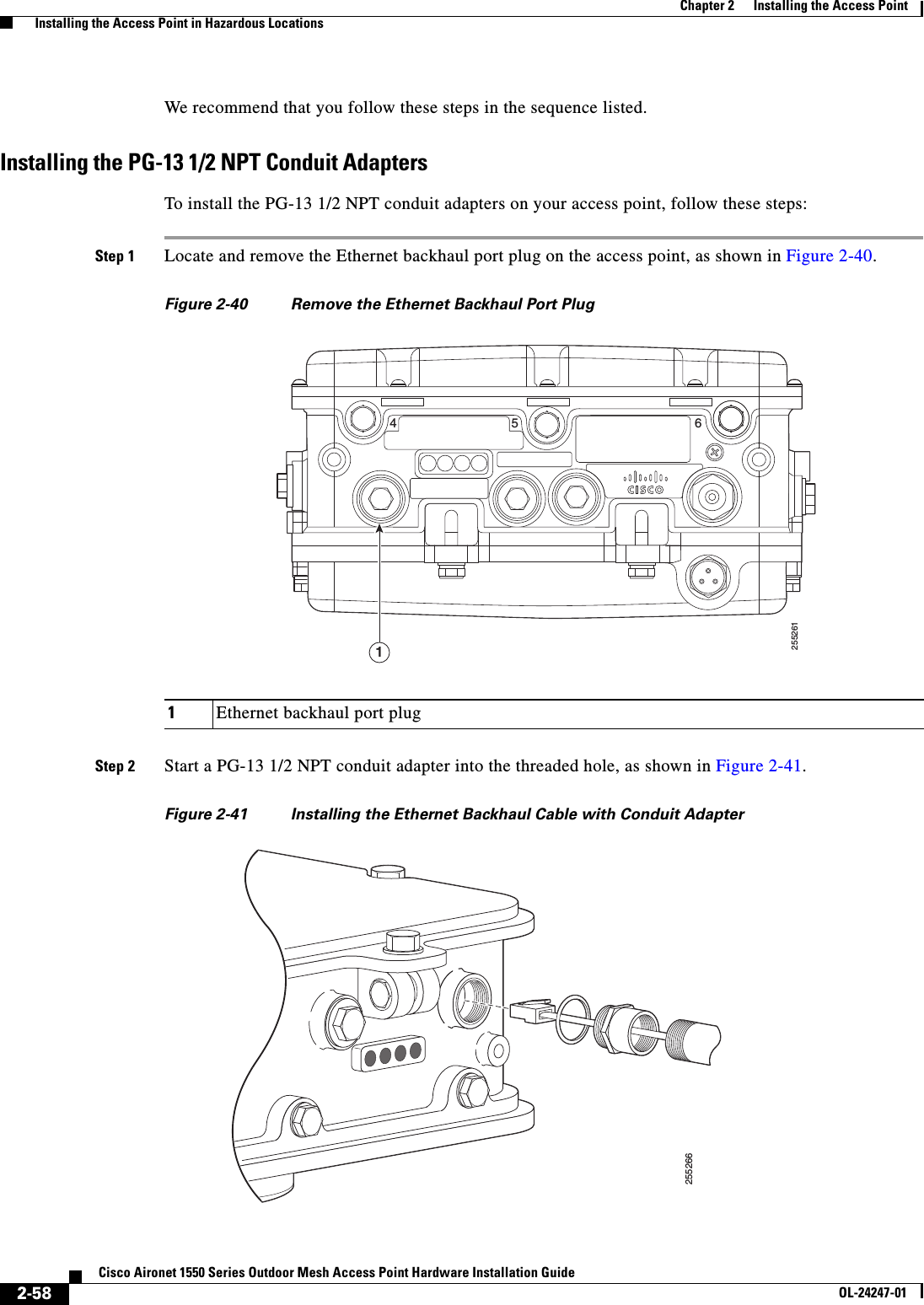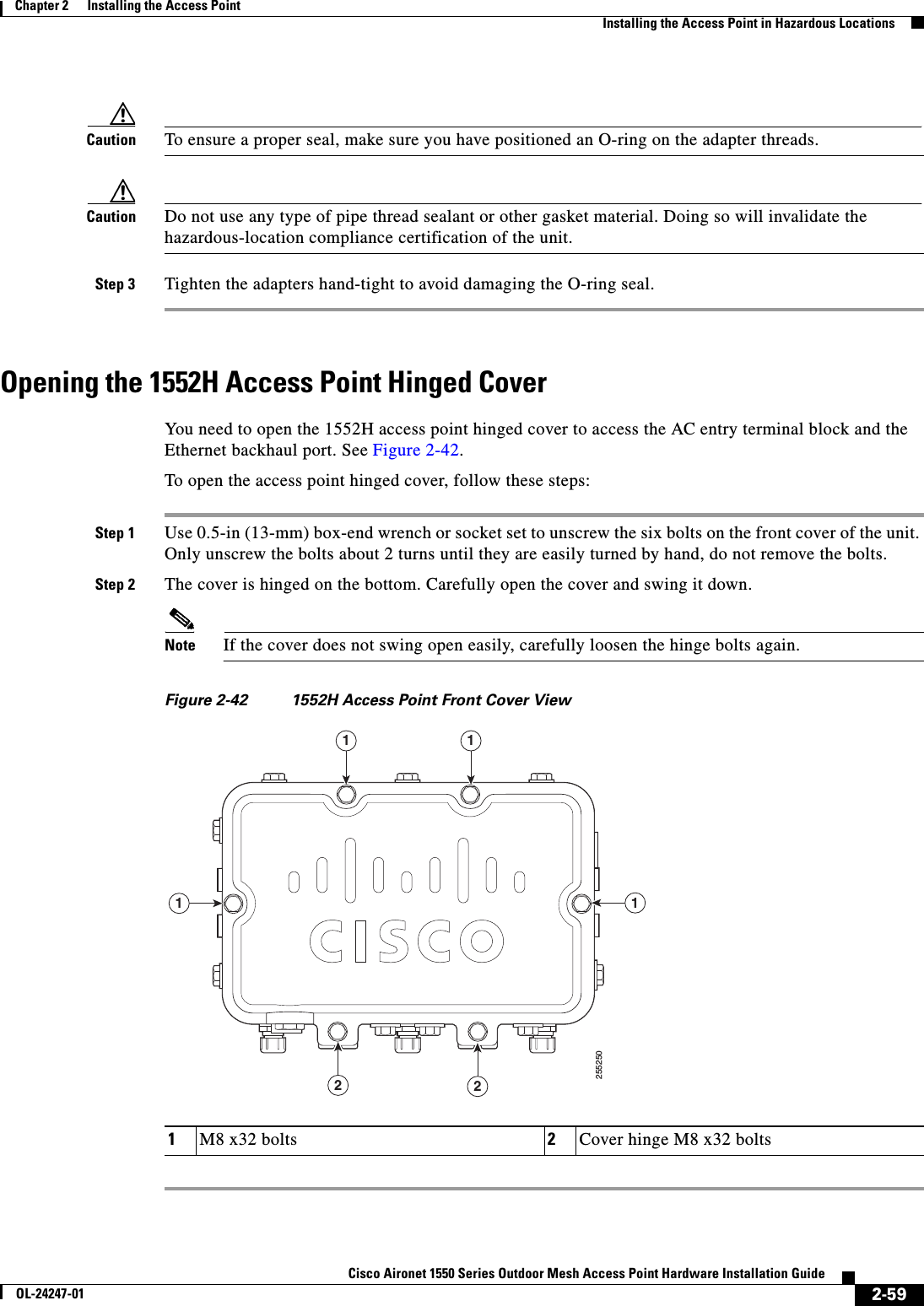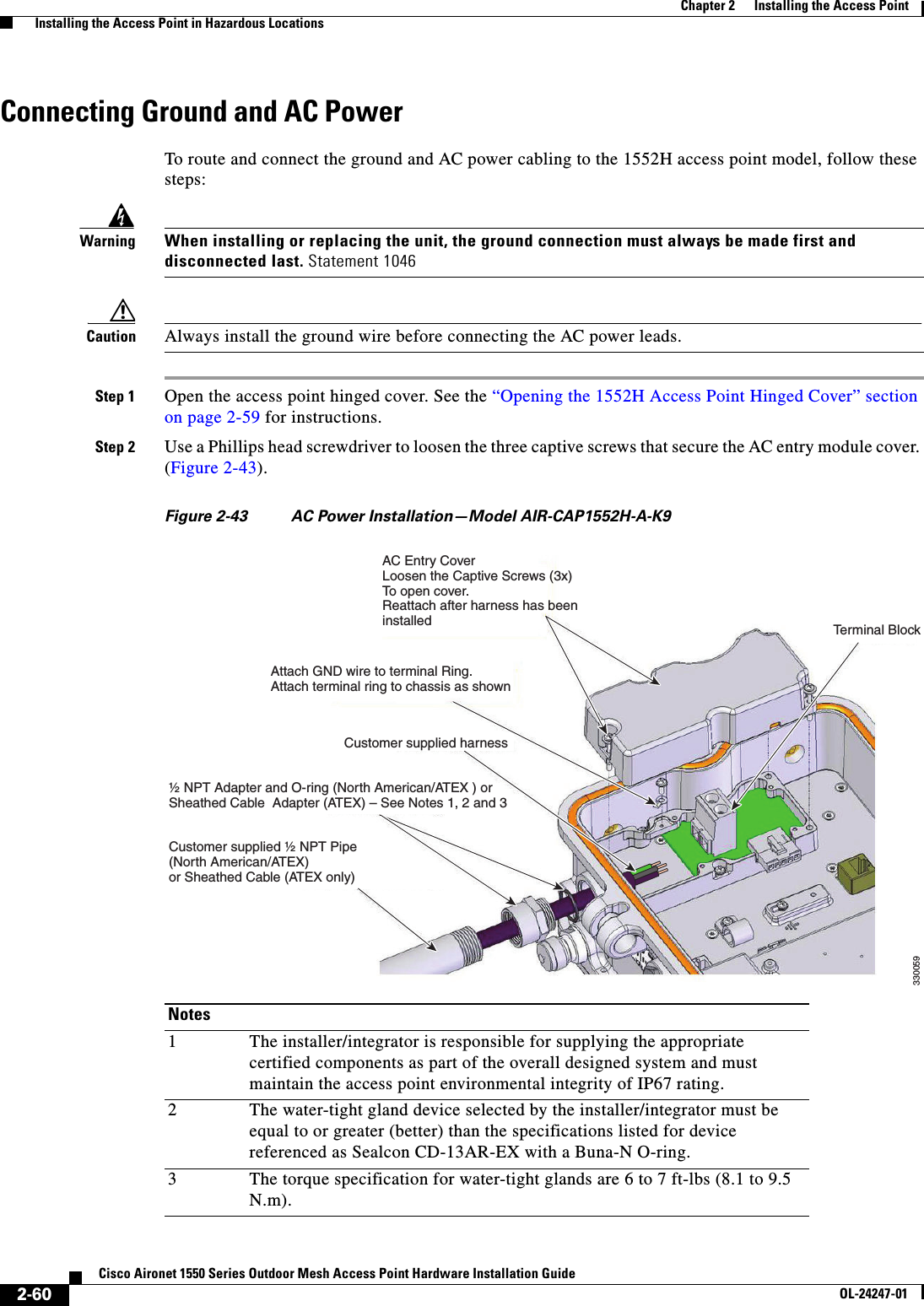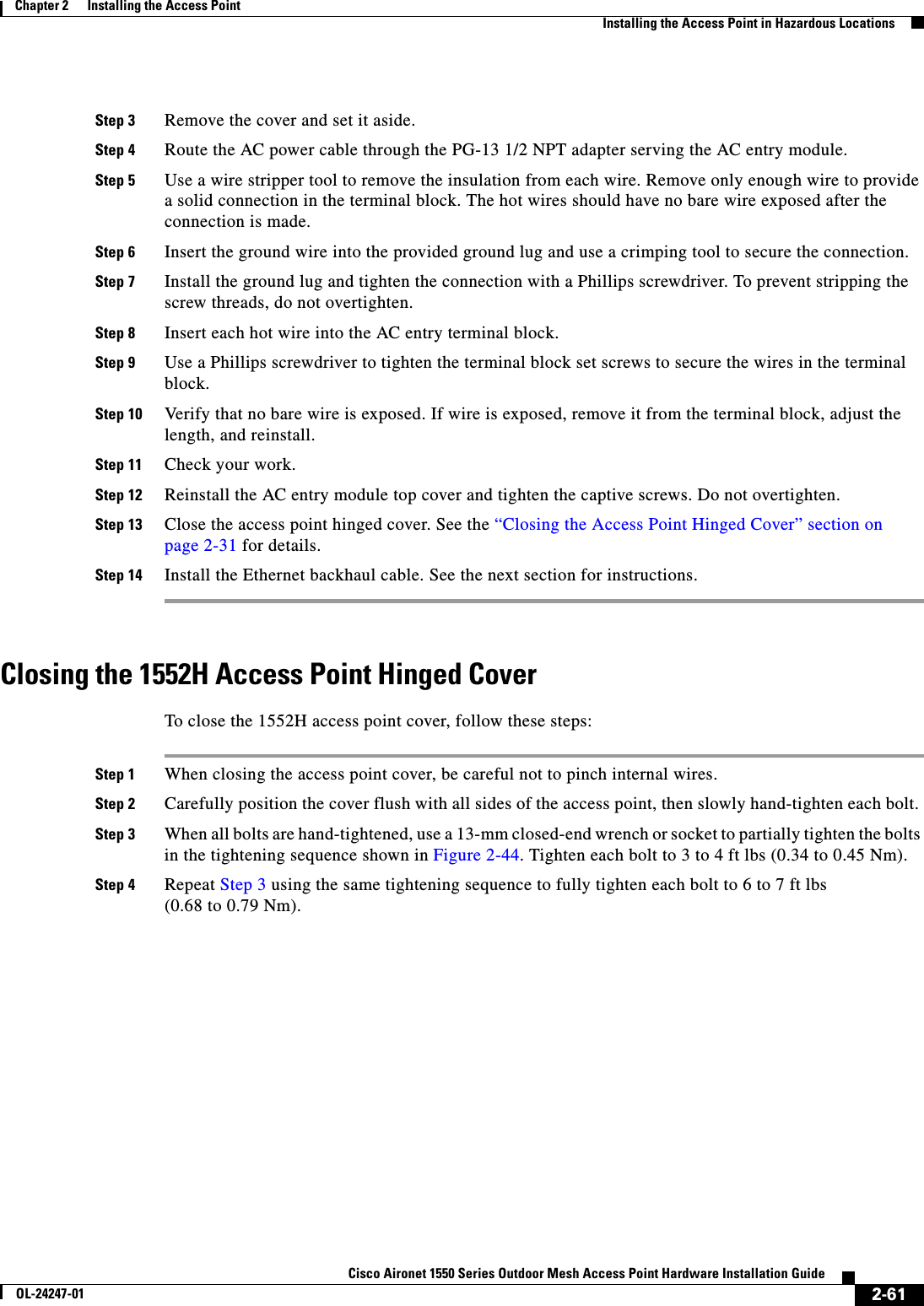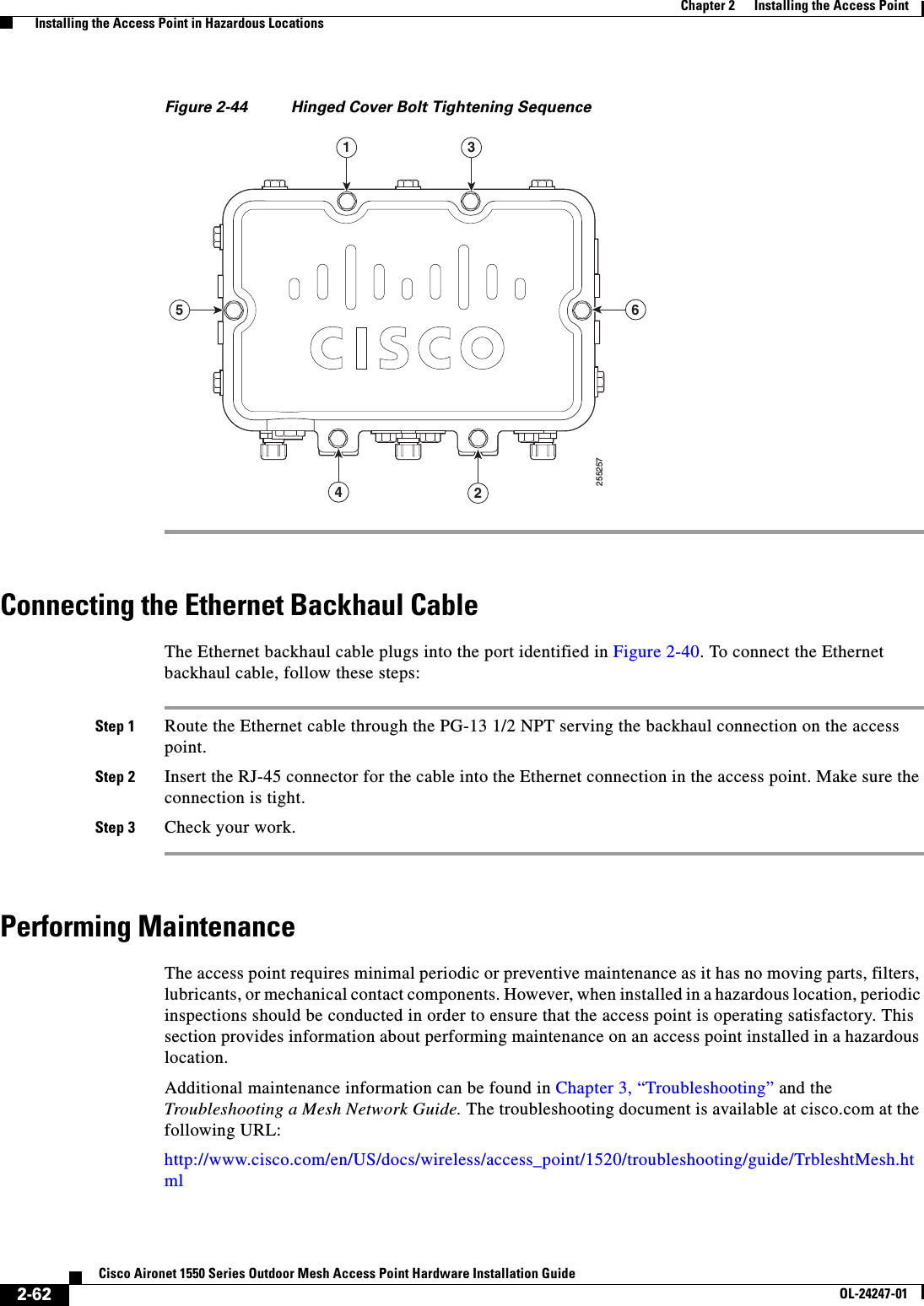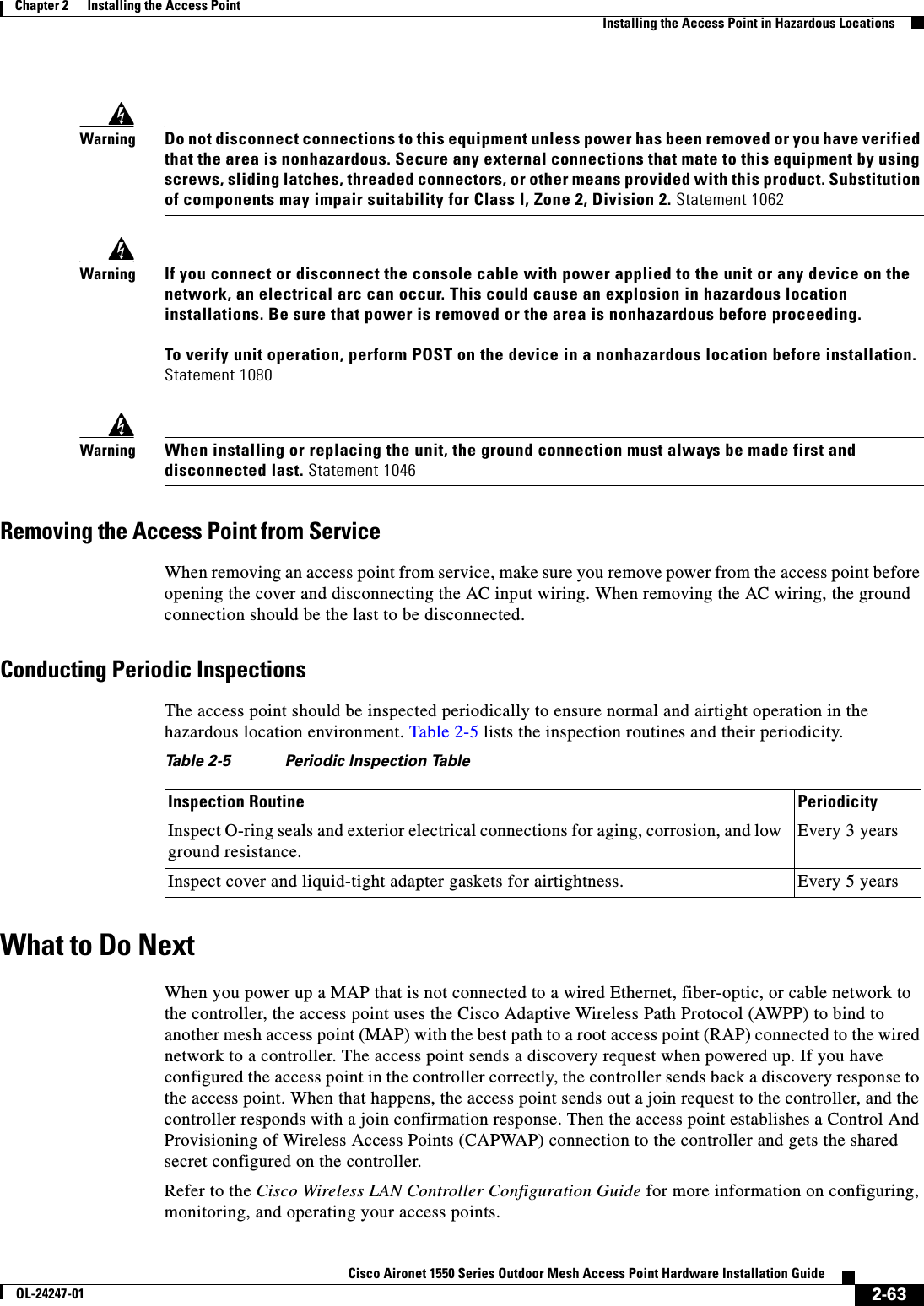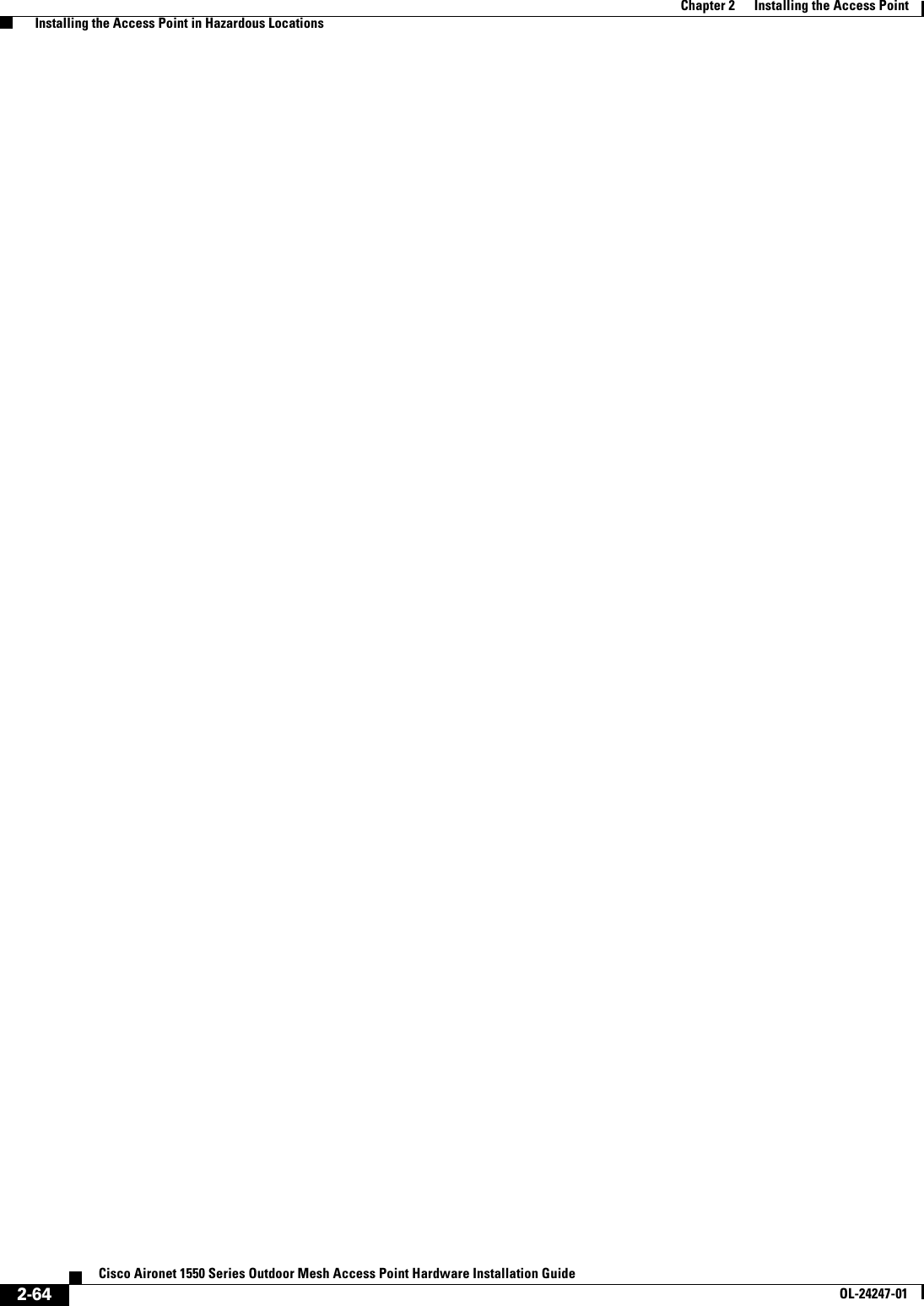Cisco Systems 102074P Cisco Aironet 802.11n Dual Band Mesh Access Points User Manual 1550 ch2
Cisco Systems Inc Cisco Aironet 802.11n Dual Band Mesh Access Points 1550 ch2
Contents
- 1. User manual
- 2. manual
- 3. Installation Instructions
- 4. Manual
- 5. User Manual
Installation Instructions
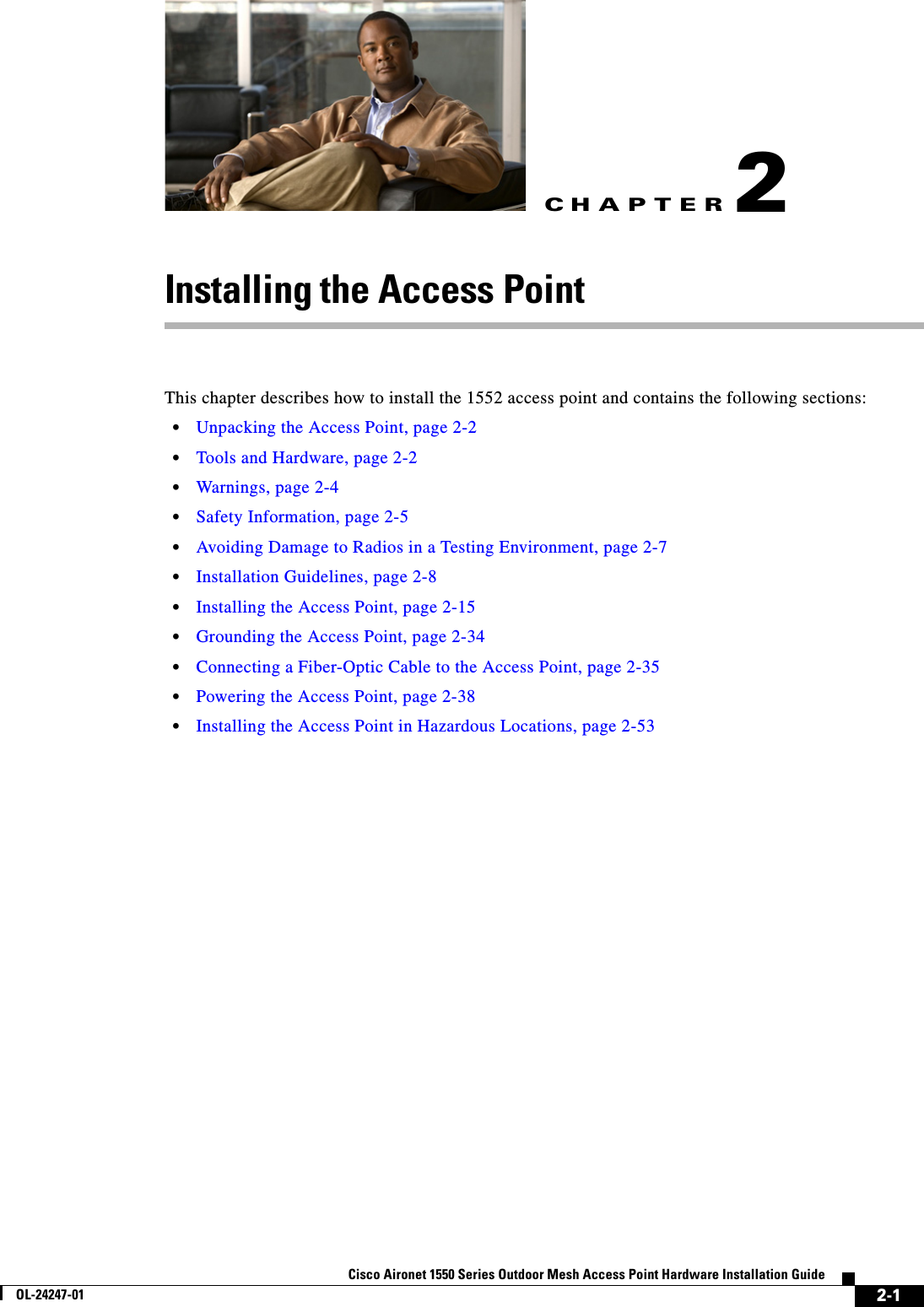
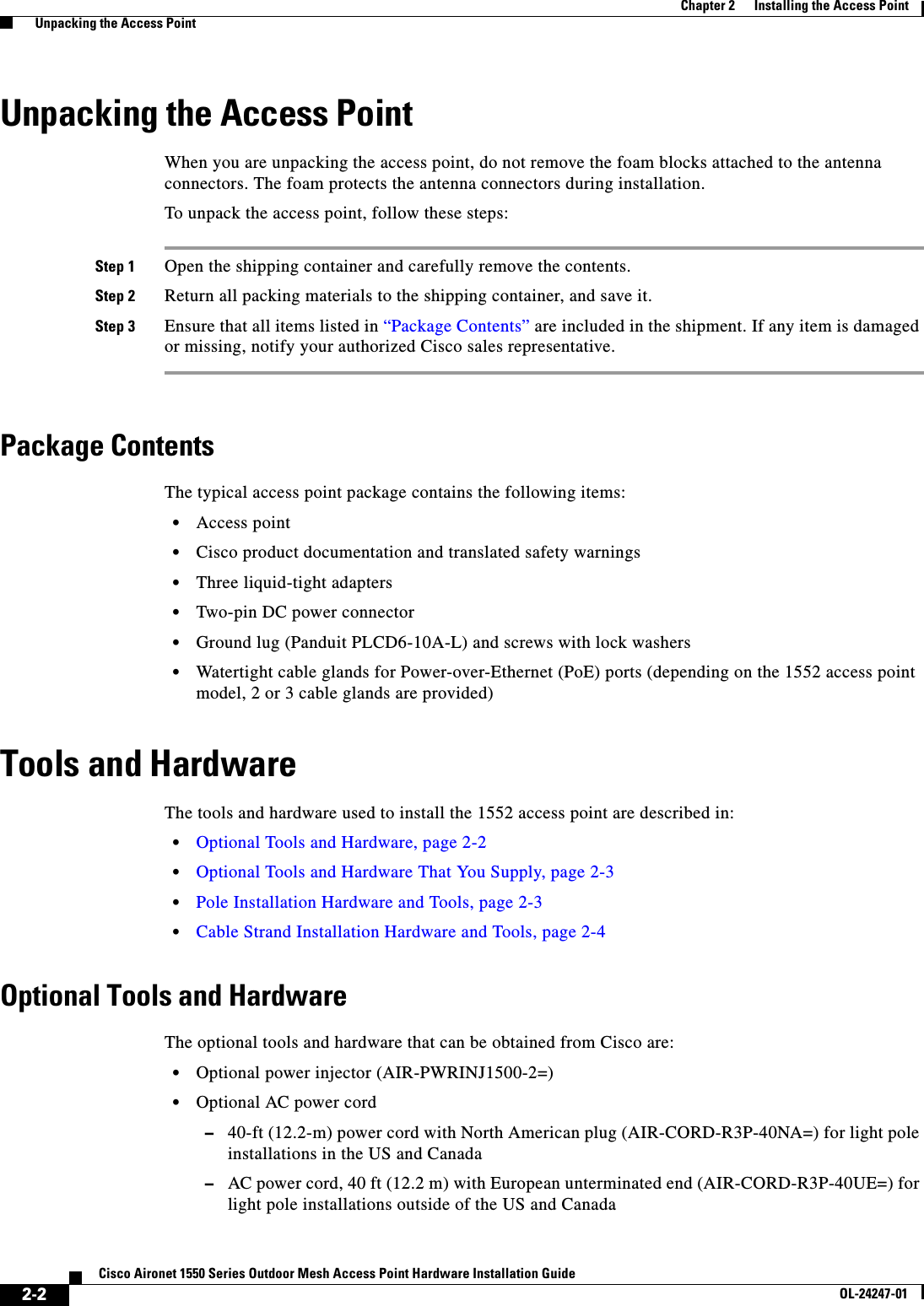
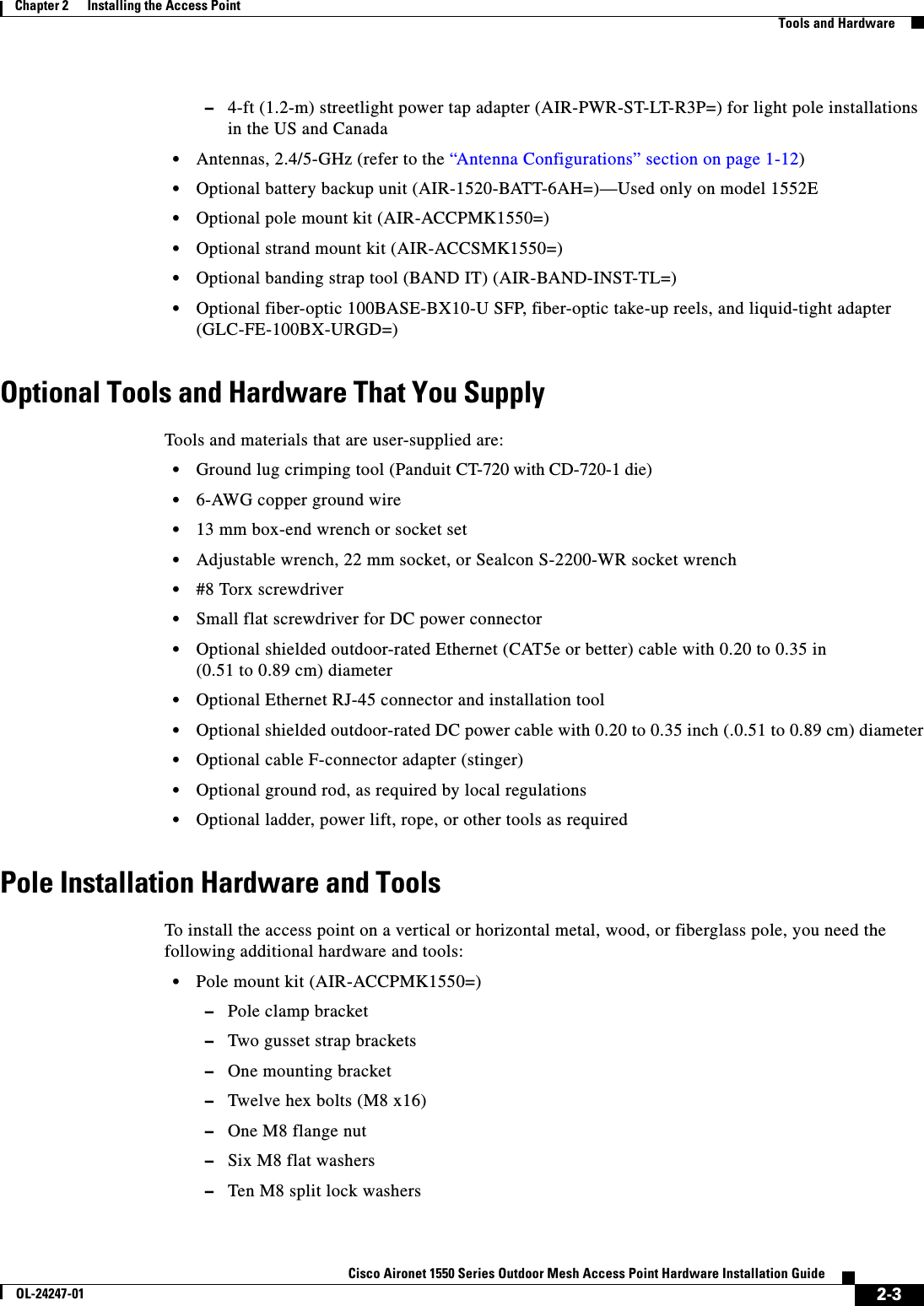
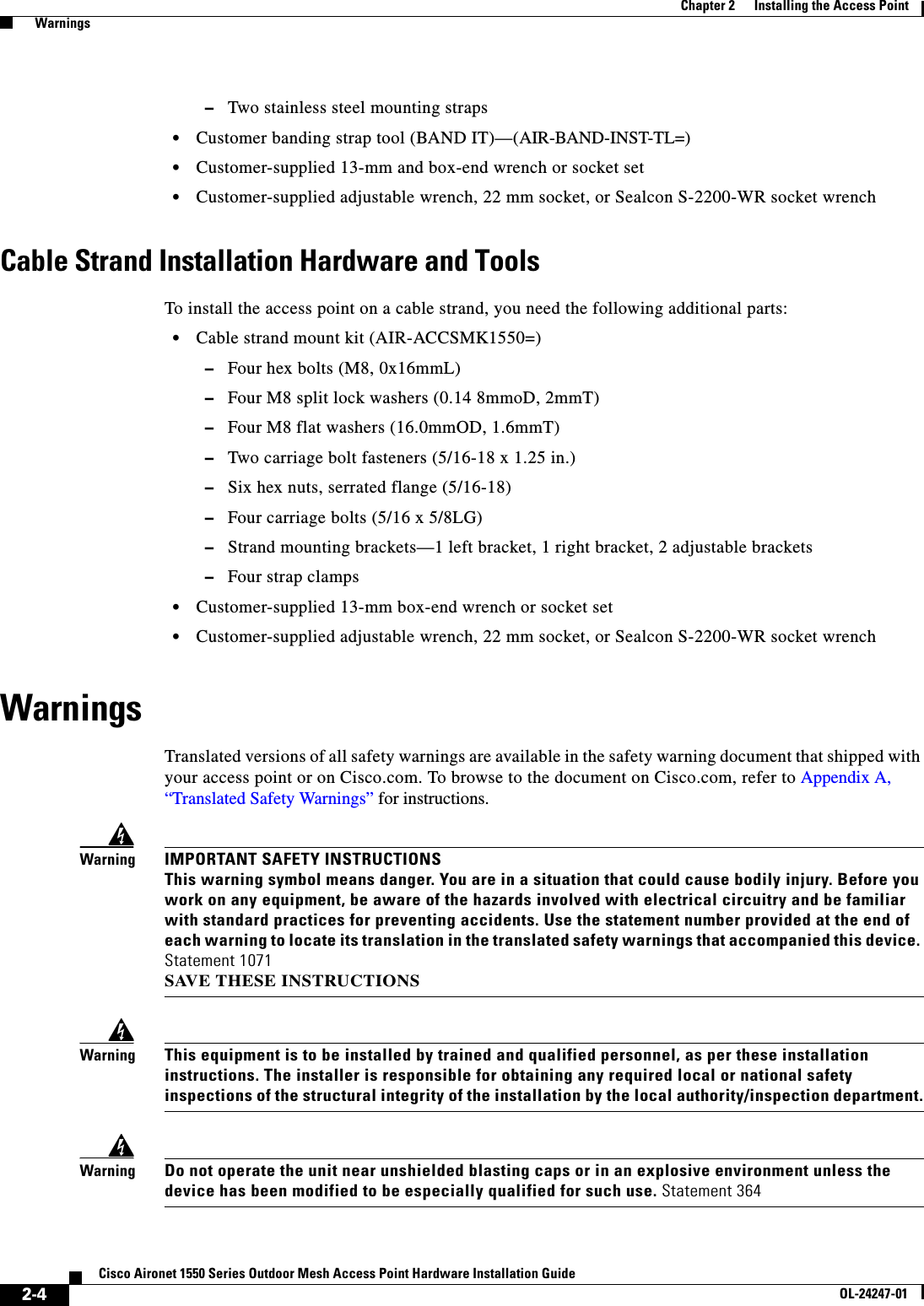
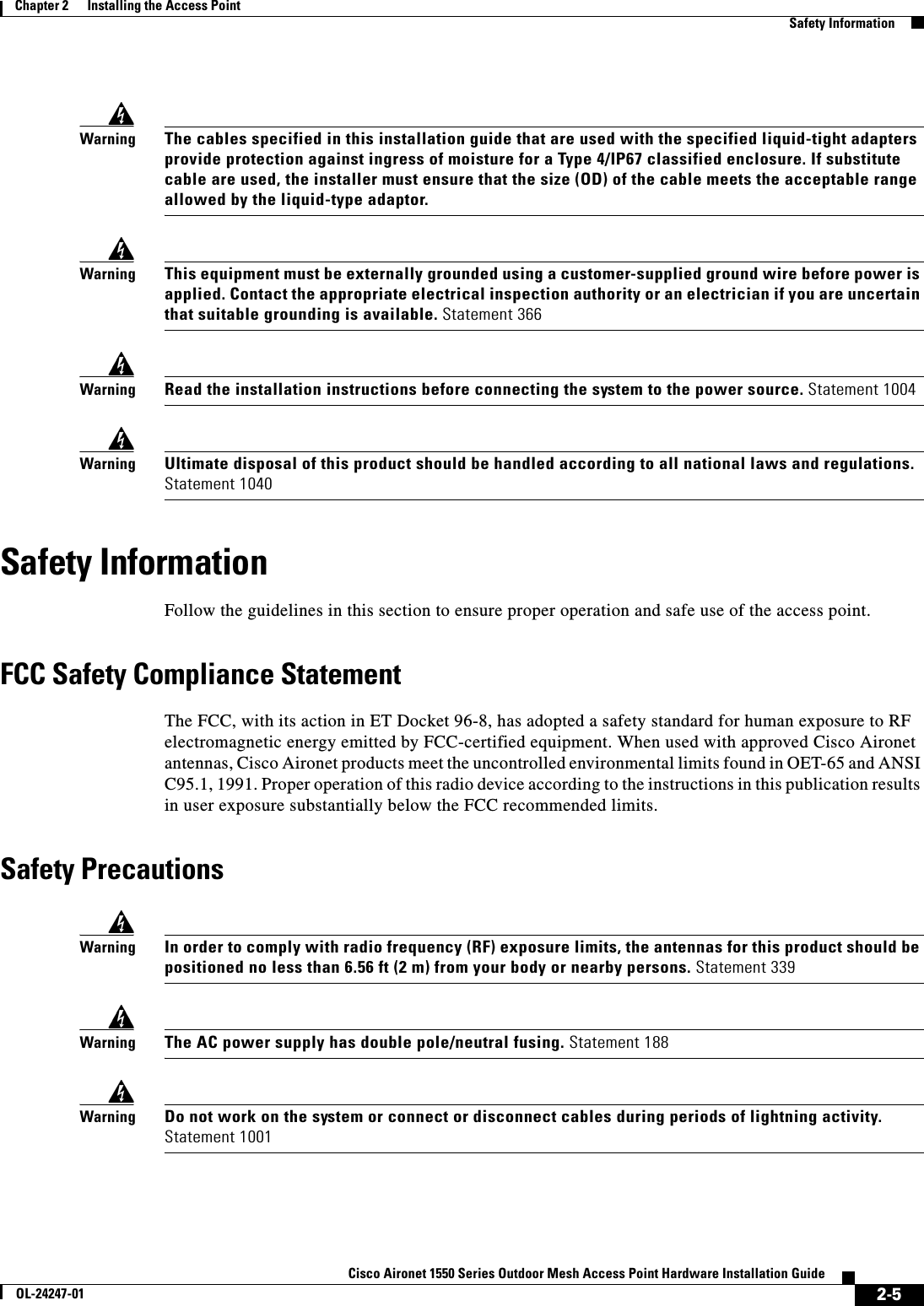
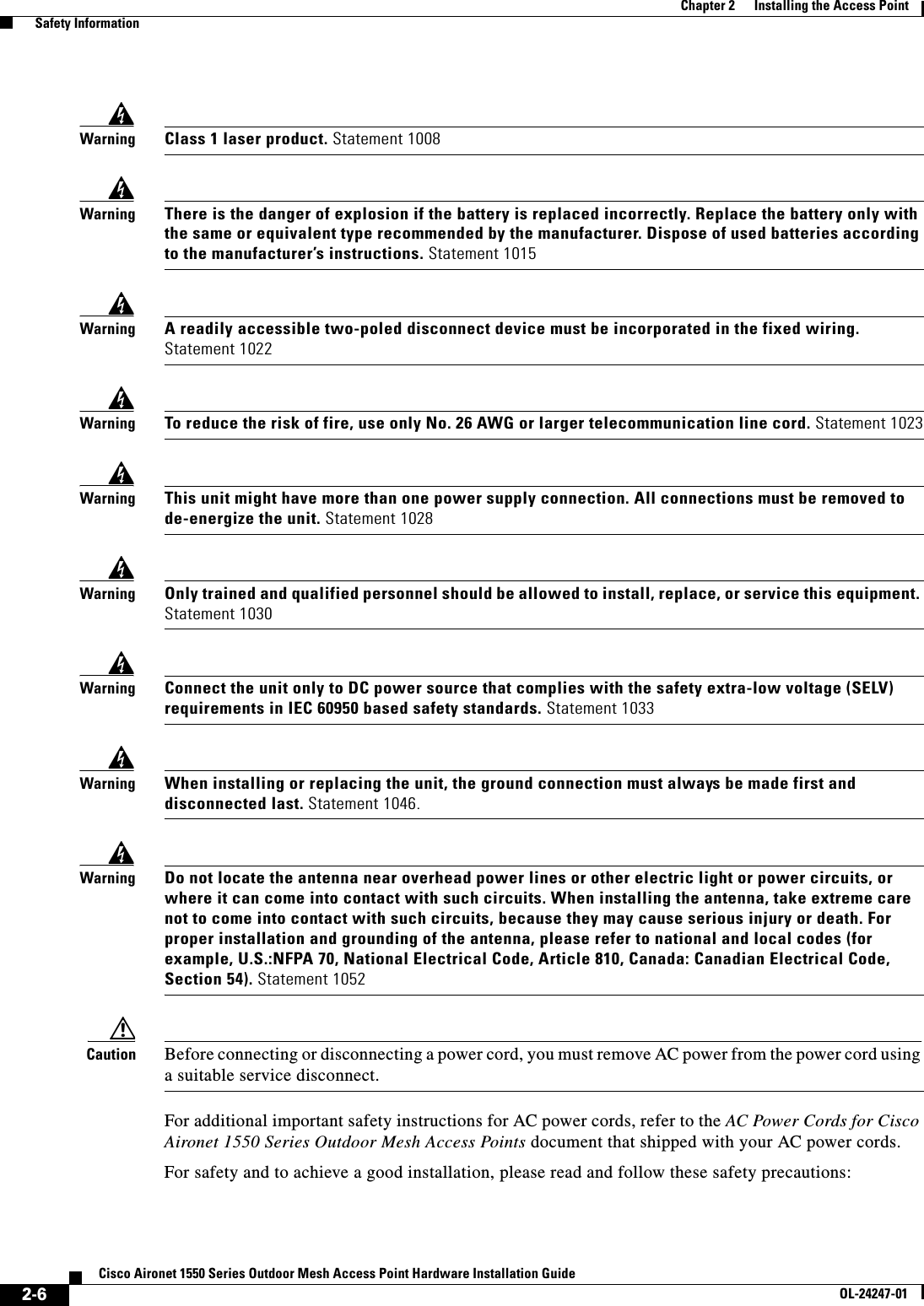
![2-7Cisco Aironet 1550 Series Outdoor Mesh Access Point Hardware Installation GuideOL-24247-01Chapter 2 Installing the Access Point Avoiding Damage to Radios in a Testing Environment•Select your installation site with safety, as well as performance in mind. Remember: electric power lines and phone lines look alike. For safety, assume that any overhead line can kill. •Call your electric power company. Tell them your plans, and ask them to come look at your proposed installation. •Plan your installation carefully and completely before you begin. Successful raising of a mast or tower is largely a matter of coordination. Each person should be assigned to a specific task and should know what to do and when to do it. One person should be in charge of the operation to issue instructions and watch for signs of trouble.•When installing the access point and antennas, remember:–Do not use a metal ladder.–Do not work on a wet or windy day.–Do dress properly—shoes with rubber soles and heels, rubber gloves, long sleeved shirt or jacket.•Use a rope to lift the access point. If the assembly starts to drop, get away from it and let it fall. •If any part of the antenna system should come in contact with a power line, do not touch it or try to remove it yourself. Call your local power company. They will remove it safely. If an accident should occur, call for qualified emergency help immediately.Avoiding Damage to Radios in a Testing EnvironmentThe radios on outdoor units (bridges) have higher transmit power levels than radios on indoor units (access points). When you test high-power radios in a link, you must avoid exceeding the maximum receive input level for the receiver. At levels above the normal operating range, packet error rate (PER) performance is degraded. At even higher levels, the receiver can be permanently damaged. To avoid receiver damage and PER degradation, you can use one of the following techniques:•Separate the omnidirectional antennas by at least 2 ft (0.6 m) to avoid receiver damage or by at least 25 ft (7.6 m) to avoid PER degradation.Note These distances assume free space path loss and are conservative estimates. Required separation distances for damage and performance degradation levels in actual deployments are less if conditions are not non-line-of-sight.•Reduce the configured transmit power to the minimum level.•Use directional antennas, and keep them away from each other.•Cable the radios together using a combination of attenuators, combiners, or splitters to achieve a total attenuation of at least 60 dB.For a radiated test bed, the following equation describes the relationships among transmit power, antenna gain, attenuation, and receiver sensitivity:txpwr + tx gain + rx gain - [attenuation due to antenna spacing] < max rx input levelWhere:txpwr = Radio transmit power leveltx gain = transmitter antenna gainrx gain = receiver antenna gain](https://usermanual.wiki/Cisco-Systems/102074P.Installation-Instructions/User-Guide-1542230-Page-7.png)
![2-8Cisco Aironet 1550 Series Outdoor Mesh Access Point Hardware Installation GuideOL-24247-01Chapter 2 Installing the Access Point Installation GuidelinesFor a conducted test bed, the following equation describes the relationships among transmit power, antenna gain, and receiver sensitivity:txpwr - [attenuation due to coaxial components] < max rx input levelCaution Under no circumstances should you connect the antenna port from one access point to the antenna port of another access point without using an RF attenuator. If you connect antenna ports, you must not exceed the maximum survivable receive level of 0 dBm. Never exceed 0 dBm, or damage to the access point can occur. Using attenuators, combiners, and splitters having a total of at least 60 dB of attenuation ensures that the receiver is not damaged and that PER performance is not degraded.Installation GuidelinesBecause the access point is a radio device, it is susceptible to common causes of interference that can reduce throughput and range. Follow these basic guidelines to ensure the best possible performance:•For information on planning and initially configuring your Cisco Mesh network, refer to the Cisco Wireless Mesh Access Points, Design and Deployment Guide, Release 7.0.•Review the FCC guidelines for installing and operating outdoor wireless LAN devices at http://www.cisco.com/en/US/partner/prod/collateral/routers/ps272/data_sheet_c78-647116_ps11451_Products_Data_Sheet.html.•Perform a site survey before beginning the installation.•Install the access point in an area where structures, trees, or hills do not obstruct radio signals to and from the access point.•The access points can be installed at any height, but best throughput is achieved when all the access points are mounted at the same height. We recommend installing the access points no higher than 40 feet to allow support for wireless clients on the ground.Note To calculate path loss and to determine how far apart to install access points, consult an RF planning expert.Site SurveysEvery network application is a unique installation. Before installing multiple access points, you should perform a site survey to determine the optimum use of networking components and to maximize range, coverage, and network performance.Consider the following operating and environmental conditions when performing a site survey:•Data rates—Sensitivity and range are inversely proportional to data bit rates. The maximum radio range is achieved at the lowest workable data rate. A decrease in receiver sensitivity occurs as the radio data increases.•Antenna type and placement—Proper antenna configuration is a critical factor in maximizing radio range. As a general rule, range increases in proportion to antenna height. However, do not place the antenna higher than necessary, because the extra height also increases potential interference from other unlicensed radio systems and decreases the wireless coverage from the ground.•Physical environment—Clear or open areas provide better radio range than closed or filled areas.](https://usermanual.wiki/Cisco-Systems/102074P.Installation-Instructions/User-Guide-1542230-Page-8.png)
